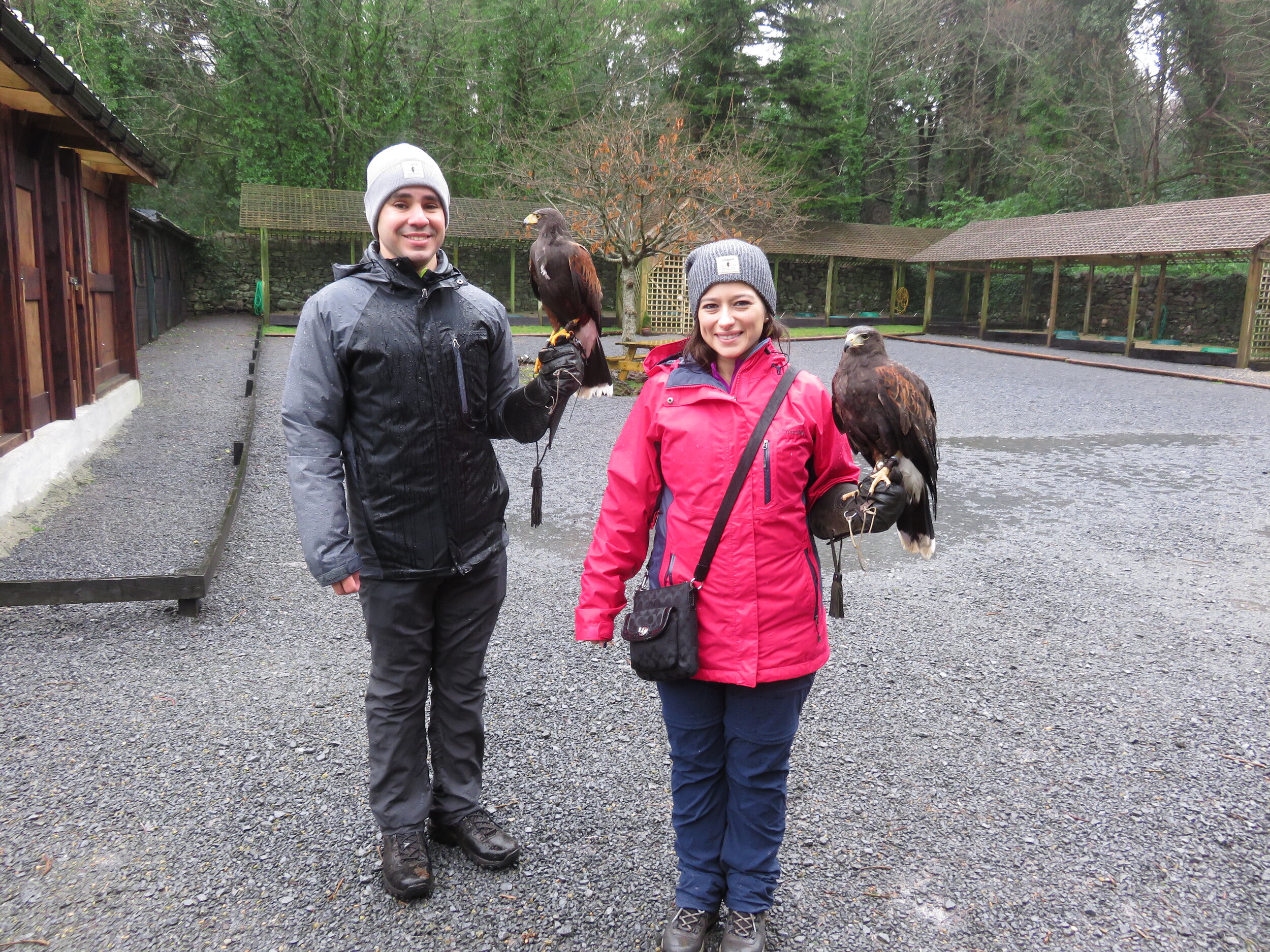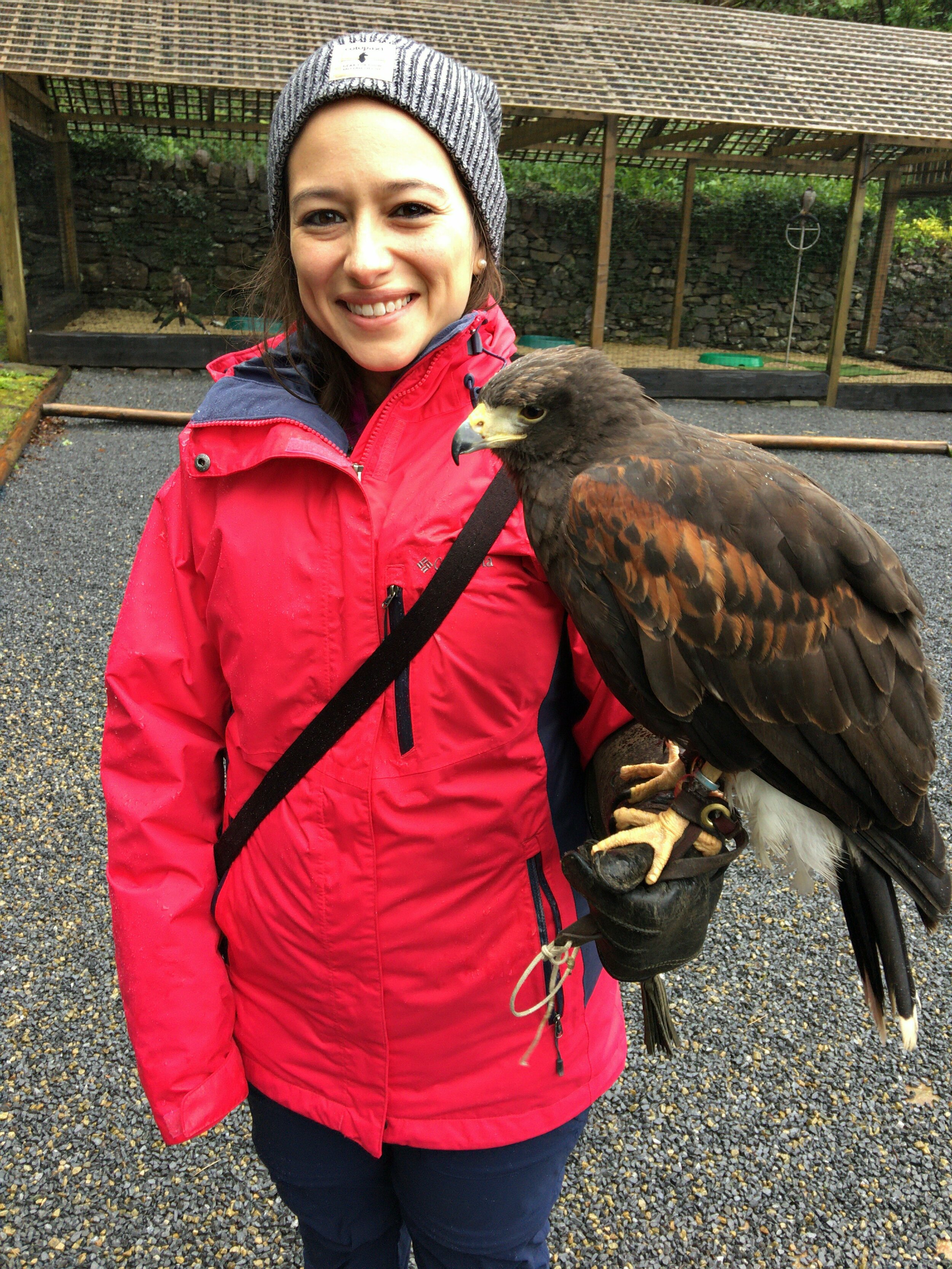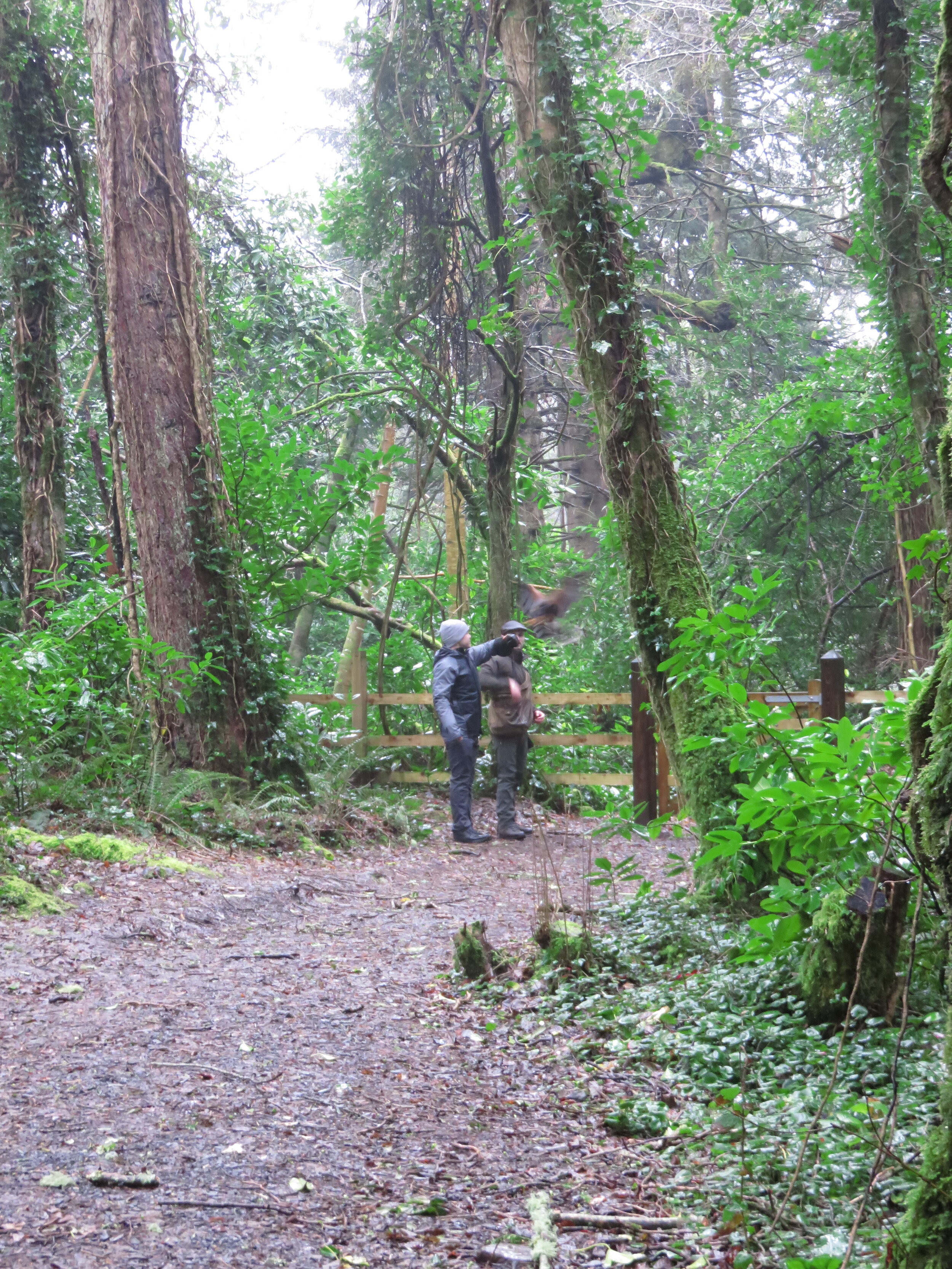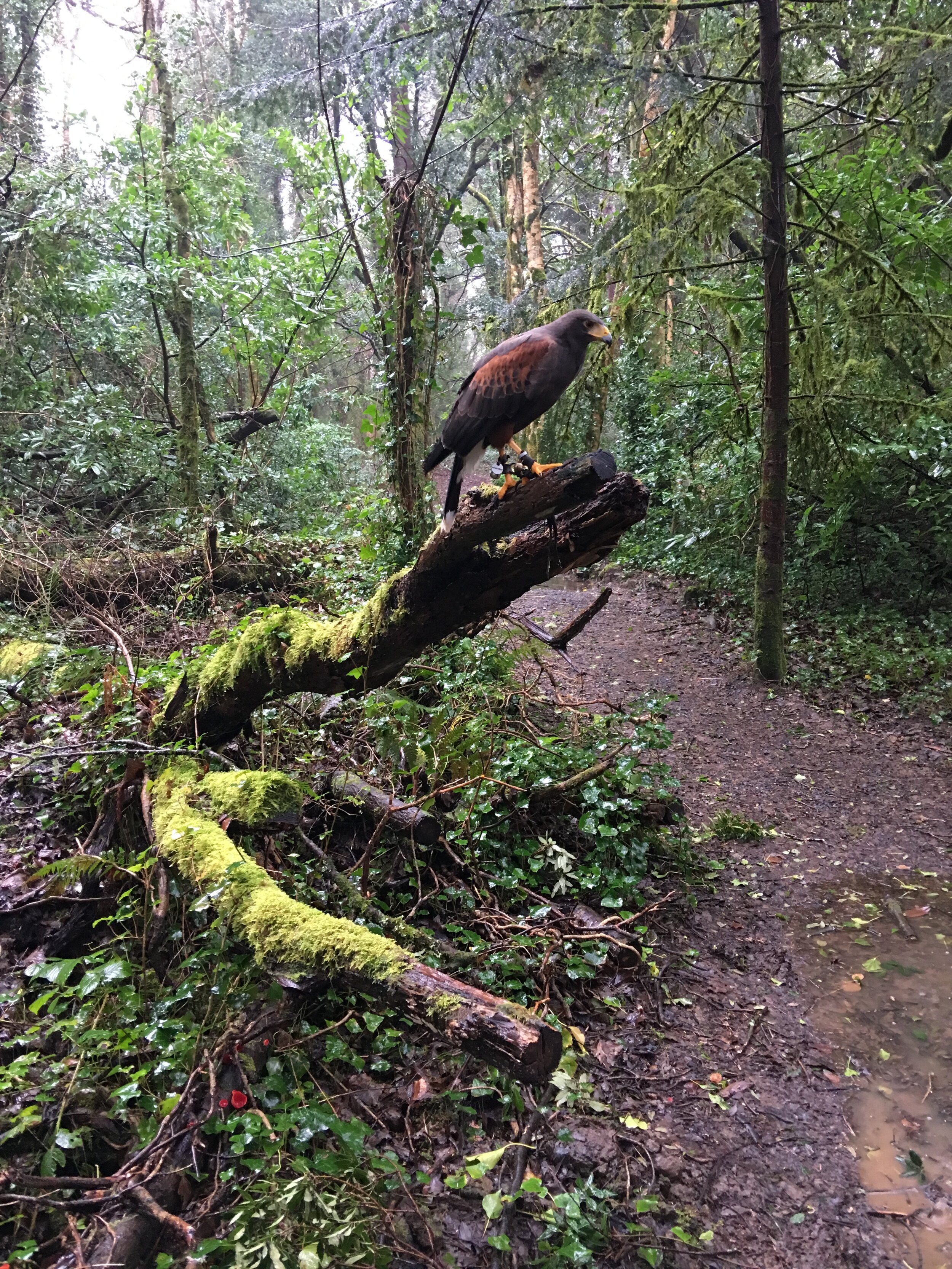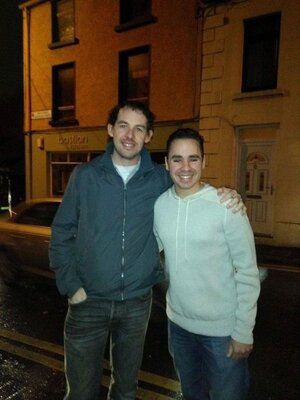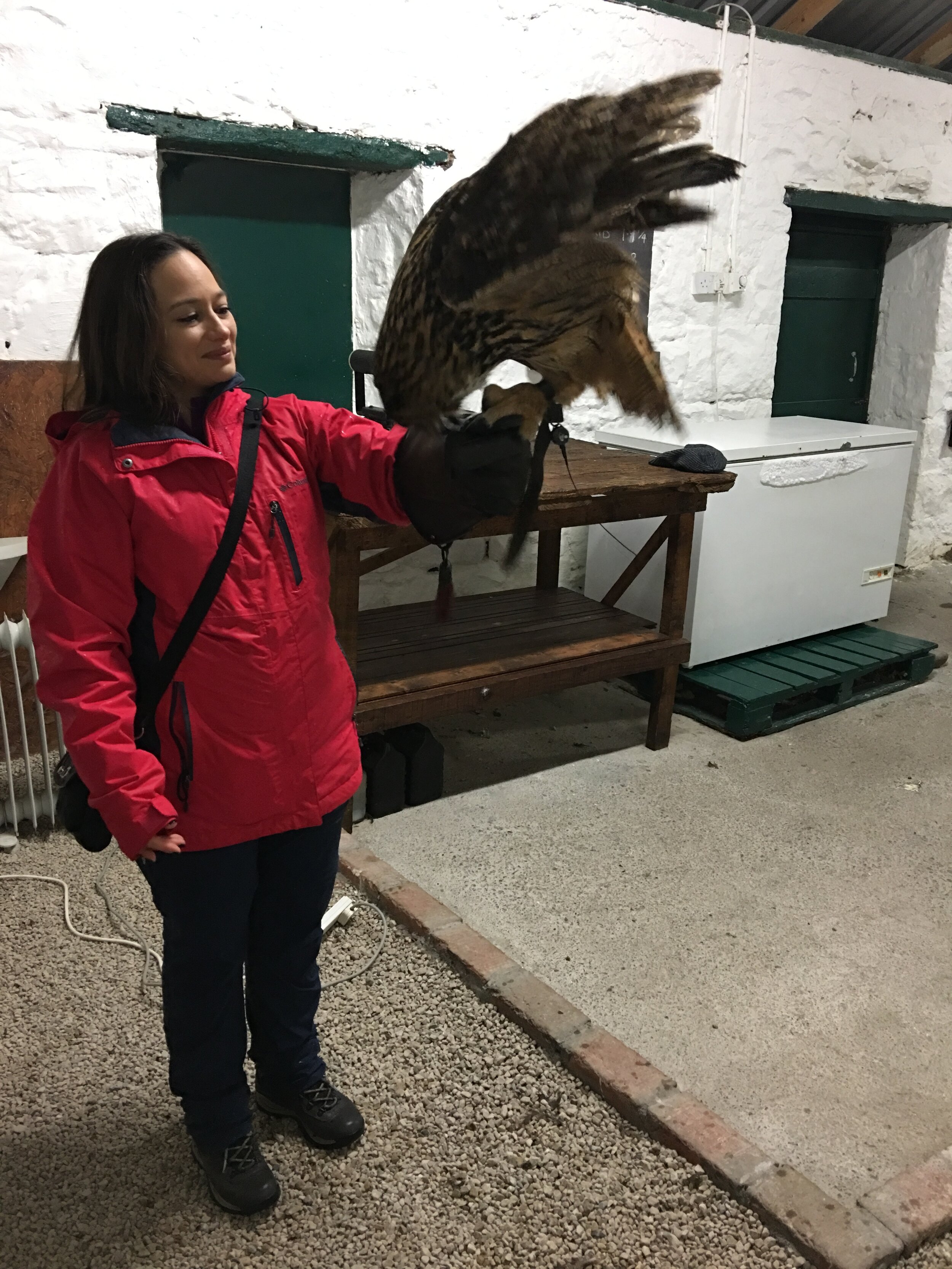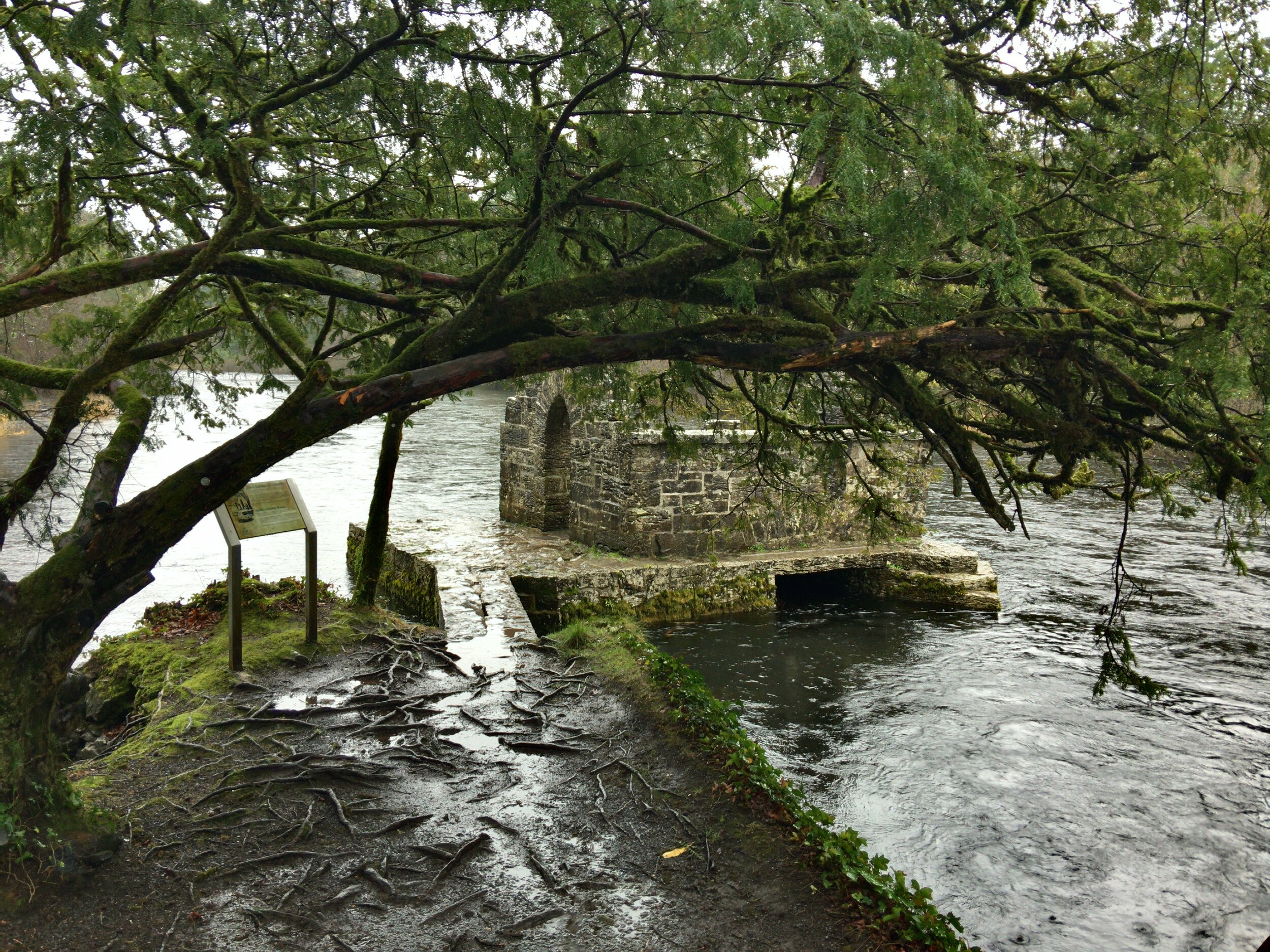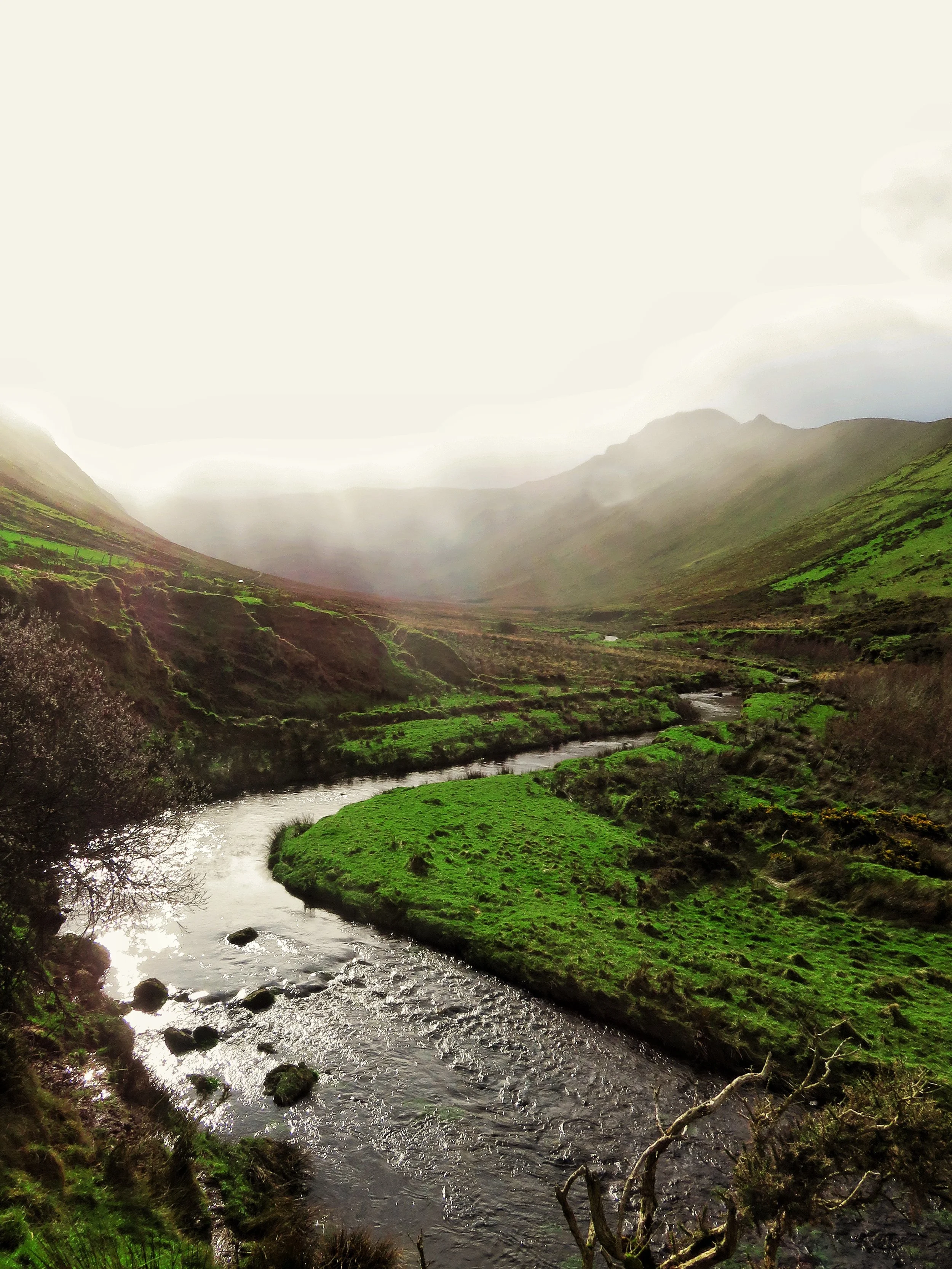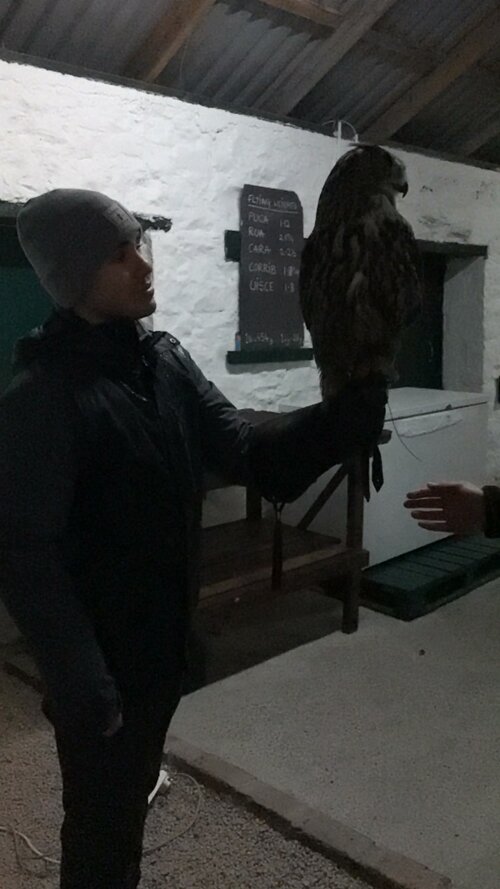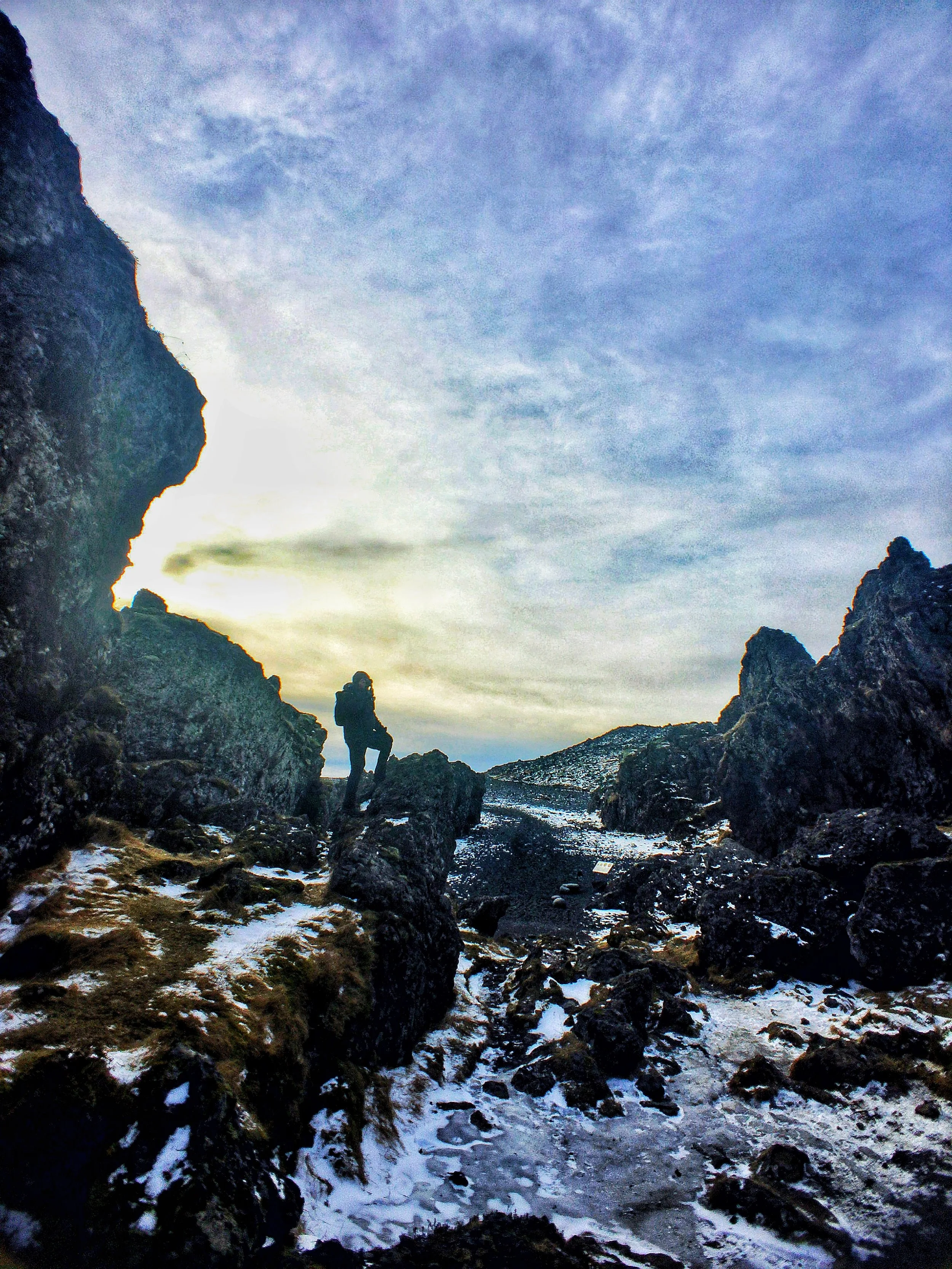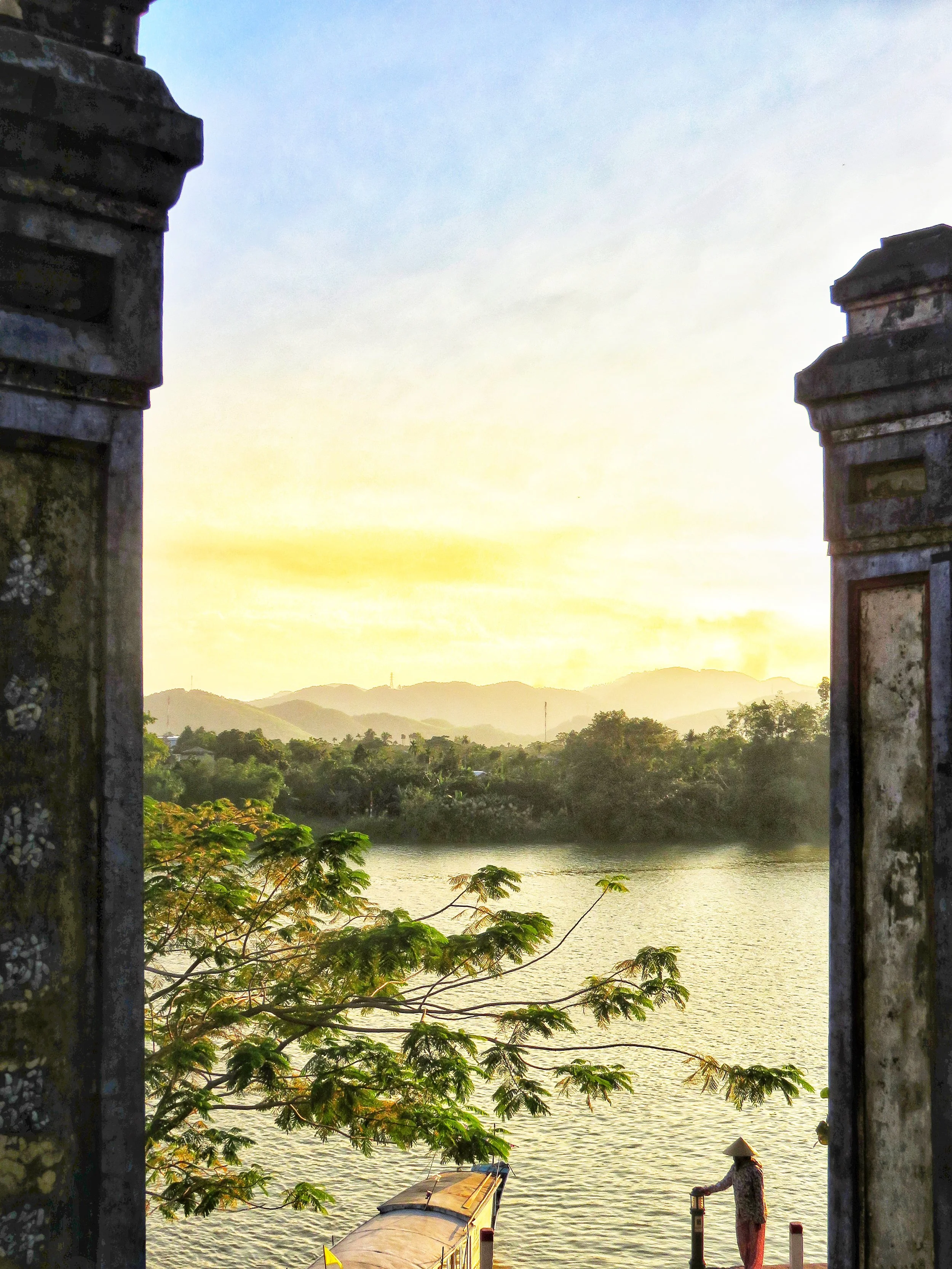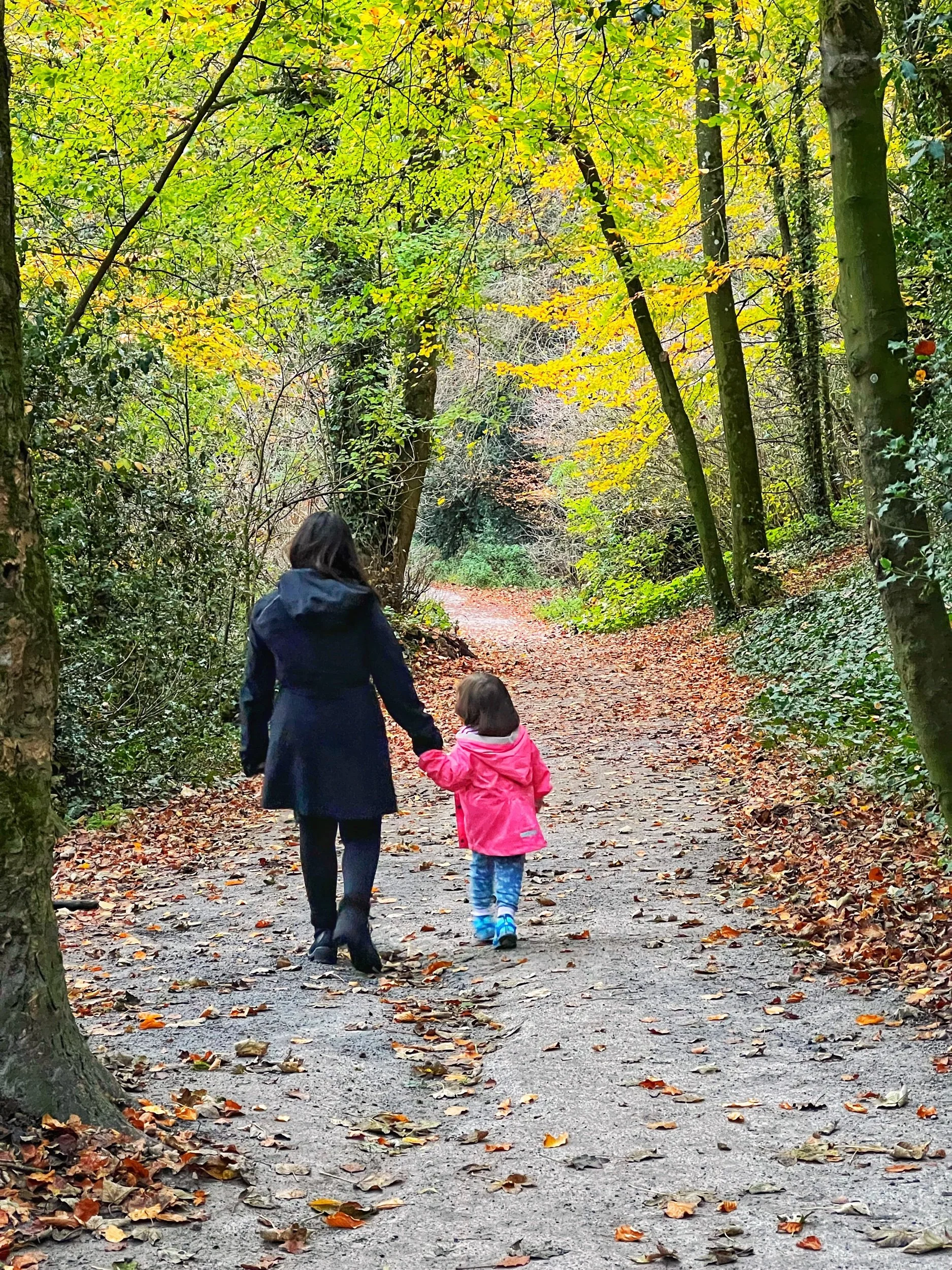Ireland (2017) - A Walk Through Hibernia
Day One:
“Of Airports & Cancelled Flights”
The day had finally arrived. After months of planning and preparation, our trip back to Ireland was here. Cynthia was only a few hours from having returned from her field trip to Washington, D.C.; nevertheless, we both woke up early to tie up loose ends and make sure we were ready to go.
My Mom gave us a last-minute visit to the apartment before Paco (Cynthia’s Dad) drove us to FLL.
Security went smoothly, and we quickly found our gate. This is where the fun began:
Our flight was supposed to leave at 12:20pm. Suddenly the flight had become delayed until 1:00pm. Then it was delayed until 1:30pm. Then it was delayed until 2:00pm. At this point, we were concerned because our connecting flight to Dublin would leave Newark at 5:15pm. It seemed we would be missing our connecting flight.
As we spoke with JetBlue agents, it was then made clear our original flight to Newark was canceled altogether. This sent us, and the rest of our fellow passengers into a bit of a whirl. Thankfully, we had anticipated this and were already talking to JetBlue agents. Where those around us were yelling and cursing at the agents - We peacefully tried to work out a solution.
We'll be honest, we were both angry. I was especially angry since this change meant we would not be able to visit Kilmainham Gaol, an old prison in Dublin that is rich with history. Additionally, it would mean we would subtract one day in Ireland. We would lose money on a day of lodging as well. Emails and text messages were sent to try and salvage as much as we could.
The only viable solution the agents could come up with was to have us go on a 6:00pm flight to Newark, spend the night in Newark, and then Saturday at 5:15pm take a flight to Dublin. So we have one less day in Ireland, but now we get a day in New York City. This means Cheesecake at Juniors in Grand Central Station. Silver lining!
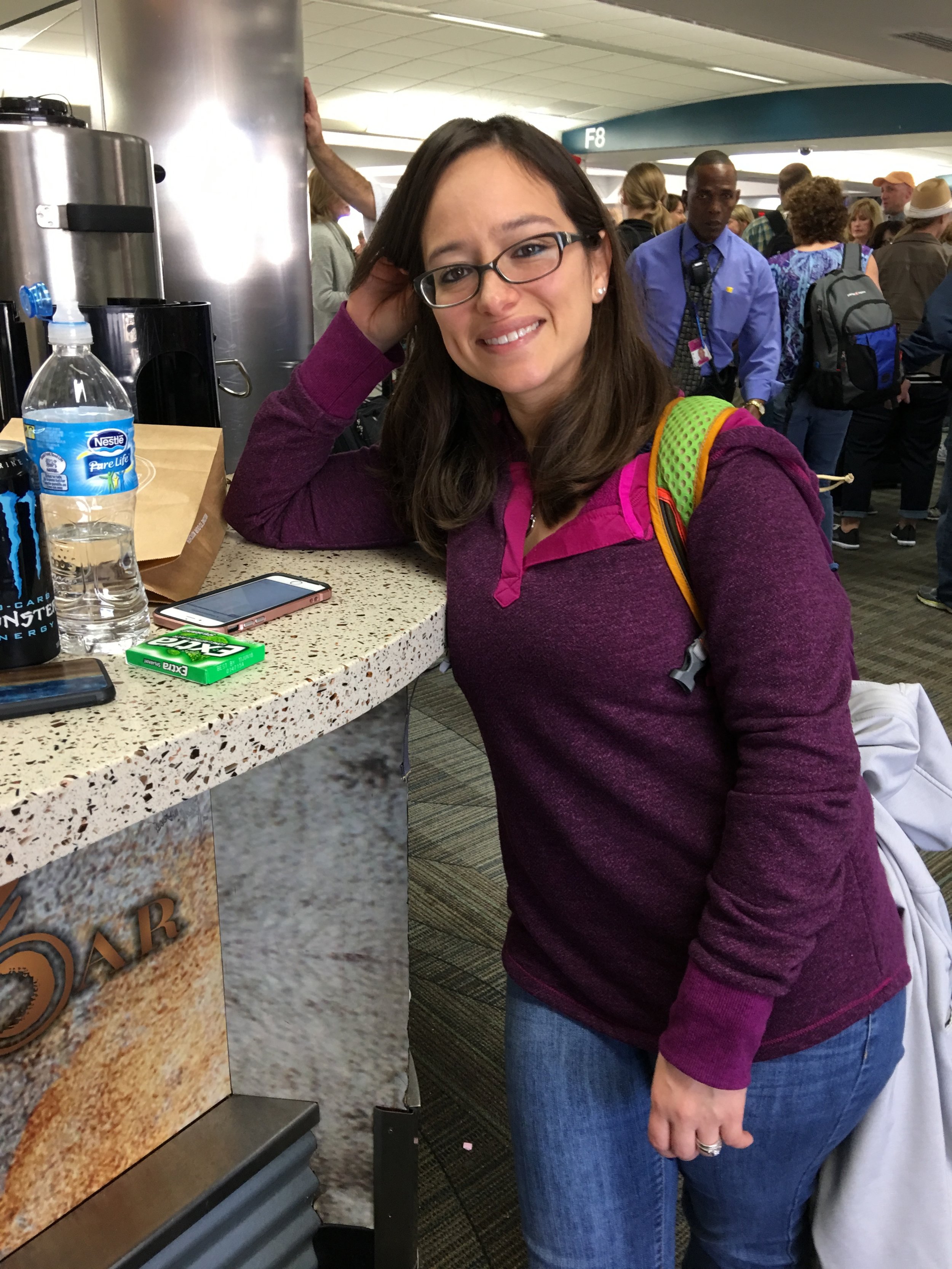
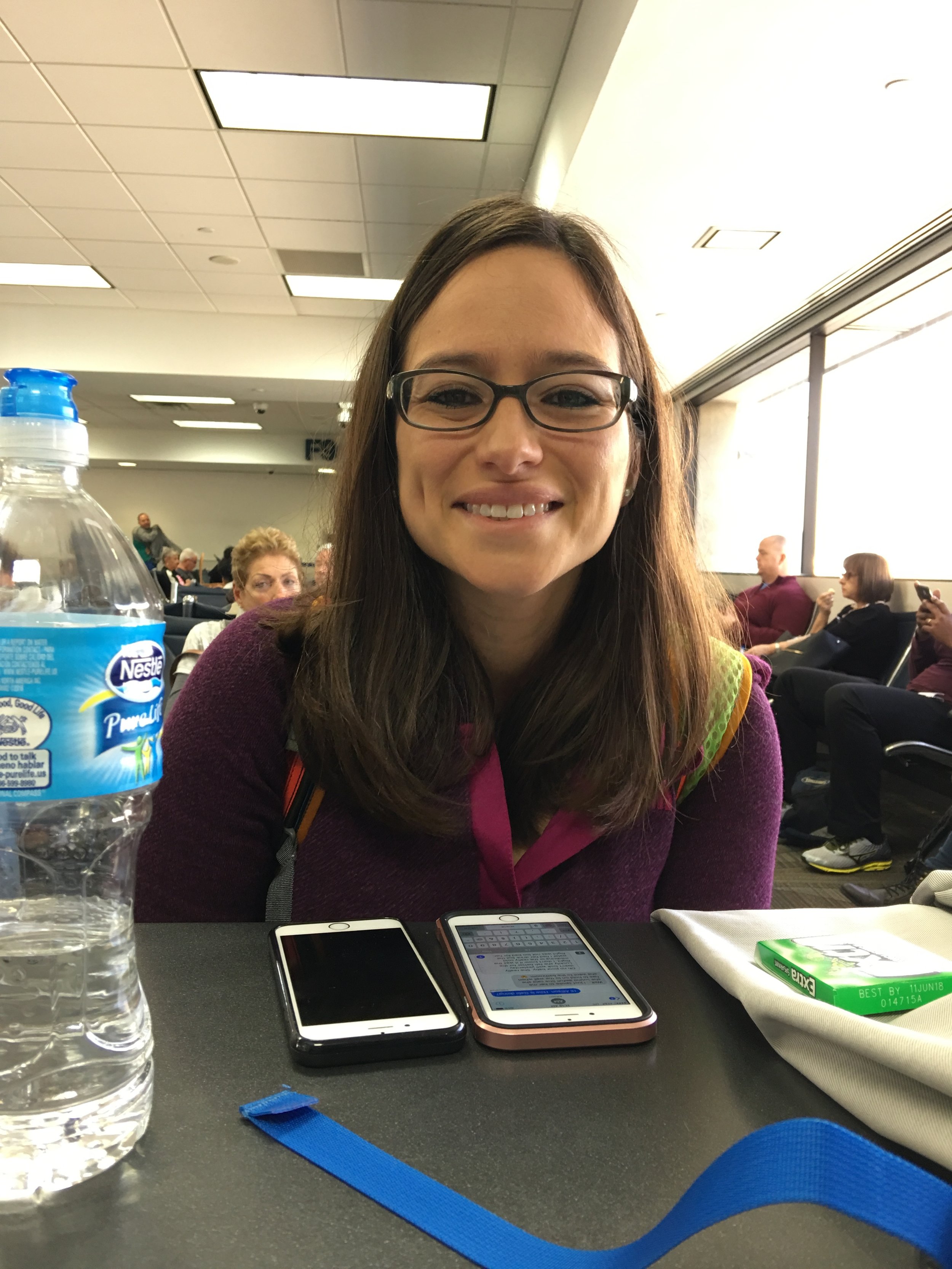
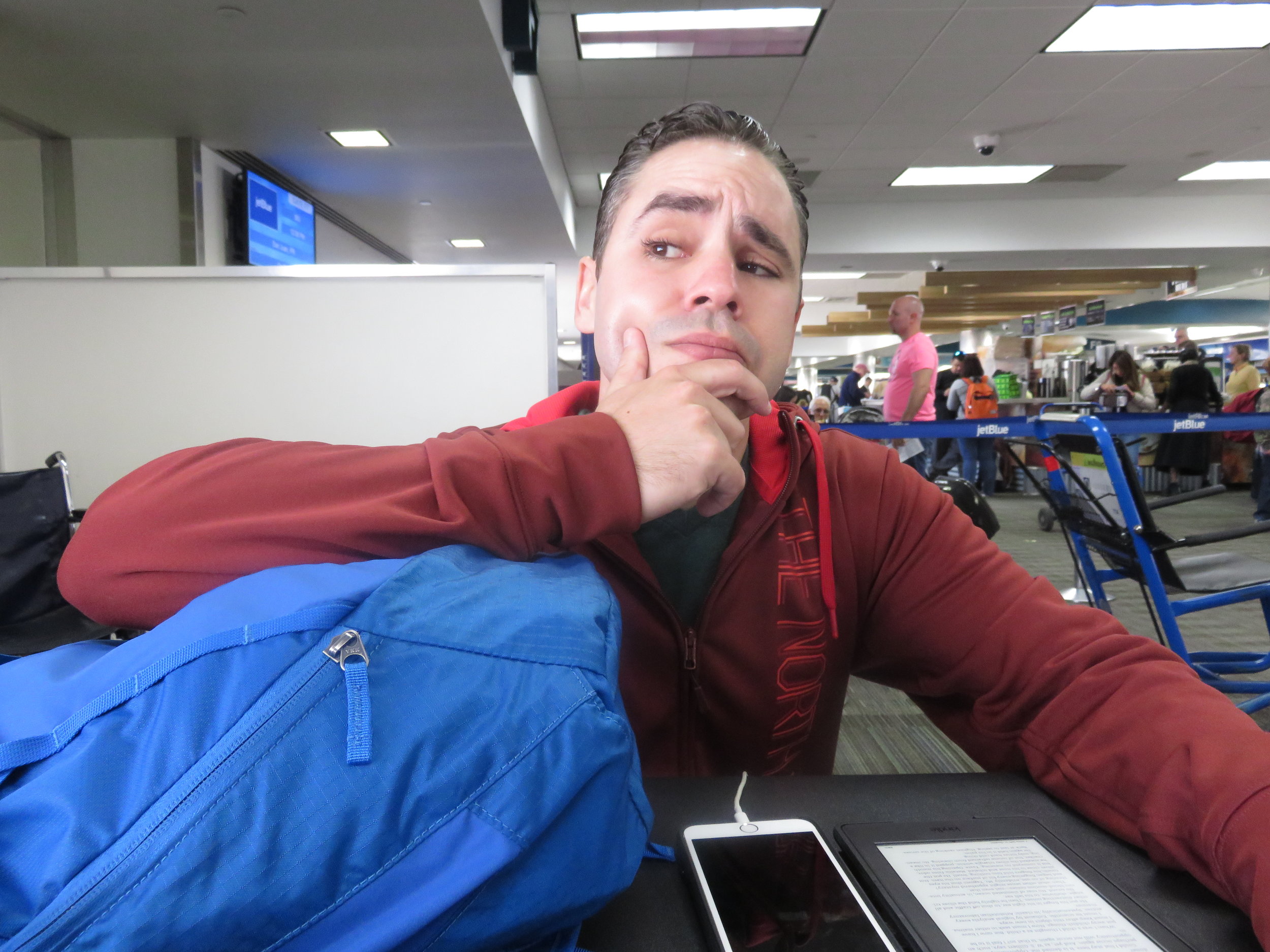

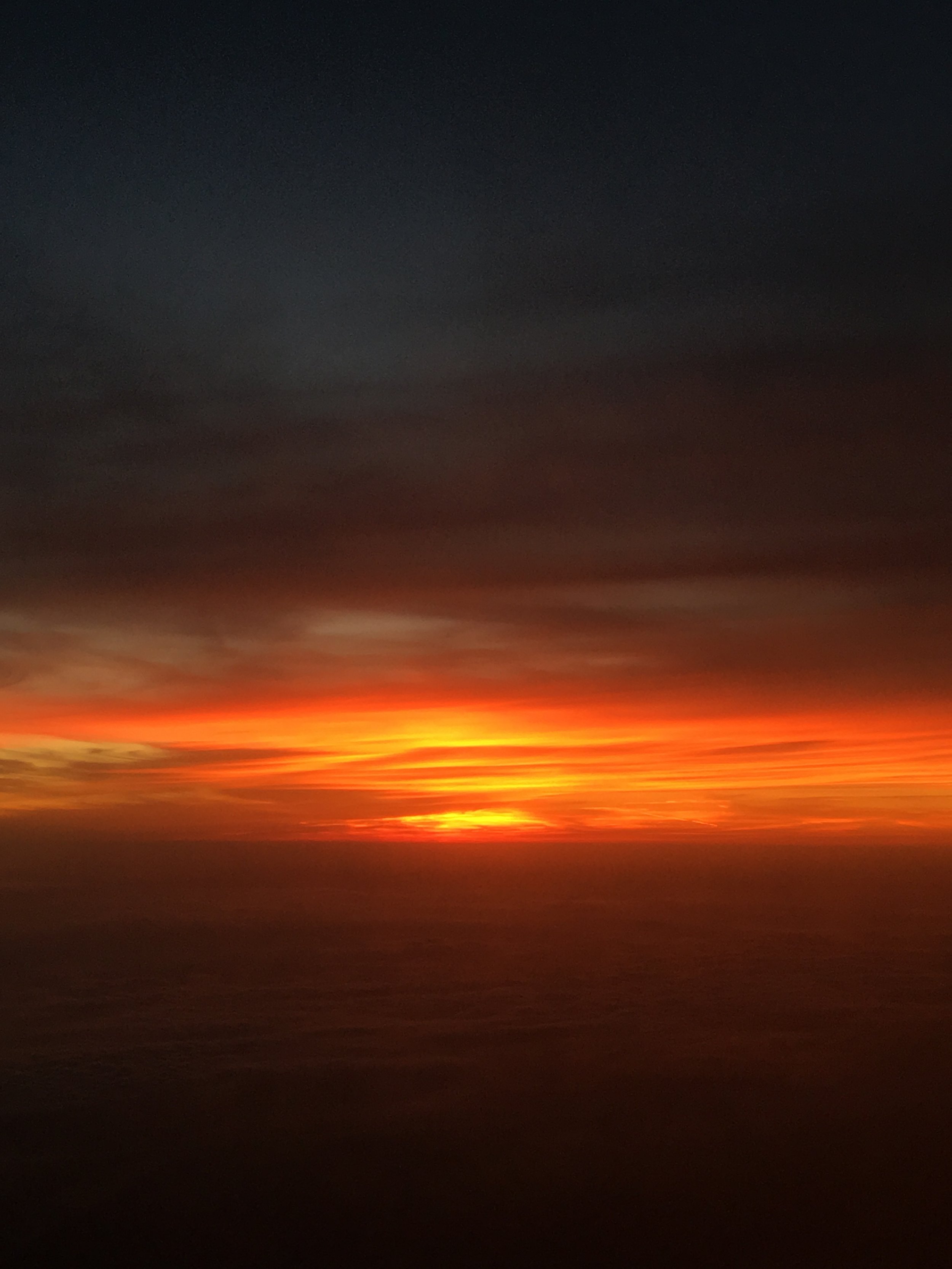
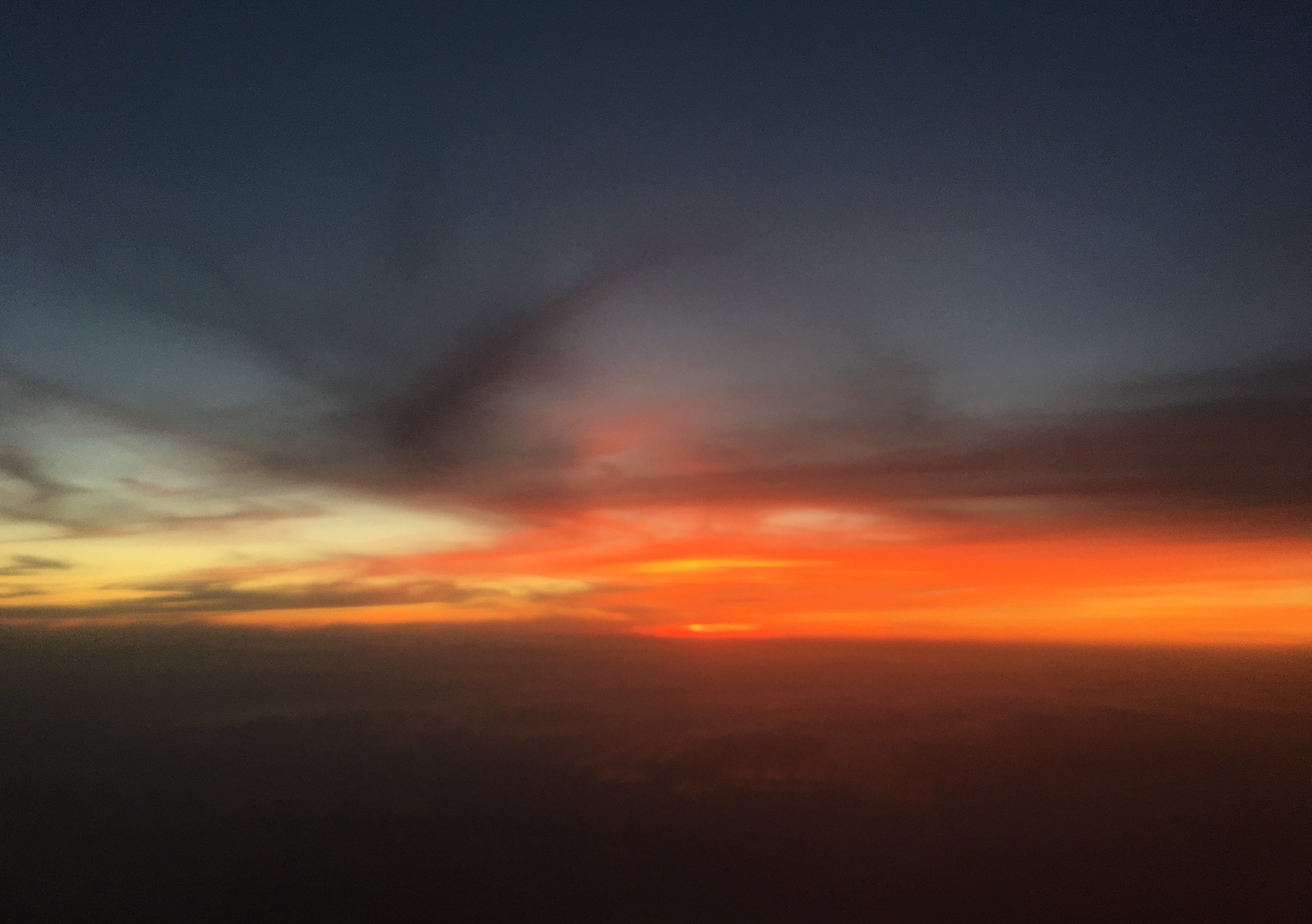
Day Two:
“Of Botched Flights and German Layovers”
We woke up in Newark refreshed and ready to make it to Dublin! We decided against going into Manhattan, to be able to get to the airport early in case there were any issues. Cynthia got her nails done at a small little salon, and we also found a grill named "Bello's."
Arriving at the airport, we were an hour and fifteen minutes too early. We sat and waited. Once Aer Lingus set up shop, we approached the ticket desk, only to be told that we did not have tickets. They still had us on the Friday flight (which we missed) and has no indication that JetBlue in Fort Lauderdale ever made alternate arrangements for us.
We took a train and walked to JetBlue. They, in fact, confirmed to us that the agent in FLL only confirmed a change of itinerary on JetBlue's side, not Aer Lingus. So, in essence, the confirmation didn't mean anything, it was mostly JetBlue acknowledging they wanted to do something. We took a train to Aer Lingus to see what we could do, they said they couldn't do anything. We took a train and went back to JetBlue - there they informed us that the quickest way to Dublin was flying to Frankfurt Germany, then to Dublin. We took it. The trials and back and forth and frustration weighed heavy on us; both tired and emotional. This new arrangement would get us to Dublin a day and a half late, meaning we would miss Kilmainham Gaol, Irish Storyteller Dinner, and Wicklow Mountain tour.
The flight to Frankfurt was uncomfortable. Nevertheless, we made it. From there, we walked close to five miles from Terminal A to Terminal B and through security where they had me take everything out of my bag because when they say “take out electronics,” apparently they mean TAKE OUT EVERYTHING.
We then hopped a flight to Dublin, where we finally arrived: over 48 hours after our intended arrival time. We know it seems short in these few paragraphs, but exhaustion and the desire to not have to recount these last two days made me brief. In reality, the previous 48 hours were trying, frustrating, enraging, disappointing, depressing, etc.
Upon arriving in Dublin, we met with Denis, our AirBnB host. He showed us to the apartment, which is tiny but atop a pub in the Temple Bar area. It's right smack in the middle of everything. We grabbed lunch at The Boxty House, where we had a delicious meal of chicken and steak wrapped in a special potato pancake called boxty. It was great. From there we got a SIM card for calling Irish numbers and then explored the city: going to Stephen's Green, Chester Beaty Library, and meandering around. Slowly though, exhaustion overtook us, and by 6:02pm Dublin time, we were ready for bed.
Tomorrow we get our rental car to make our way to Kilkenny, where we will meet Kay, our tour manager from two years ago. There we will have lunch together.
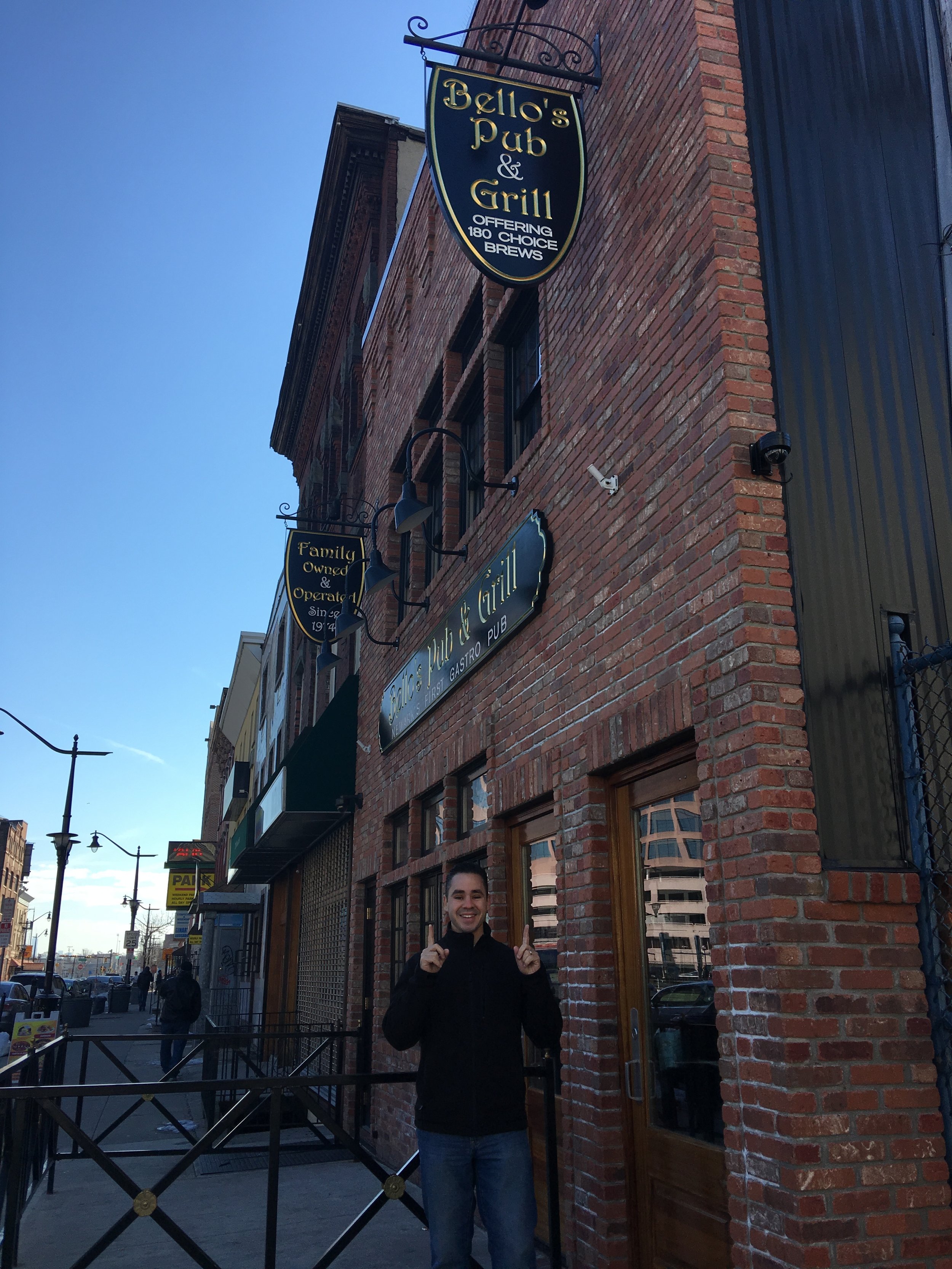
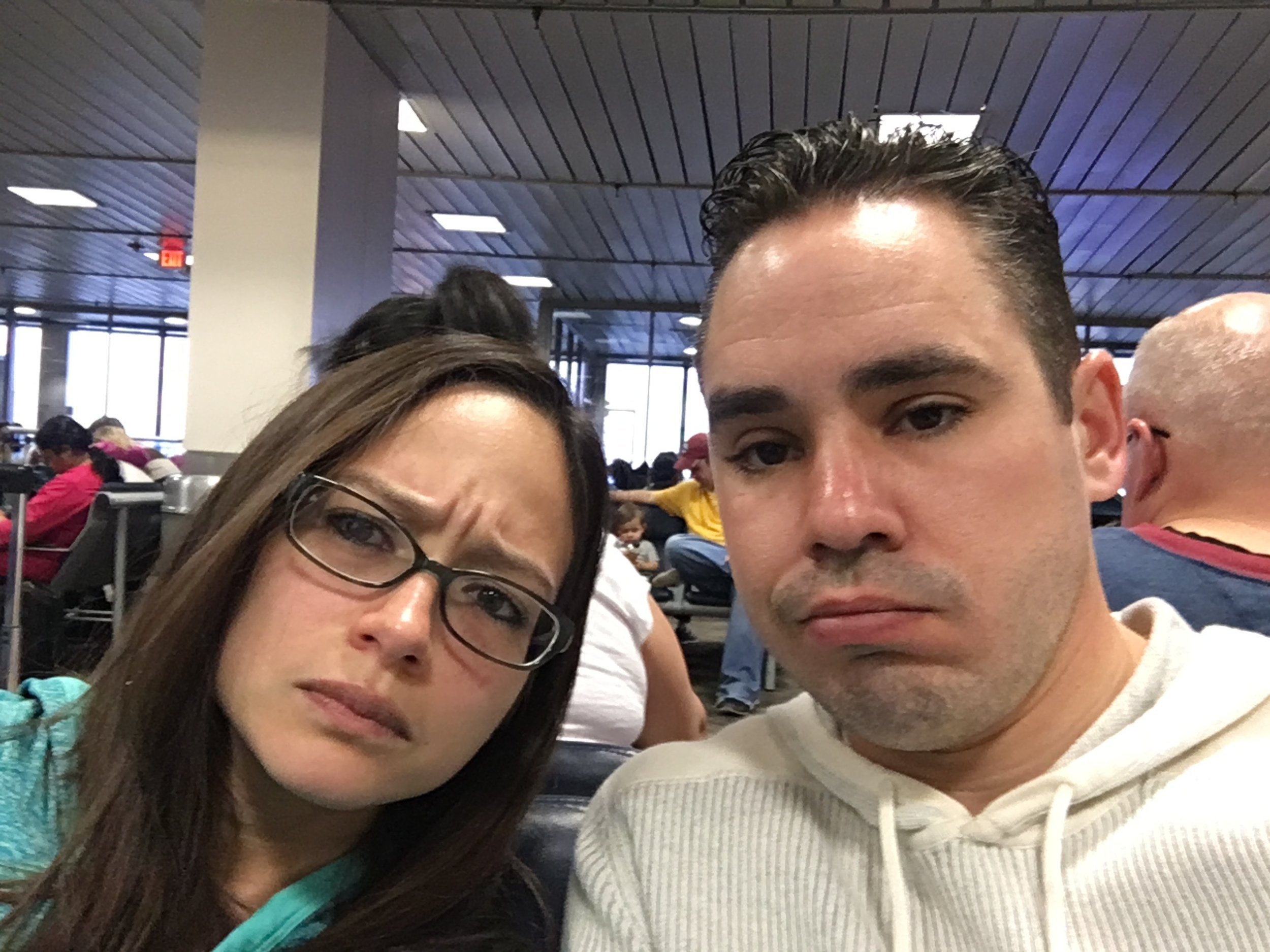
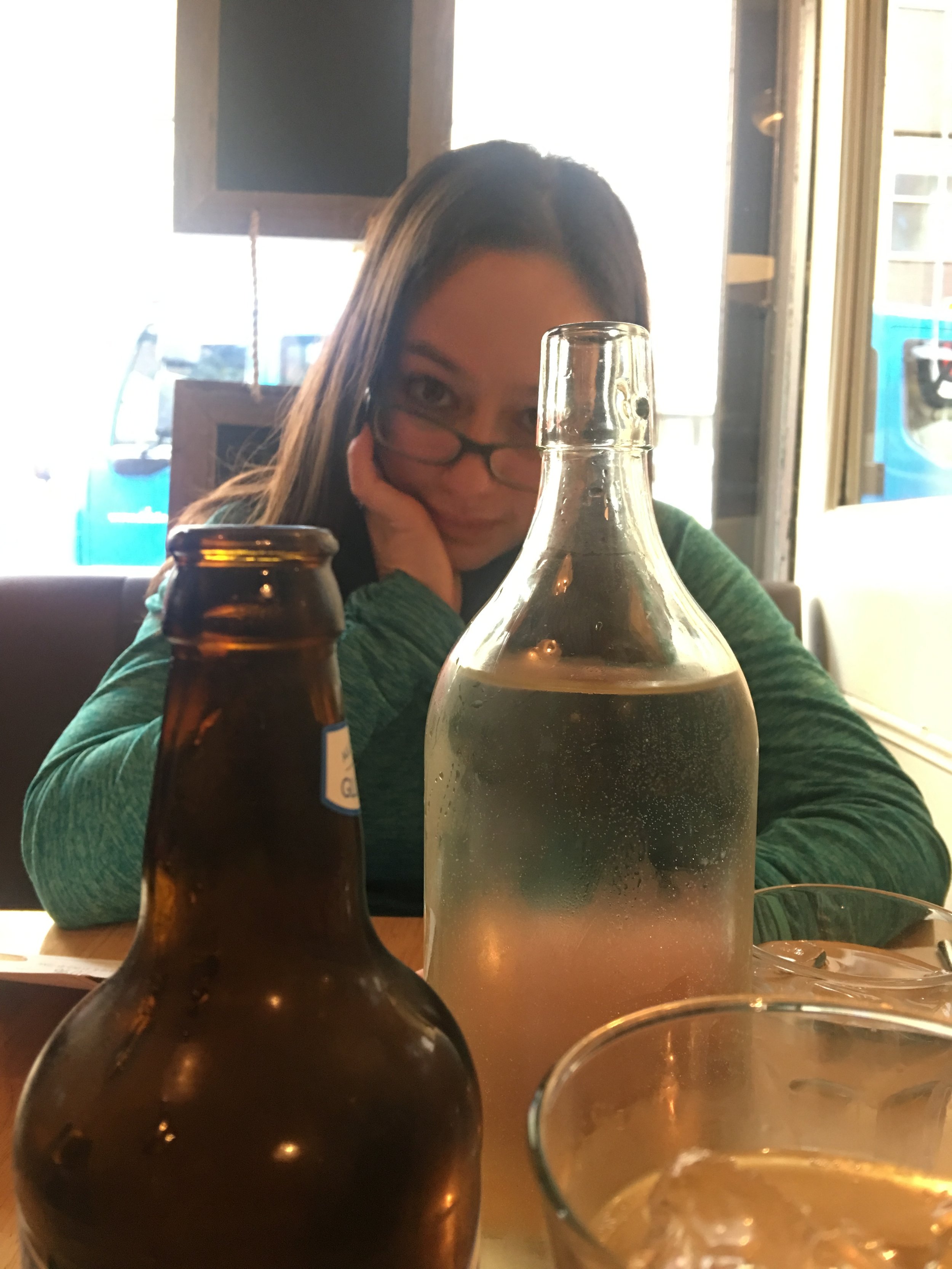
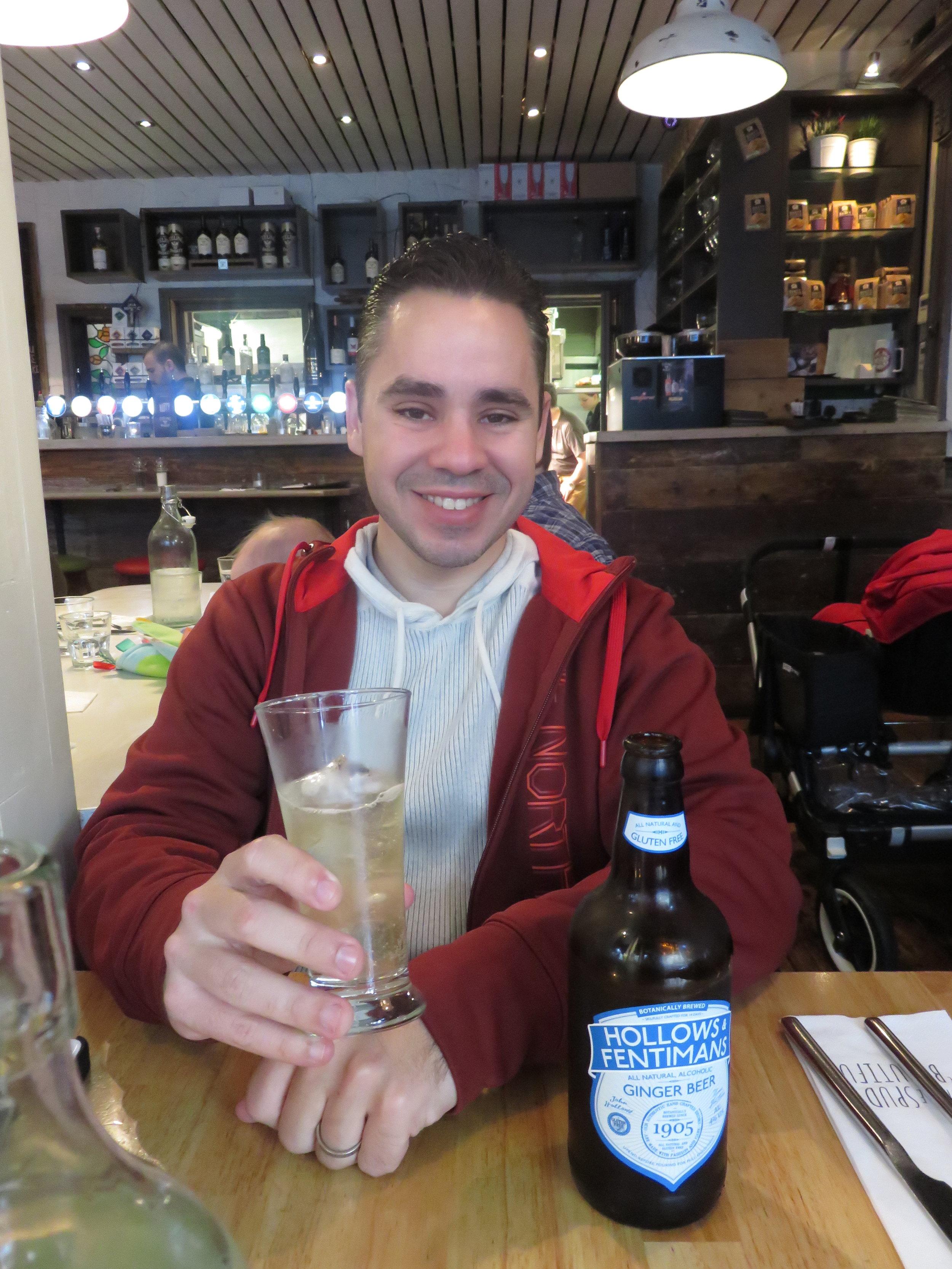
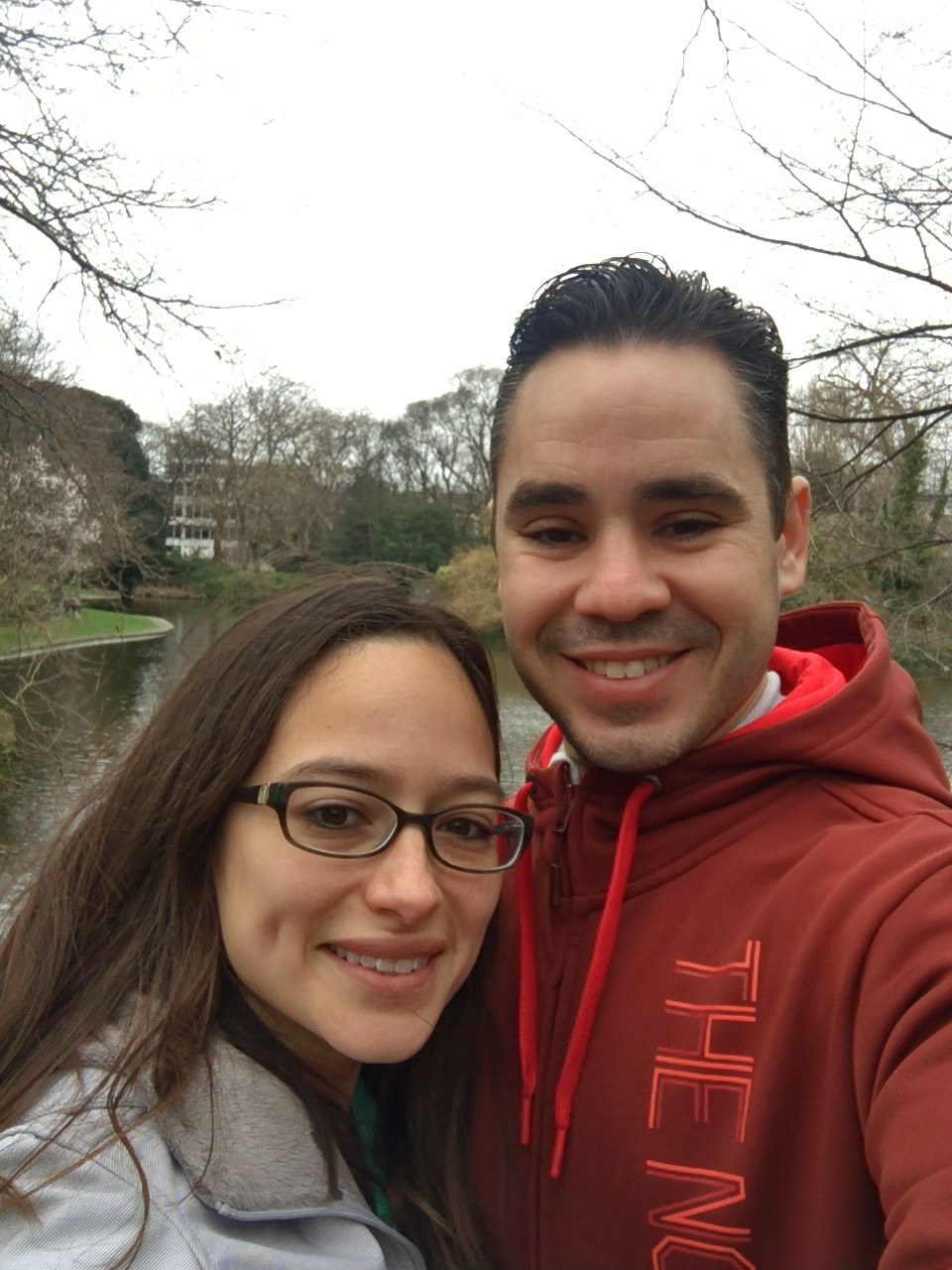
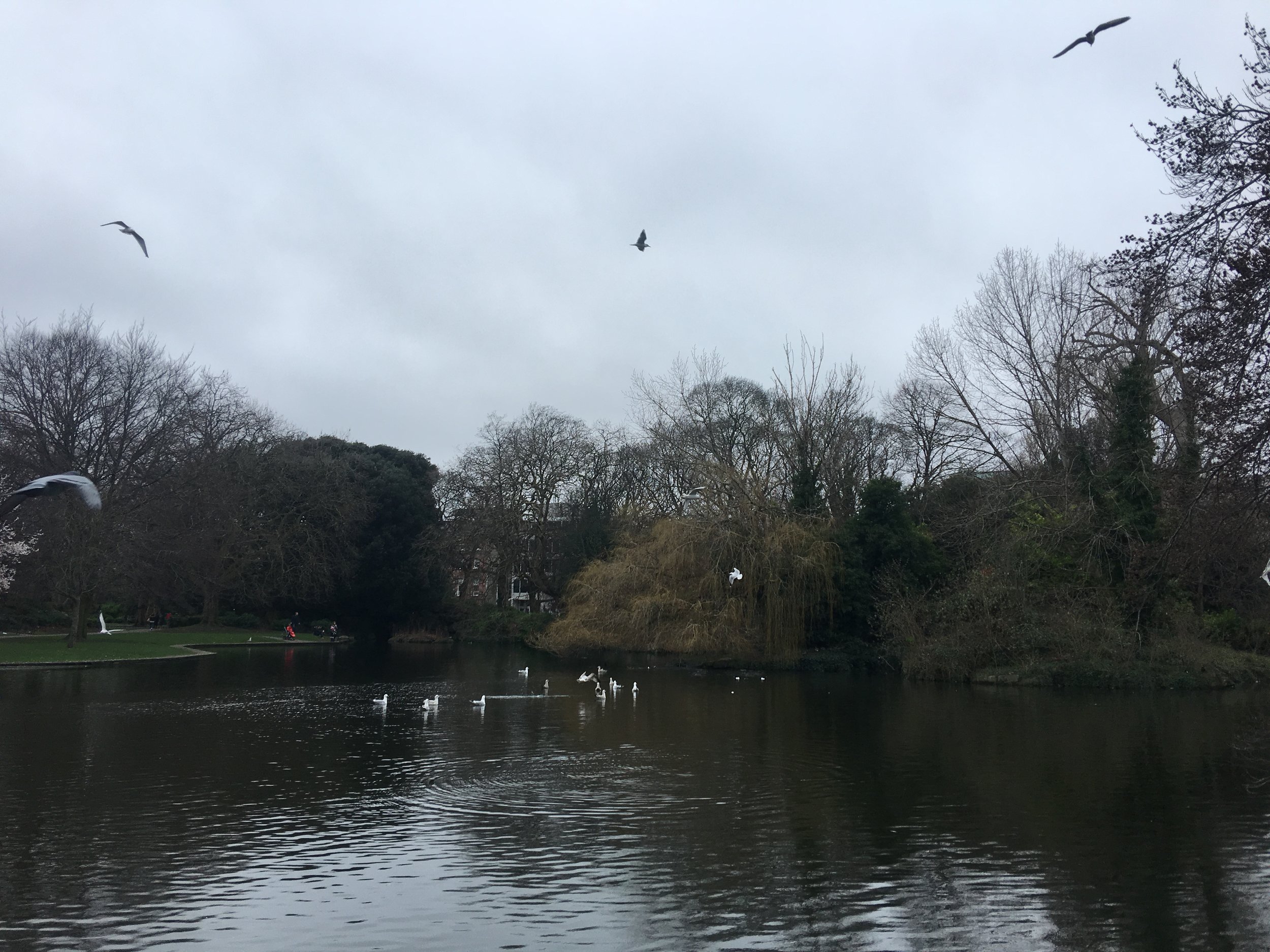
Day Three:
“Of Coconuts in Kilkenny”
Our night in Dublin ended early, asleep by 8:45PM. We woke up fresh and ready to go, silently slipping out of our AirBnB and hailing an Uber to the airport. Upon receiving our rental car, I was quickly made unfamiliar with driving by switching the location of the steering wheel, and which side of the road the Irish drive on. After about an hour, though, I felt fine. The route to Kilkenny would be an hour and a half.
Once we arrived in Kilkenny, we met with Corey, our AirBnB host. He showed us the apartment, which was clean and cozy. Corey was very friendly and enjoyed good craic, which in Irish means to talk, gossip, and enjoy pleasant conversation.
From there, we had about an hour and a half before meeting Kay, our tour guide from last time in Ireland. Thus we headed to Kilkenny Castle, so we could spend some time on the green, that was one of the most memorable and enjoyable parts of our last trip. Nostalgia isn't what made us enjoy this town so much, even now, Kilkenny is charming, beautiful, peaceful and fun. After a stroll, we sat down for coffee and just took in the vast field and the passersby.
During our walk, we saw a young boy playing among a bed of flowers and fallen leaves, then this interchange occurred, which made Cynthia and I laugh:
Kid: "Mommy, come here!"
Mom: "What it is?"
Kid: "It's a coconut!"
Mom: "Oh yeah? A coconut, in Kilkenny?"
What made this so funny to us was the incredulous tone in her voice, the cold wind, and the fact that it was 40F outside.
At 12:30, we met with Kay, who invited us to lunch. It was nice to catch up with her and find out tidbits of gossip from our last trip with her and from her other tours.
From there, we went to Smithwick's Experience. Smithwick's is a local brewery. It's famous across Ireland, but it's through and through a Kilkenny beer. The tour takes you through the history and process of beer making. Smithwick's actually began way before it took on the Smithwick's name, when monks, out of necessity, would turn their cholera filled water into 1% alcohol beer to make it safe enough for consumption. John Smithwick later started the brewery centuries later on the same ground as the monks. An interesting side note, at the time of his opening the brewery, Catholics were not allowed to own businesses, so John Smithwick had a protestant friend became his business partner, sign all the papers for the company and within 6 months have the partnership dissolved. In exchange, Mr. Cole received a free house on the brewery premises. Smithwick's produces three types of beer, Smithwick's Red, Smithwick's Pale, and Smithwick's Blonde. The difference between the three is the amount of roasted barley: 5%, 10%, and 1% respectively.
We returned to the apartment where we spent two hours conversing with our AirBnB hosts, Corey and Nadia. They were incredibly friendly, and we could see why they are considered "Super Hosts" by AirBnB.
Later, we finally went to dinner at Kytler's Inn, then we returned to The Dylan, a whiskey bar where I discovered Green Spot and Yellow Spot whiskey two years ago. We sat and enjoyed a drink while listening to a couple of guys play an assortment of genres.
All in all, a wonderful day, relaxing, but filled with good times.
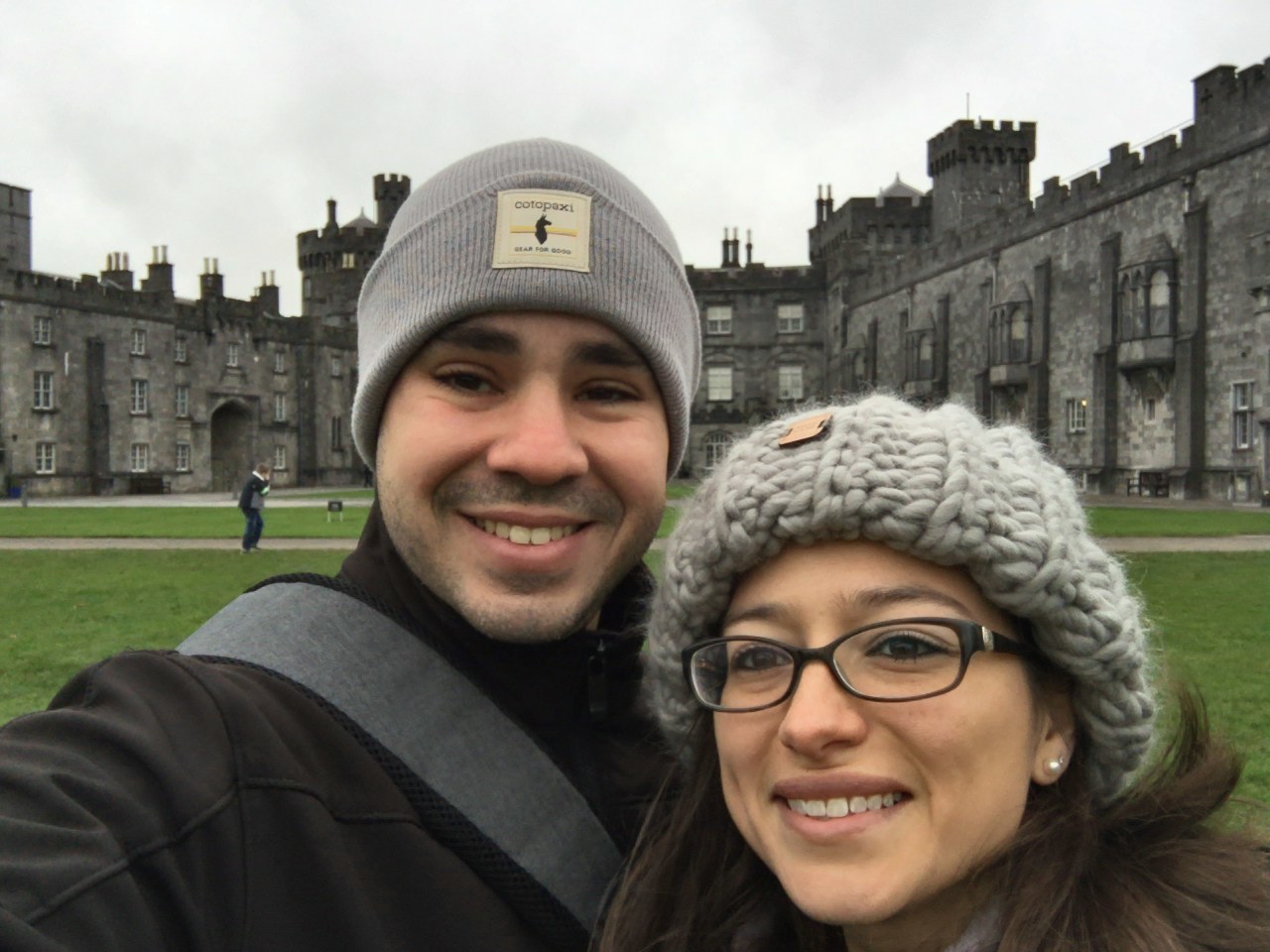
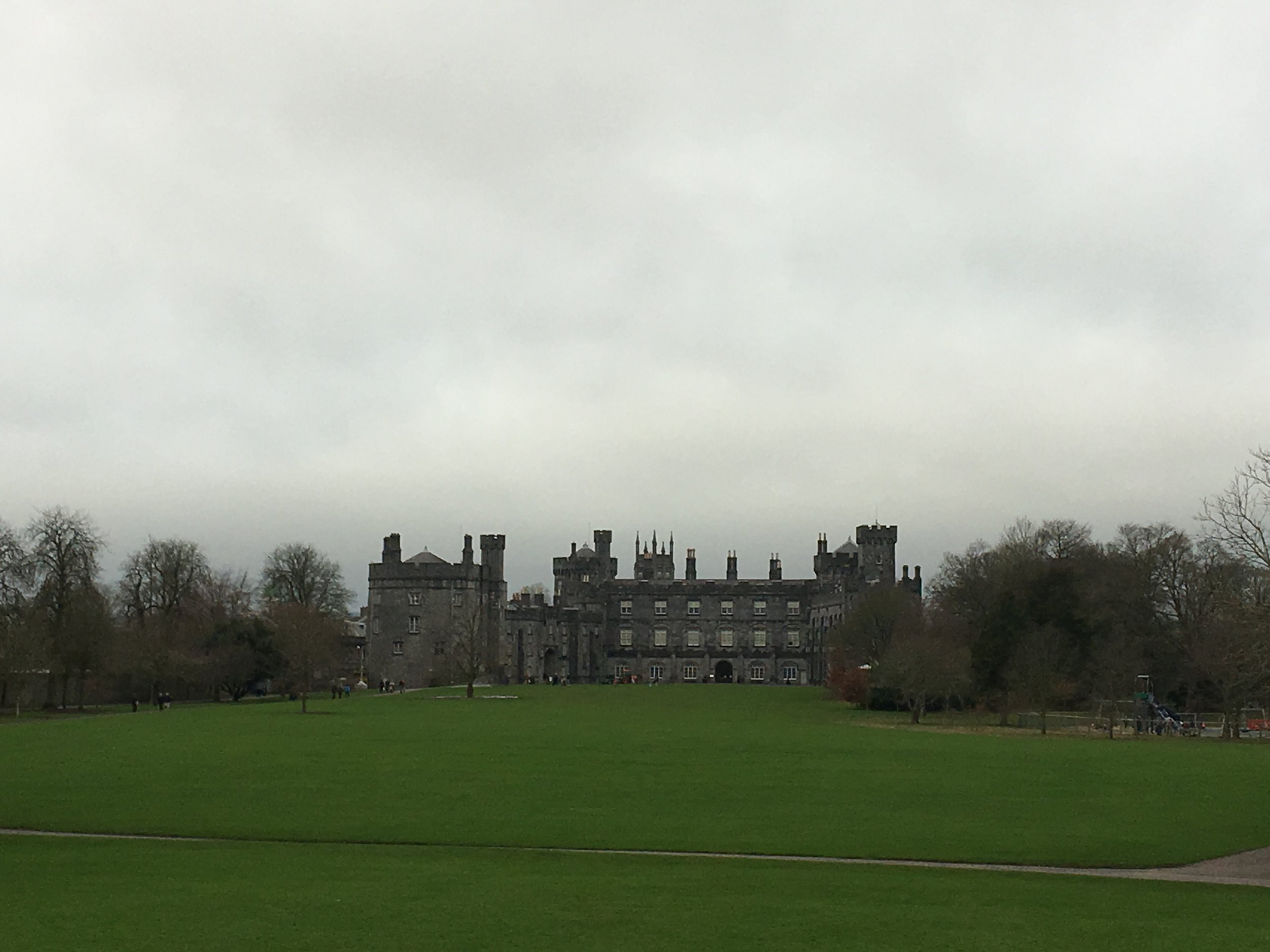
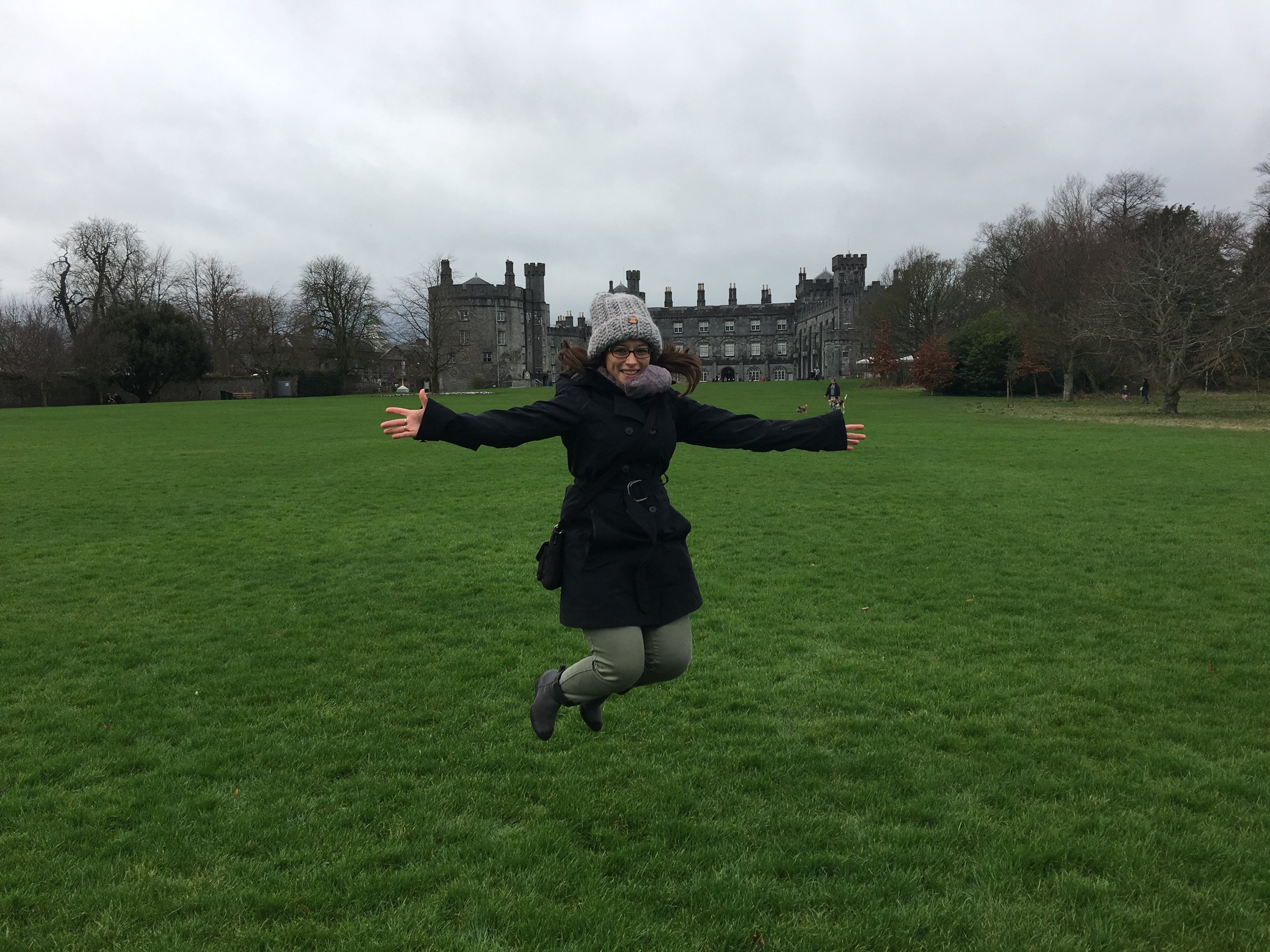
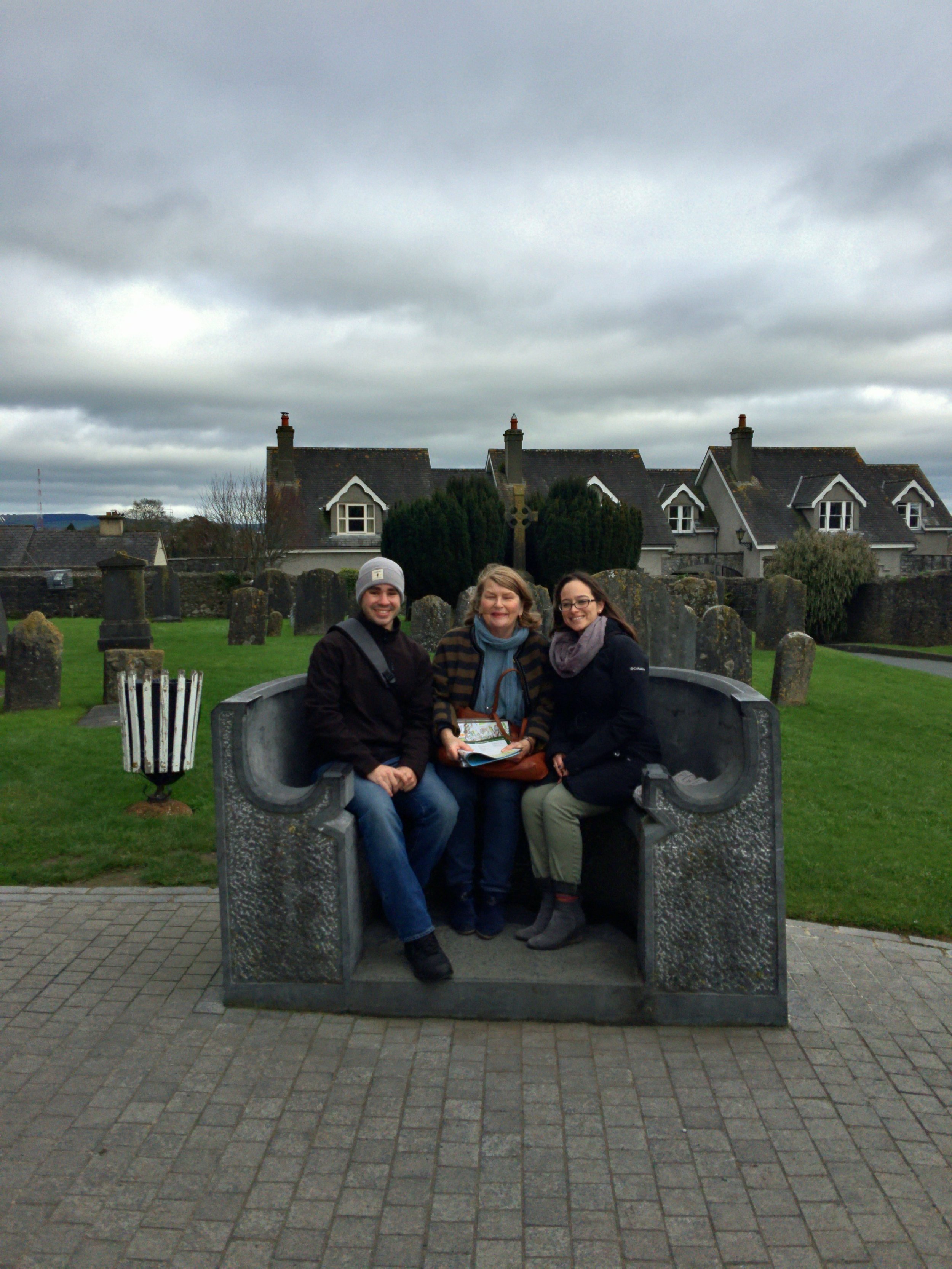
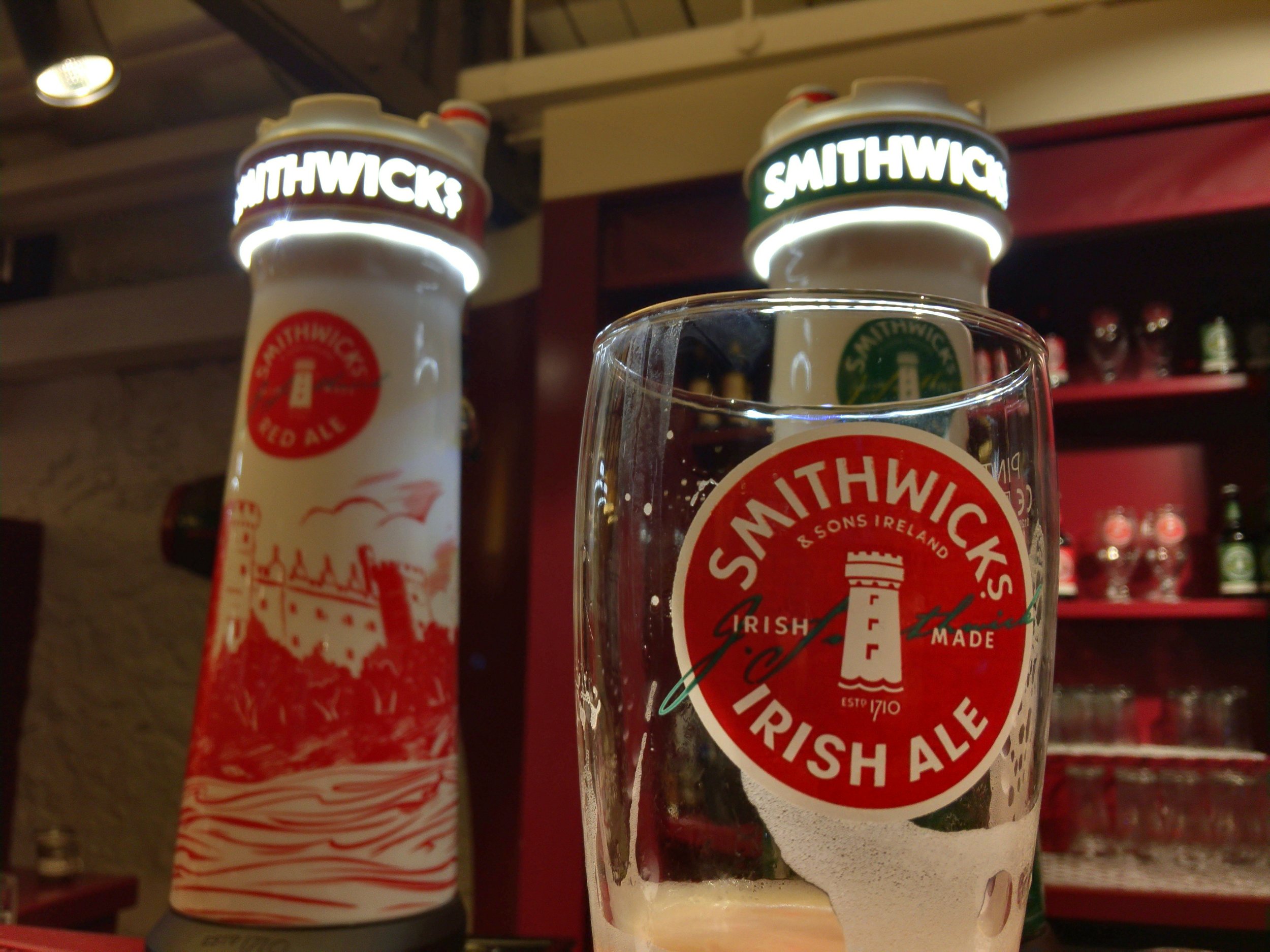


Day Four:
“Of Service & Kayaking in the Dark”
We awoke earlier than our hosts most likely expected, and were dressed much nicer than they expected. The reason for this was because we were going to meet the Kilkenny congregation for field service. Before that, Corey, our host, made us a full Irish breakfast with egg, bacon, boxty, and roasted tomato. It was terrific. After a bit of craic, we bid our farewells.
From there we headed off to the Kingdom Hall, where we met with a group who was visiting from Kent England to assist the local congregation with working rural territory. The friends were lovely and very welcoming. Working the rural territory was very similar to working unassigned territory. Small winding roads with dirt driveways and lots of farms and equipment. No matter where we are in the world, service is service, and the friends in the congregation are brothers and sisters.
We left service and made our way to Skibbereen. While on the way, we snaked through tiny rural roads lined with piled stone walls. Farms and fields as far as the eye could see; cows, horses, and sheep dotted the landscape, especially in the looming hills where large green pastures spread across the view.
Skibbereen is a small town with not a lot going for it aside from being the epicenter of the potato famine way back in the mid-1800s. We quickly found our host and the unit we would be staying in, changed, and made our way to Lough Hyne. There we met our guide who would take us out onto the lake as the sun would set. The lake, or lough, is beautiful and biologically interesting. Lough Hyne is the most researched lough in all of Europe because it is the only saltwater lake. In the lake is an assortment of species, some that are either only found inside this lake, or someplace else far away.
Additionally, the only outlet and inlet for this lake is a small narrow channel that is about ten feet in width. This produces grade three rapids during high tide and low tide transitions. This geological circumstance creates a stable ecological system, perfect for research.
Our guide took us out onto the lake as the sun began to set, and eventually, it became dark as we maneuvered the lough and its small central island, narrow, and research facility. On the lake, all we could make out were silhouettes on the shore and of the nearby forests. It was peaceful and serene; at one point the guide stopped talking, and we stopped paddling, all we heard then was the sounds of the lough: The water, the wind, the birds, and the rapids sending water back into the ocean. When we began paddling again, the bioluminescent organisms started to dance around our paddles as we dipped them into the water and our kayaks glided along.
We bid our guide farewell, and headed back to Skibbereen around 9:45PM thinking we’d go to a pub for a quick dinner. We underestimated how quaint this town really is. Most things were closed. We settled on a tiny hole-in-the-wall place with two tables that sold pizza, fried chicken, Indian food, pub food, calzones, and other random items.
Tomorrow’s excursion out into the open ocean for more kayaking has been canceled due to the wind. We are left with only the main task of getting to Kenmare by 5:00PM, the rest of the day is ours.
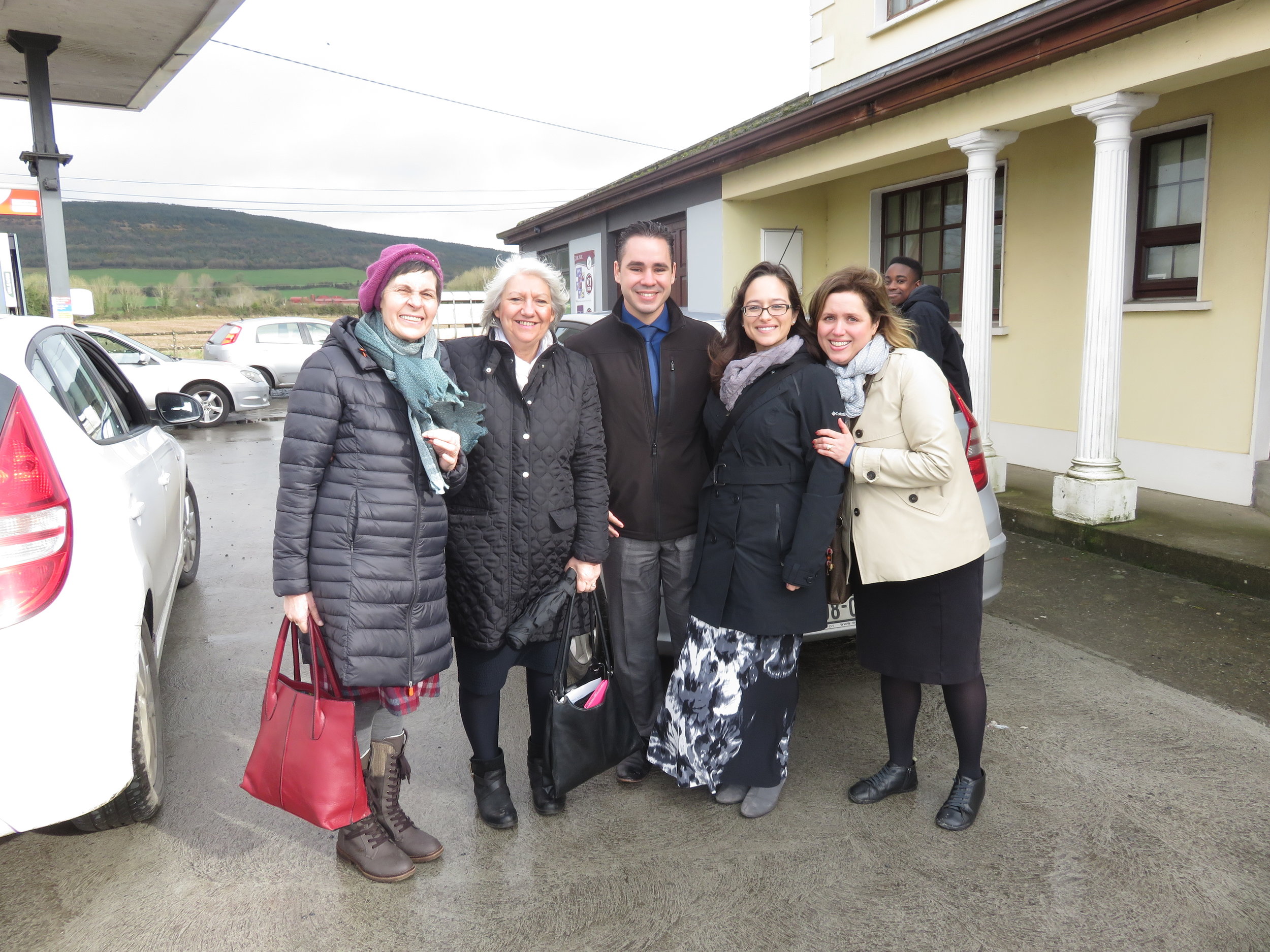
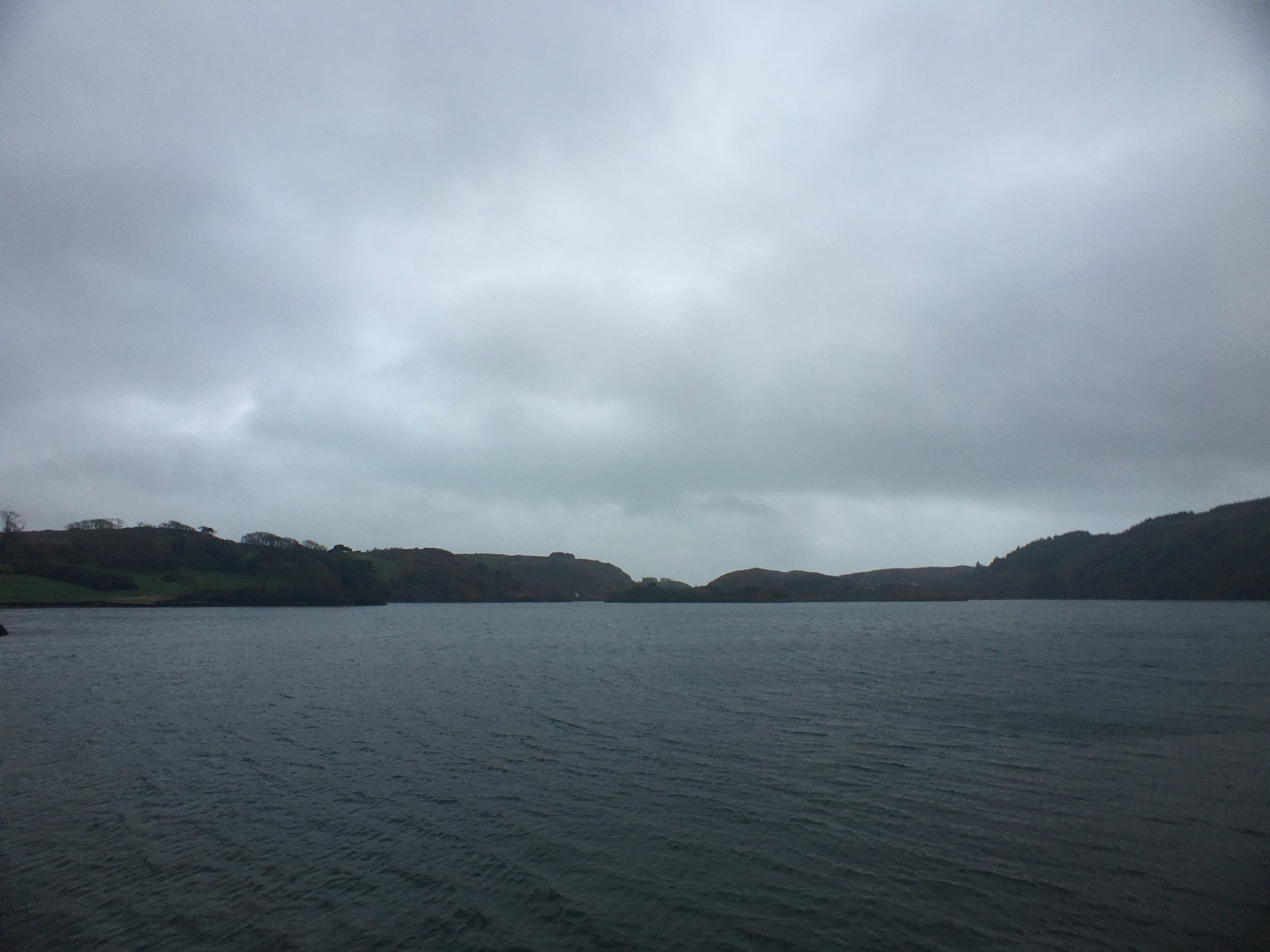
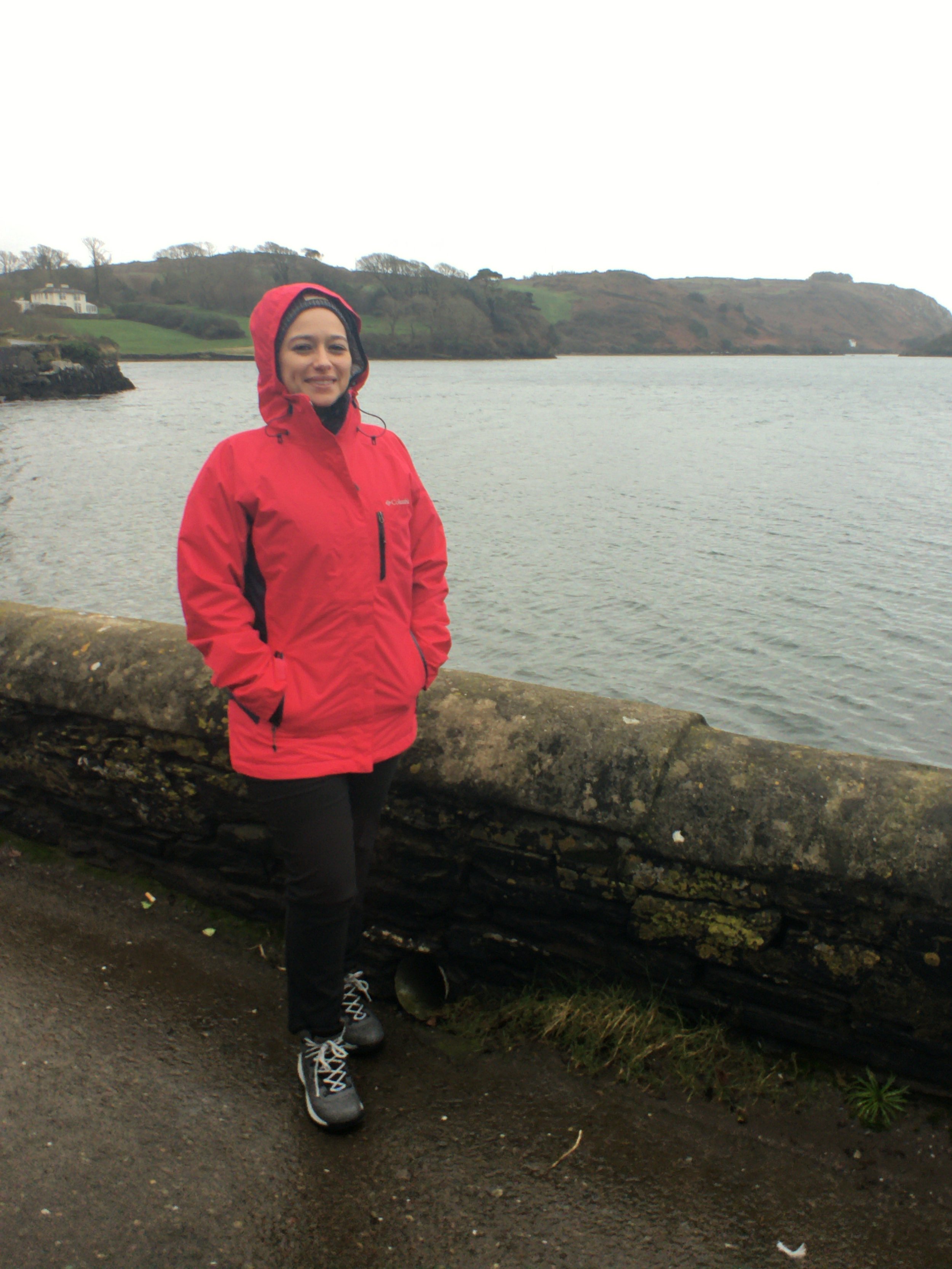
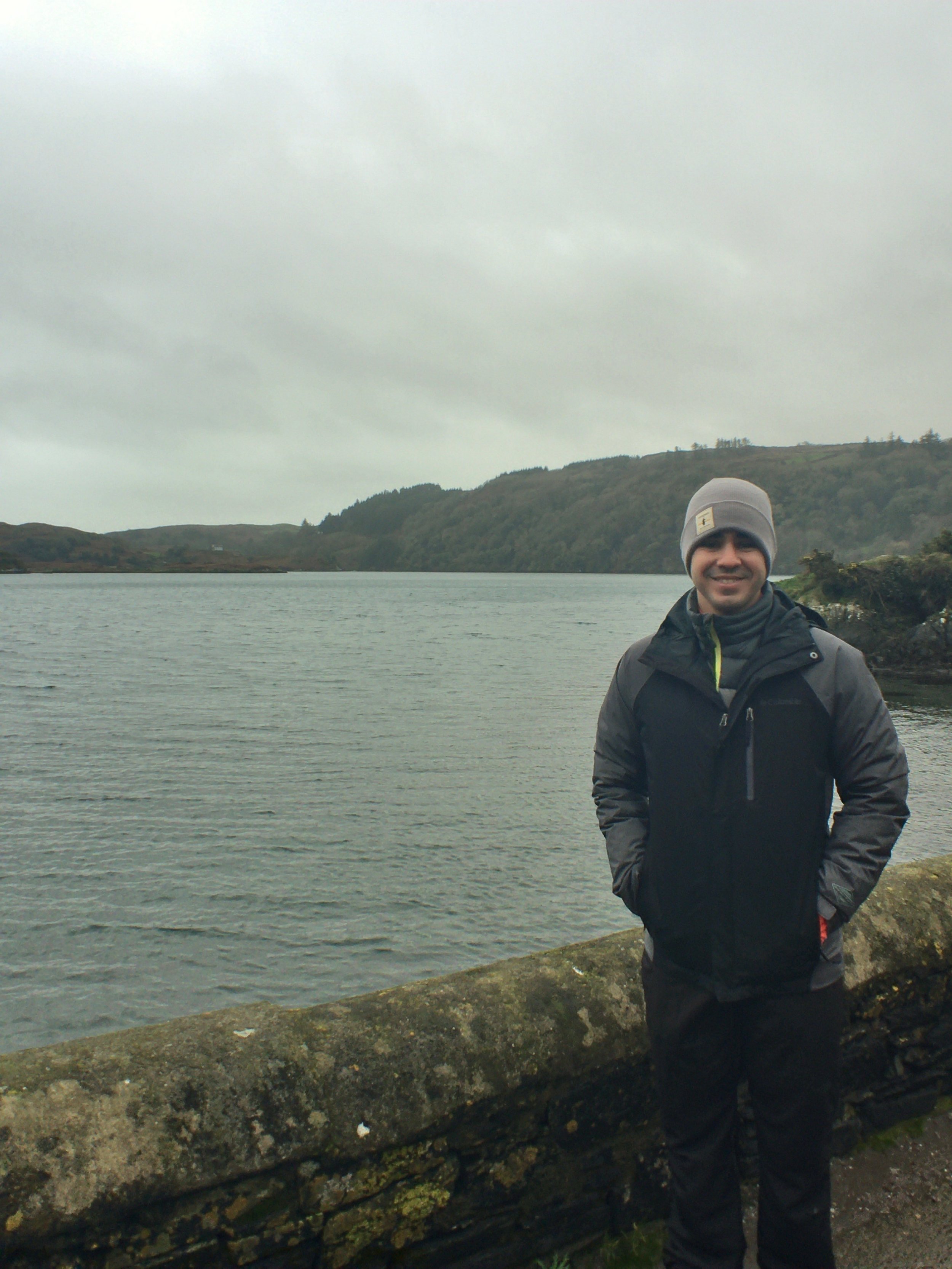

Day Five:
“Of A Stone Circle, A Bay, and a Peninsula”
Having our kayaking trip along the coast canceled, we slept in and prepared our departure at a leisurely pace, stopping at a cute little café for breakfast. Skibbereen, even during the day, is a sleepy little town. While at the café, three gentlemen were sipping their coffees and reading a newspaper; we joked that we had stepped into the 90s.
After grabbing our luggage, we began our drive to Drombeg Stone Circle. The route was long, narrow and winding with rocky hills that would open up into vistas of green valleys marked with farms and pastures. Eventually, we made it to the circle. It is unlike the most famous stone circle, Stonehenge. This stone circle was small with several stones standing upright with an "entrance" portal made of two higher stones that faced a smaller slab looking stone. Excavations have found that this was the burial site of a young man, and there are indications that several other burial spots are within the circle, denoting that this may have been a family burial plot.
About fifty feet away, there are two sunken platforms with stone walls, and in the center of the platform was an open tank that archaeologists have determined could hold about 75 gallons and could be brought to a boil in 16 minutes using heated stones from a hearth that was also within the supposed domed edifice. It seems two families or two groups of people lived in the area. Carbon dating suspects about 800 B.C. to 1000 B.C.
From here, we began our journey to Kenmare. As we drove, I realized that we would be crossing through Bantry Bay, which was one of the locations I had researched for this trip. We stopped at the small town, almost sure we were the only tourists. The town was pretty and quaint with colorful buildings. The gem of this area is the beautiful bay, and how the ocean has carved a path into the island. We stopped at several locations along the road, where permitted, and took pictures.
Also, during the drive, we got a glimpse of the Beara peninsula; one of the peninsulas we were supposed to hike, but the guide we had hired declined due to forecasted bad weather. As we drove through the terrain between Bantry and Kenmare, we noticed a profound change in geology. Where Skibbereen and the route to Kilkenny were lush and hilly, Beara was rugged and mountainous. A mist clung to the mountains, cliffs, and hills; and the lush greens of the east turned to more brownish and gray. Driving through the terrain was thrilling; at one point the sun began to peek from behind the clouds, and it was at this point where we passed through a tunnel, emerging into a foggy mist accompanied with rain. We lamented not being able to hike it.
Eventually, we arrived in Kenmare, where we settled into our cozy little cottage for the next few days. Tomorrow we hike the Gap of Dunloe with Mike O'Conner from the Wild Kerry Walking Guides.
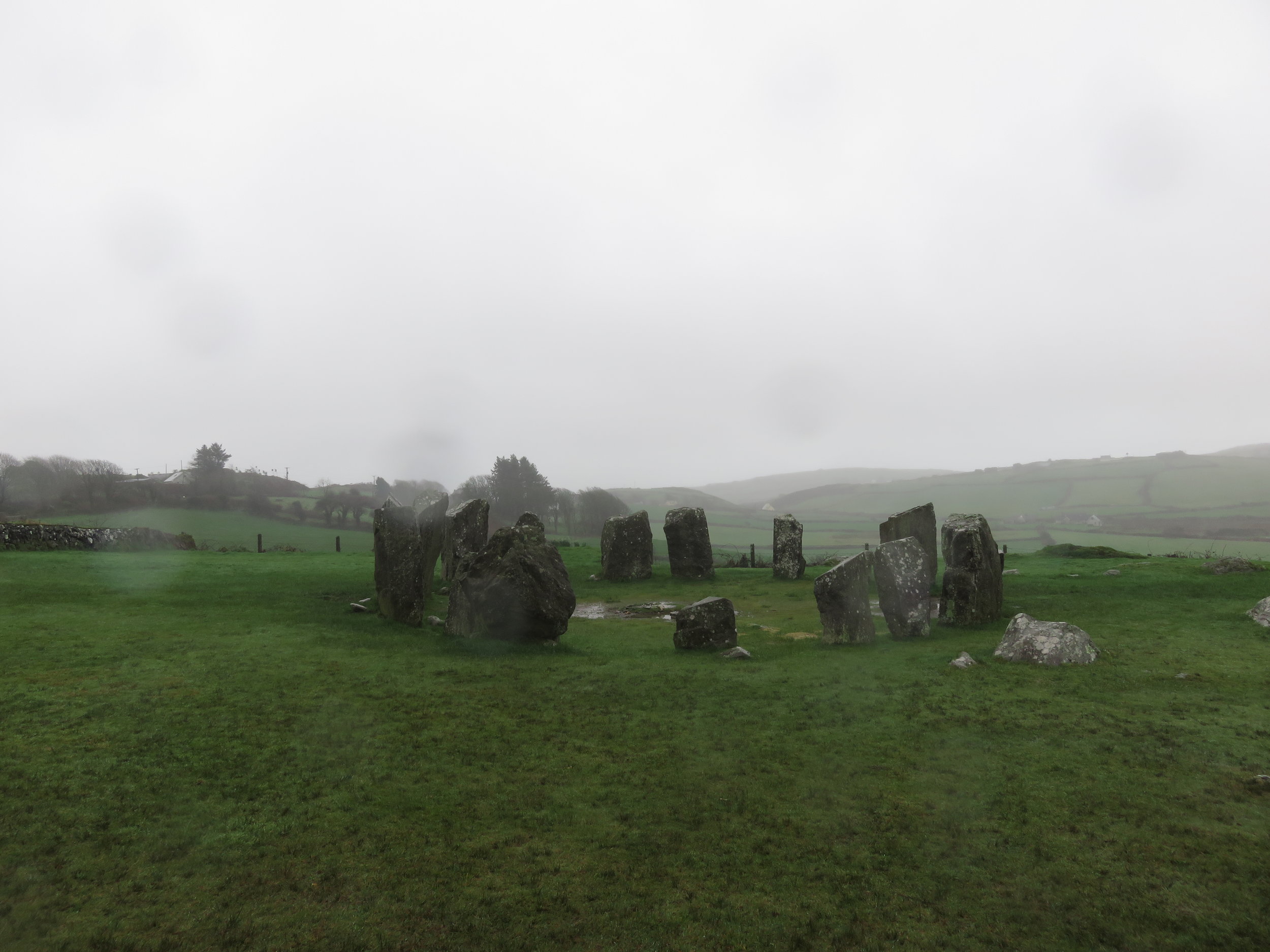
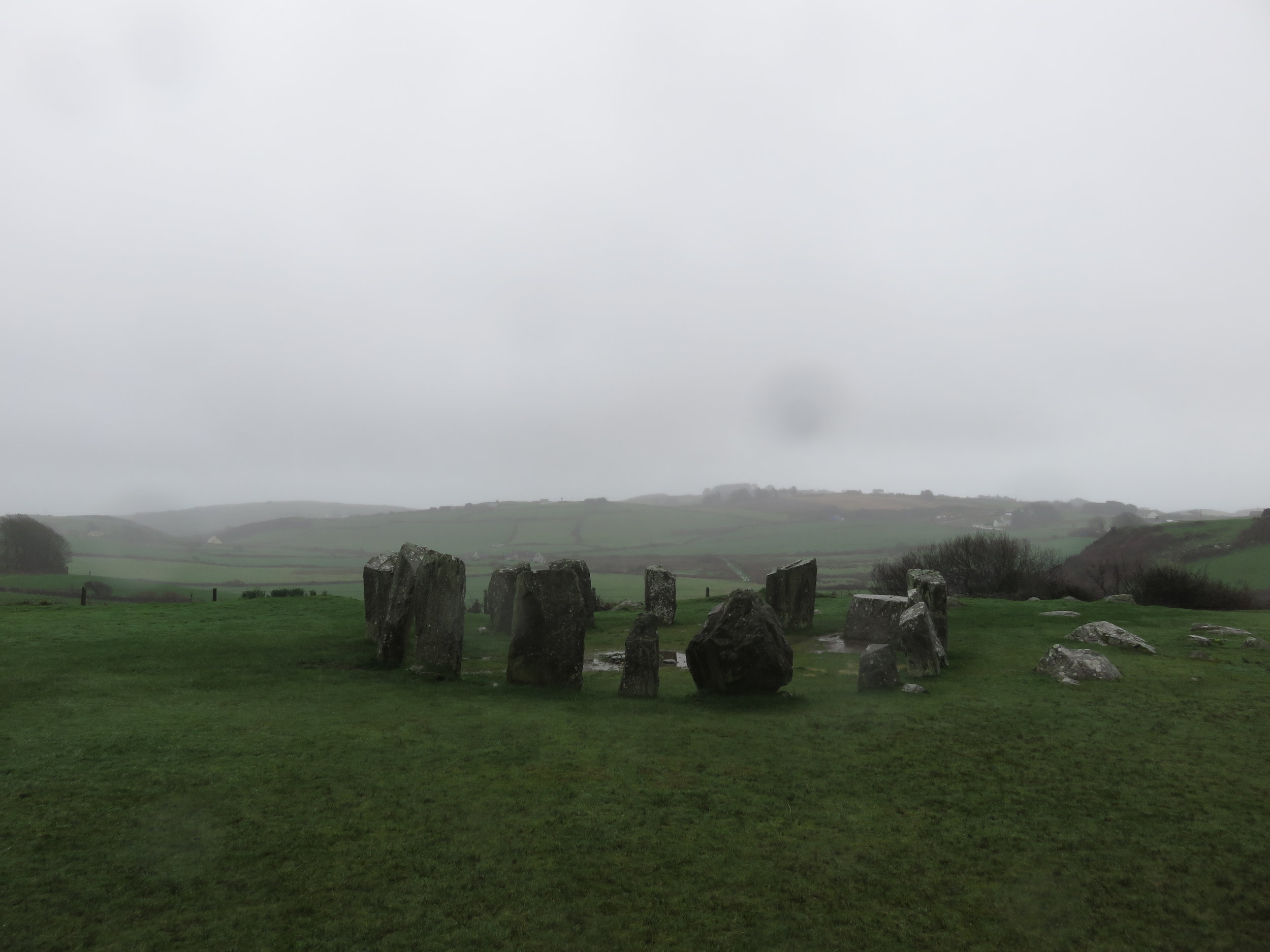
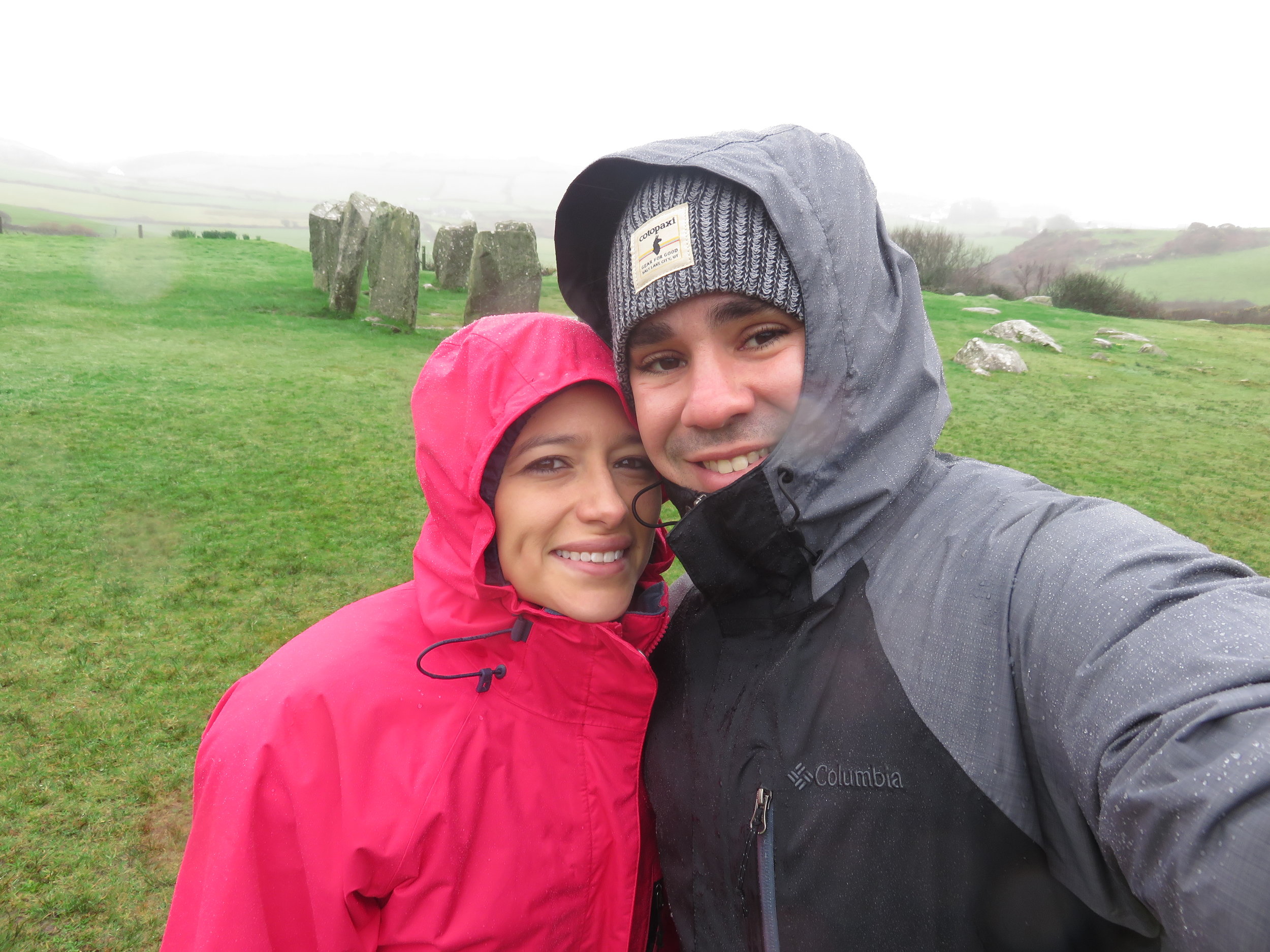
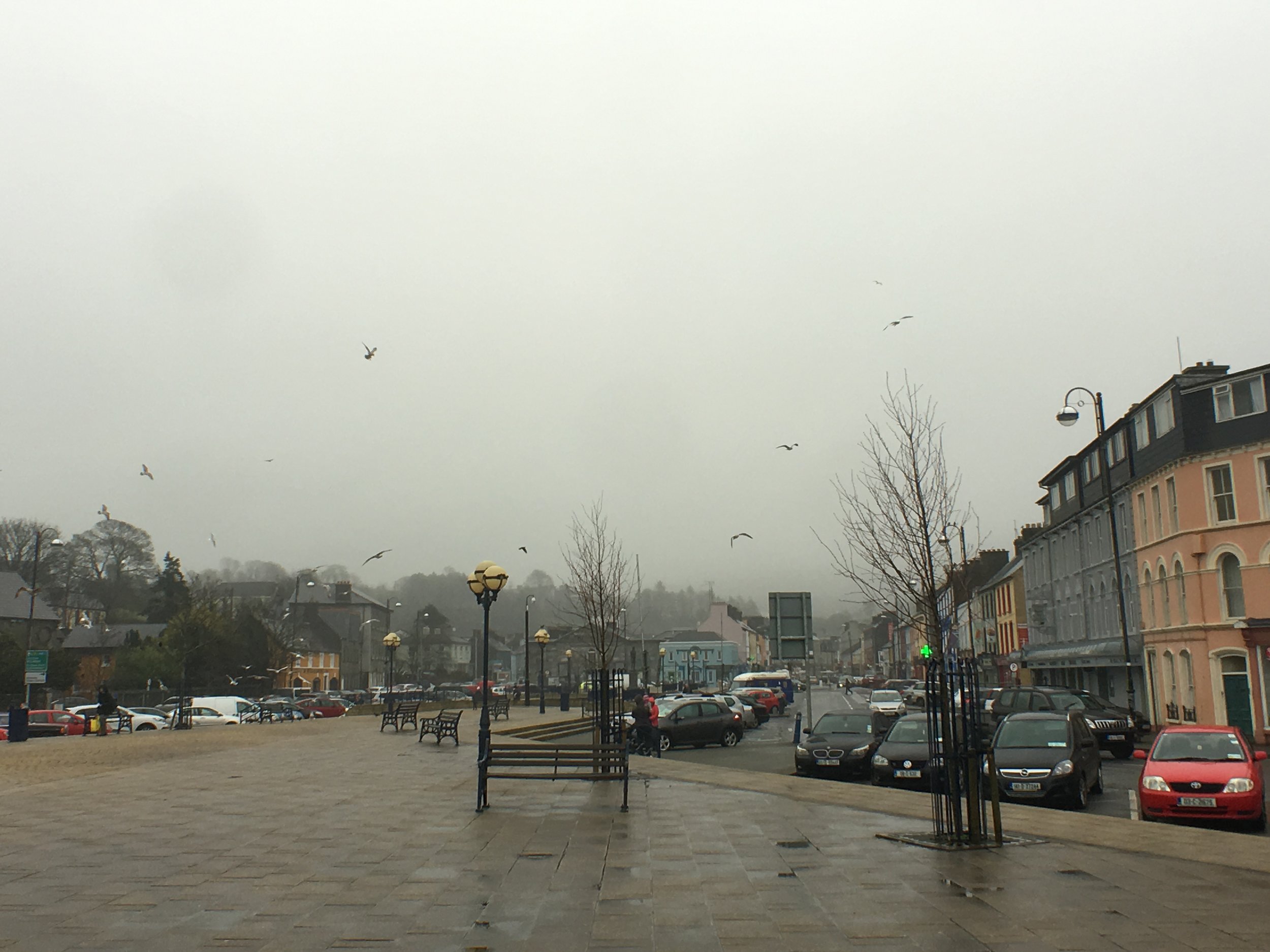
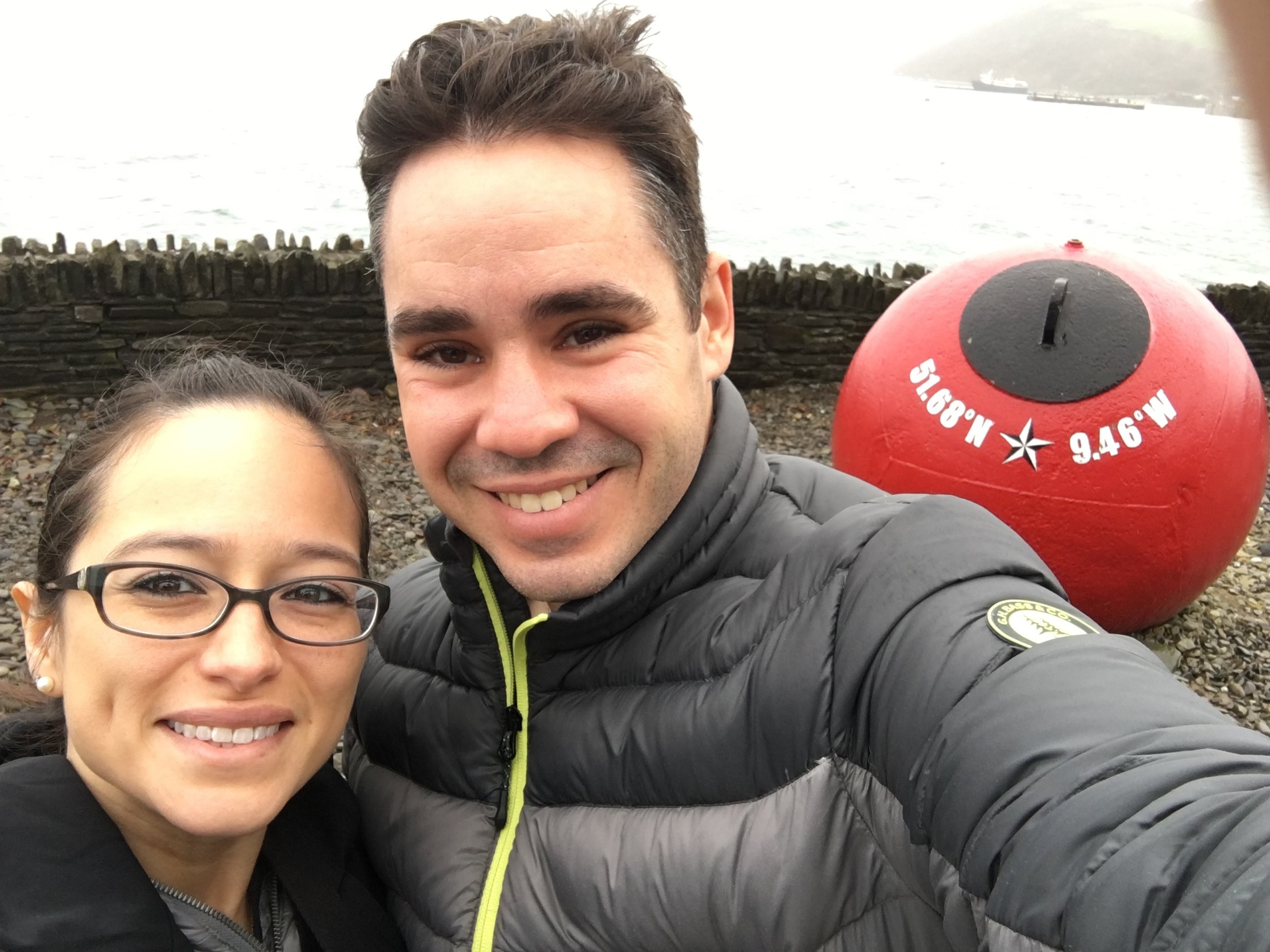
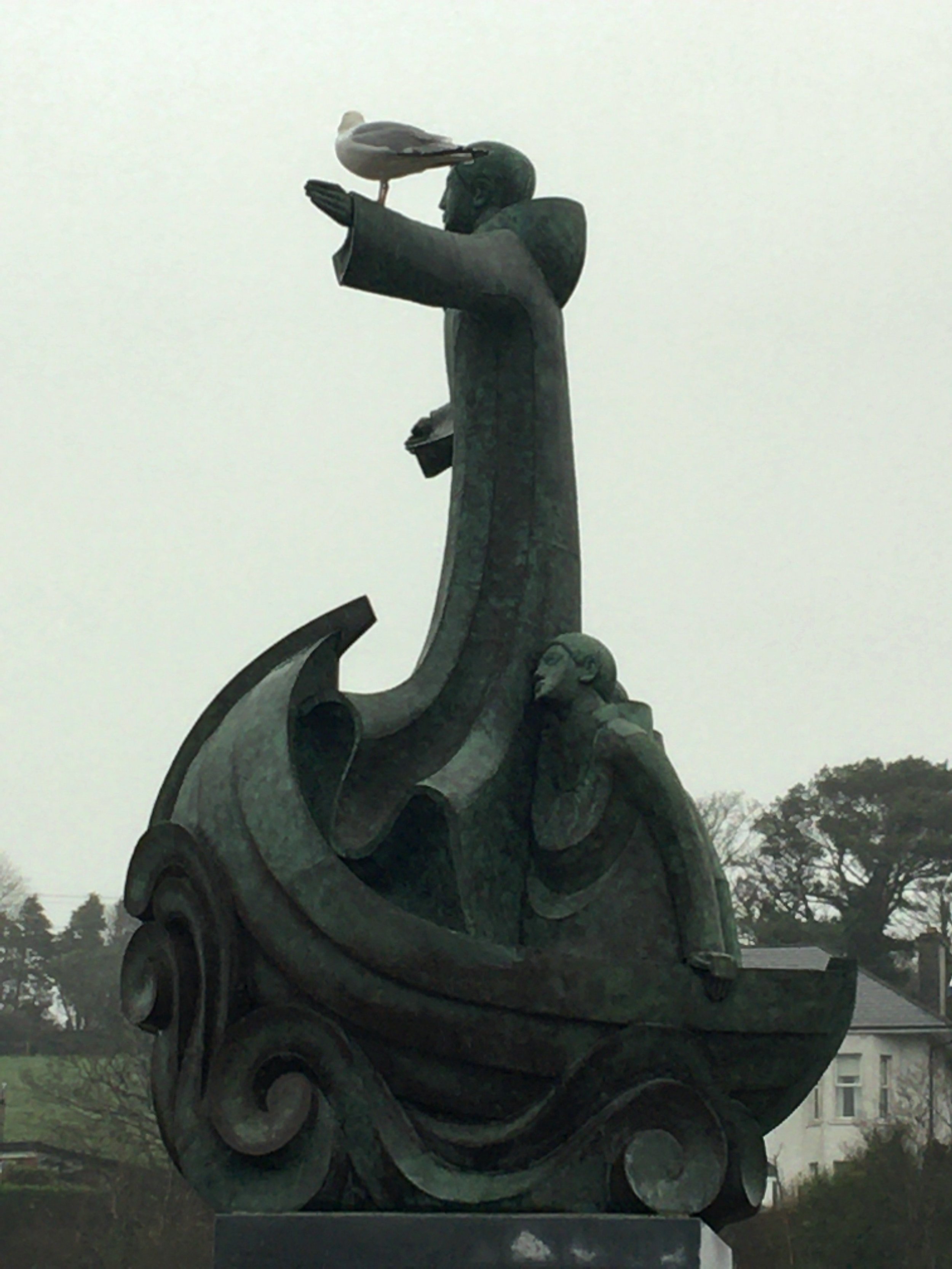
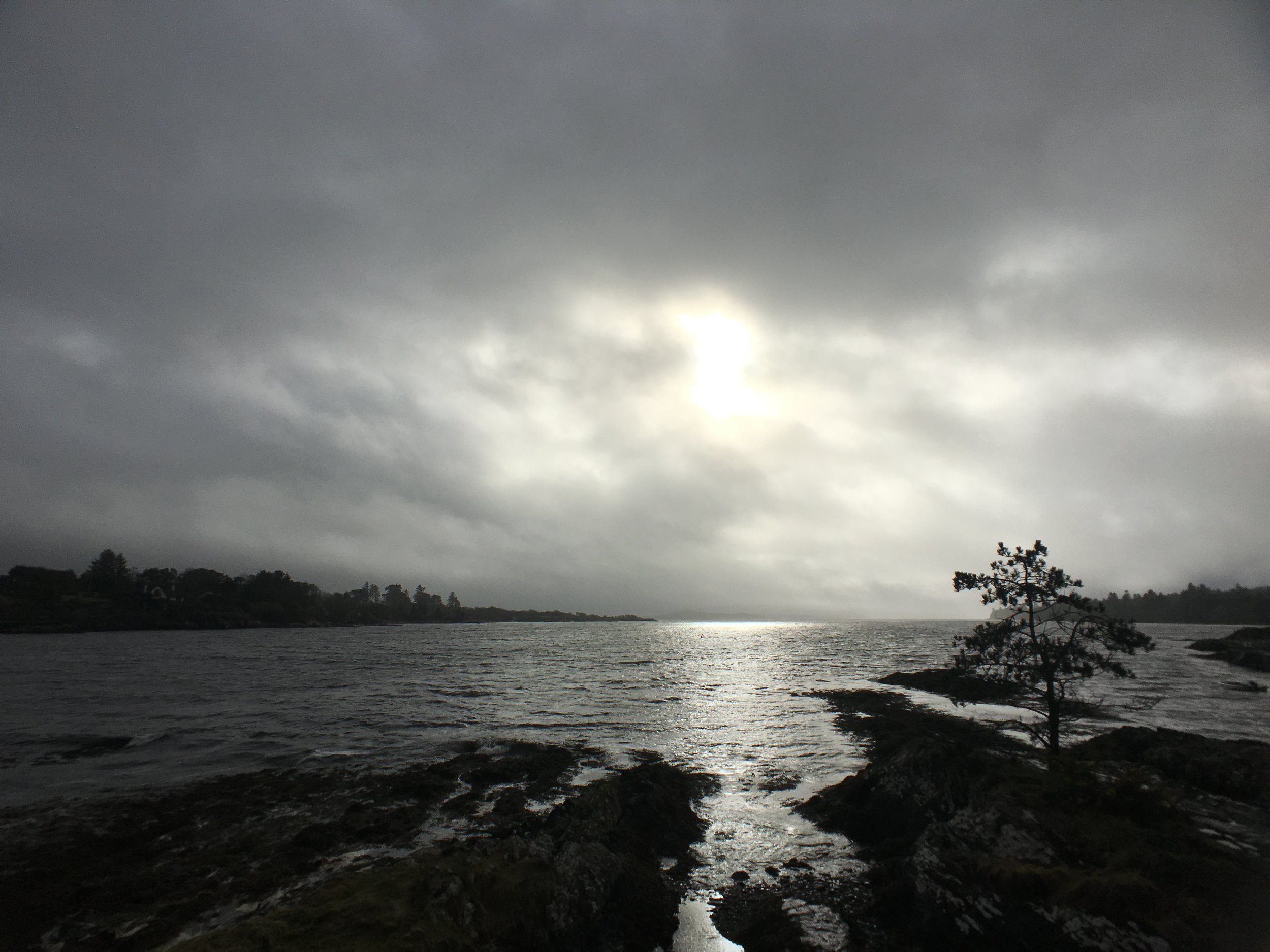

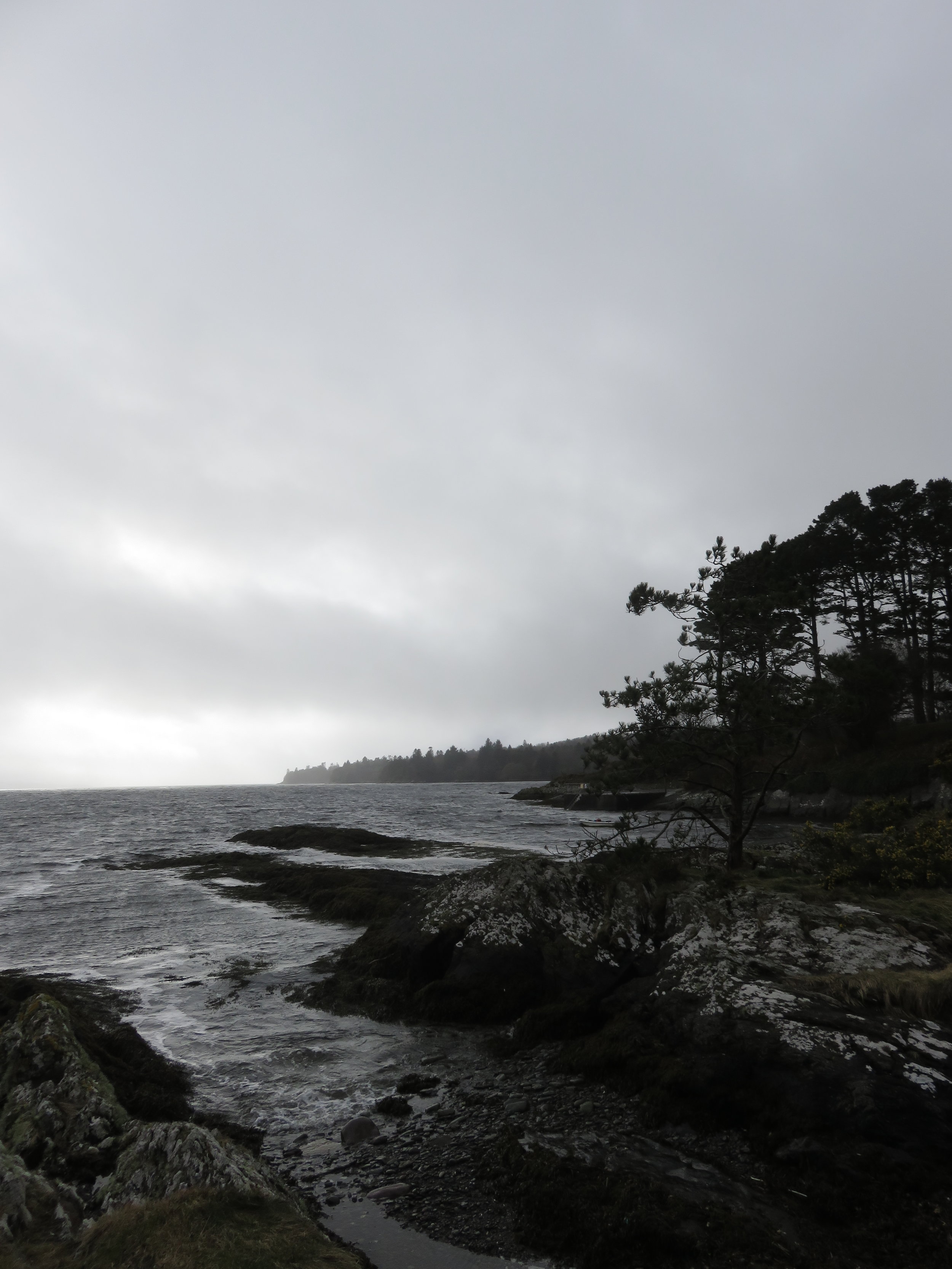
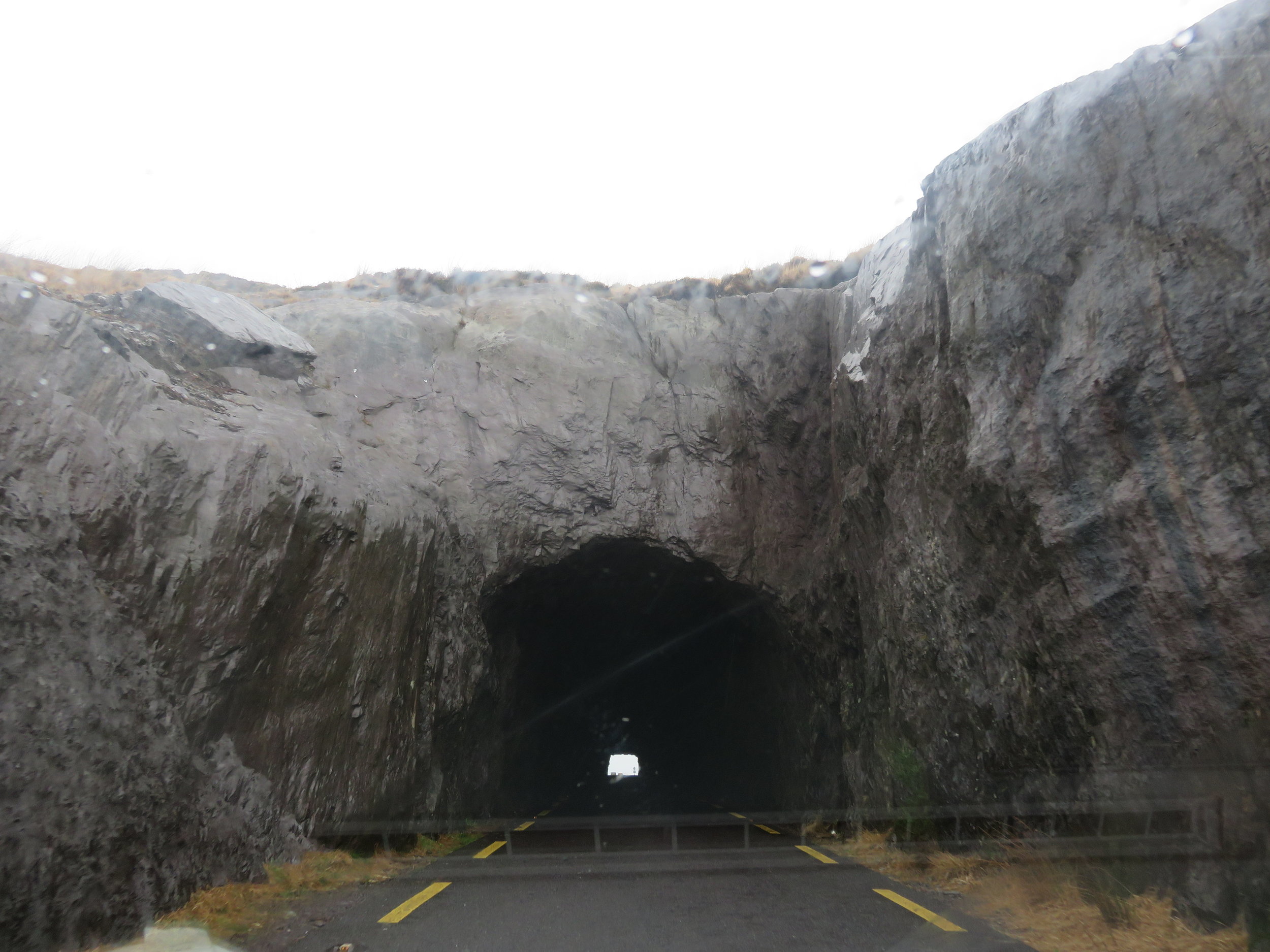
Day Six:
“Of The Gap of Dunloe”
I woke up this morning and made our traditional breakfast of eggs and bacon, but the eggs were from a local farm, and the bacon was from a local butcher. Both came out amazing! We got ready and headed up to the Blackwater area to meet our guide, Mike O'Conner and his wife, Jill. Mike is the owner and principal operator of a small hiking company called Wild Kerry Walking Guides.
We met him and were whisked off into the area called the Black Valley. It is in this area of the peninsula where the Gap of Dunloe is. This gap is a small winding road that runs through several mountains and alongside several lakes. Once we stepped out of the car and began to hike, the beauty was breathtaking.
The sun was peaking over the mountains to the east where the rays were reflected off the water that had just fallen. A rainbow was in the distance.
On the hike, we experienced a number of things: mist, fog, light rain, heavy rain, sunshine, breezes, wind, strong wind, cold, and warmth. If anyone ever tells you they know what the weather in Ireland is going to be like, they probably have no idea.
The road took us alongside mountain walls, river beds, bridges, pastures, and craggy hills. It is hard to describe the majesty of such a place, it makes one feel small. The quiet was wondrous; only being able to hear the trickling of a nearby stream, or the rush of wind, or the splashing of the lakes, maybe even the sounds of sheep scampering nearby.
With the near-constant rain over the last few weeks, just about every mountain or hill had a small waterfall or stream. We asked Mike if we could drink this water, and he said straight from the stream, he'd been doing it his whole life.
Mike and his wife Jill were kind, amiable, and great to walk with; exactly what we wanted from our guides. He is a small operator and has lived in the area his whole life, he knows this place well. Both of us were quite glad we were able to get hikes with them.
We made our way to Kate Kearny's Cottage, a small little bar/restaurant at the end of the Gap of Dunloe, where we ate lunch and walked all the way back. In the end, we walked 10.5 miles, and about 28,000 steps.
As a final note, on the way back we had several stretches of uphill climbing, so during a bout of heavy rain, we hid underneath of overhanging rock. From there we watched the storm roll through, we could see the sheets of rain fly across the sky, with a mountain as its backdrop. Stunning and utterly beautiful.
After the hike, we came back to the apartment, where we made dinner for ourselves of Irish potatoes and rib-eye from the local butcher.

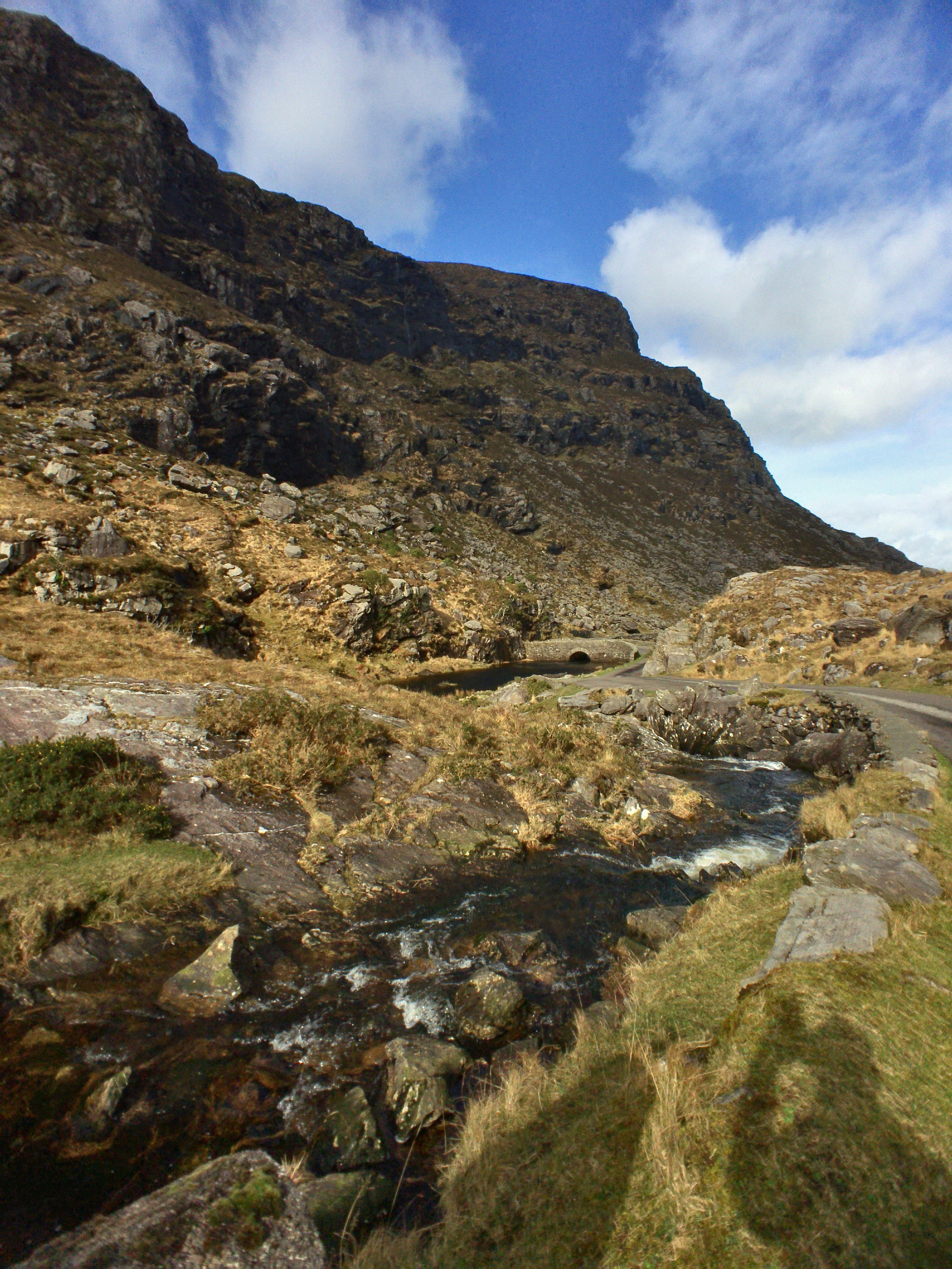
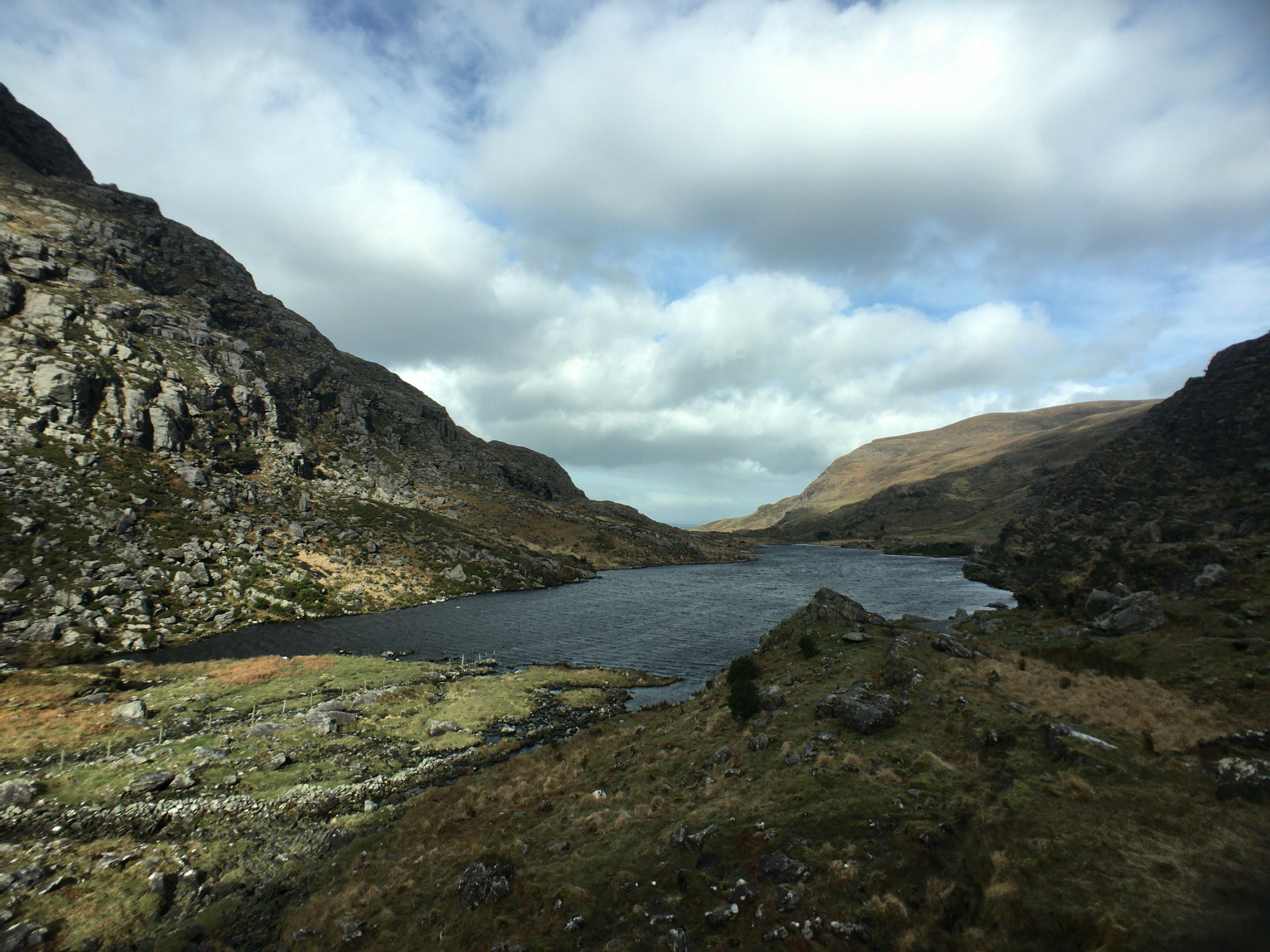
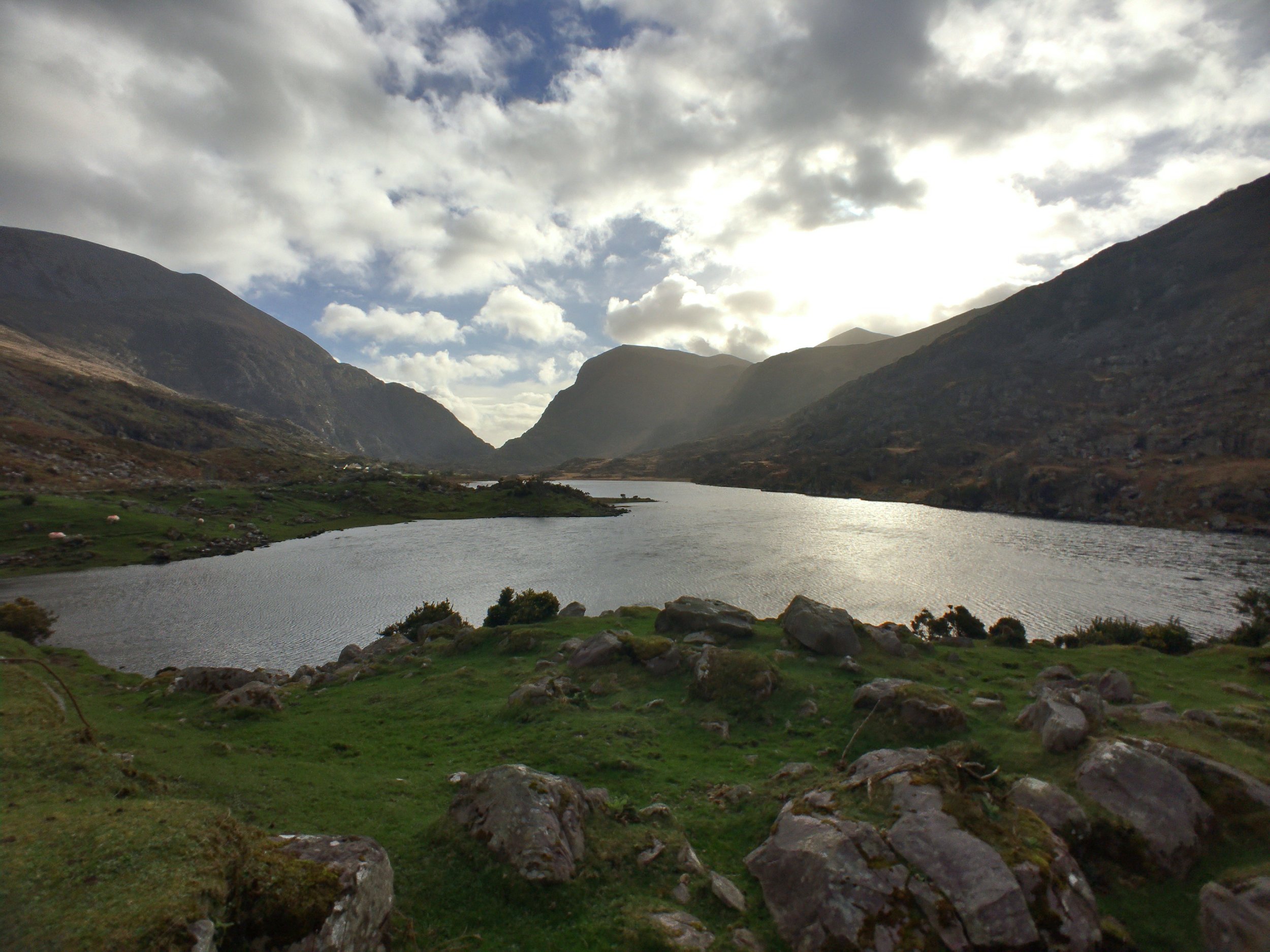
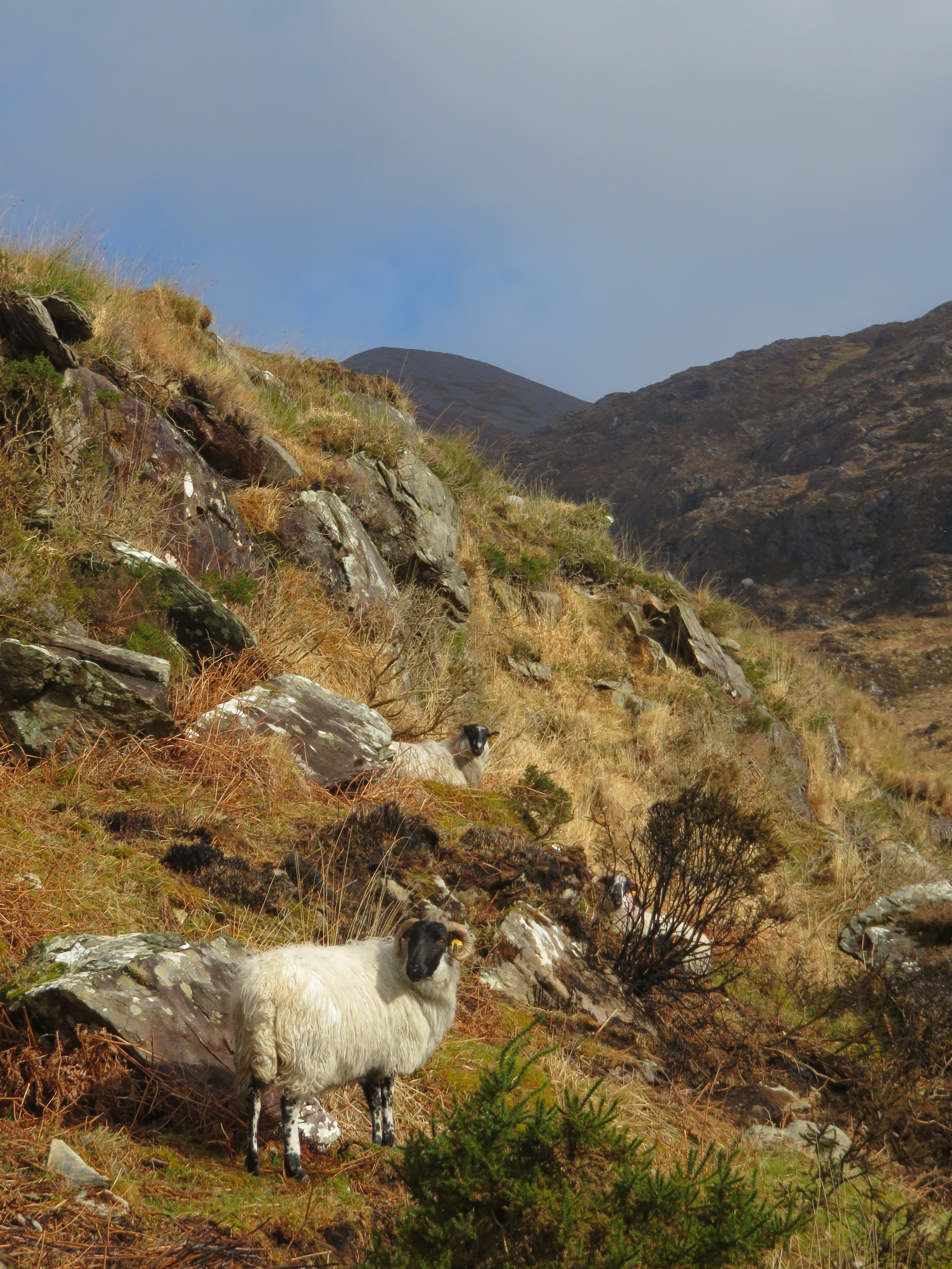
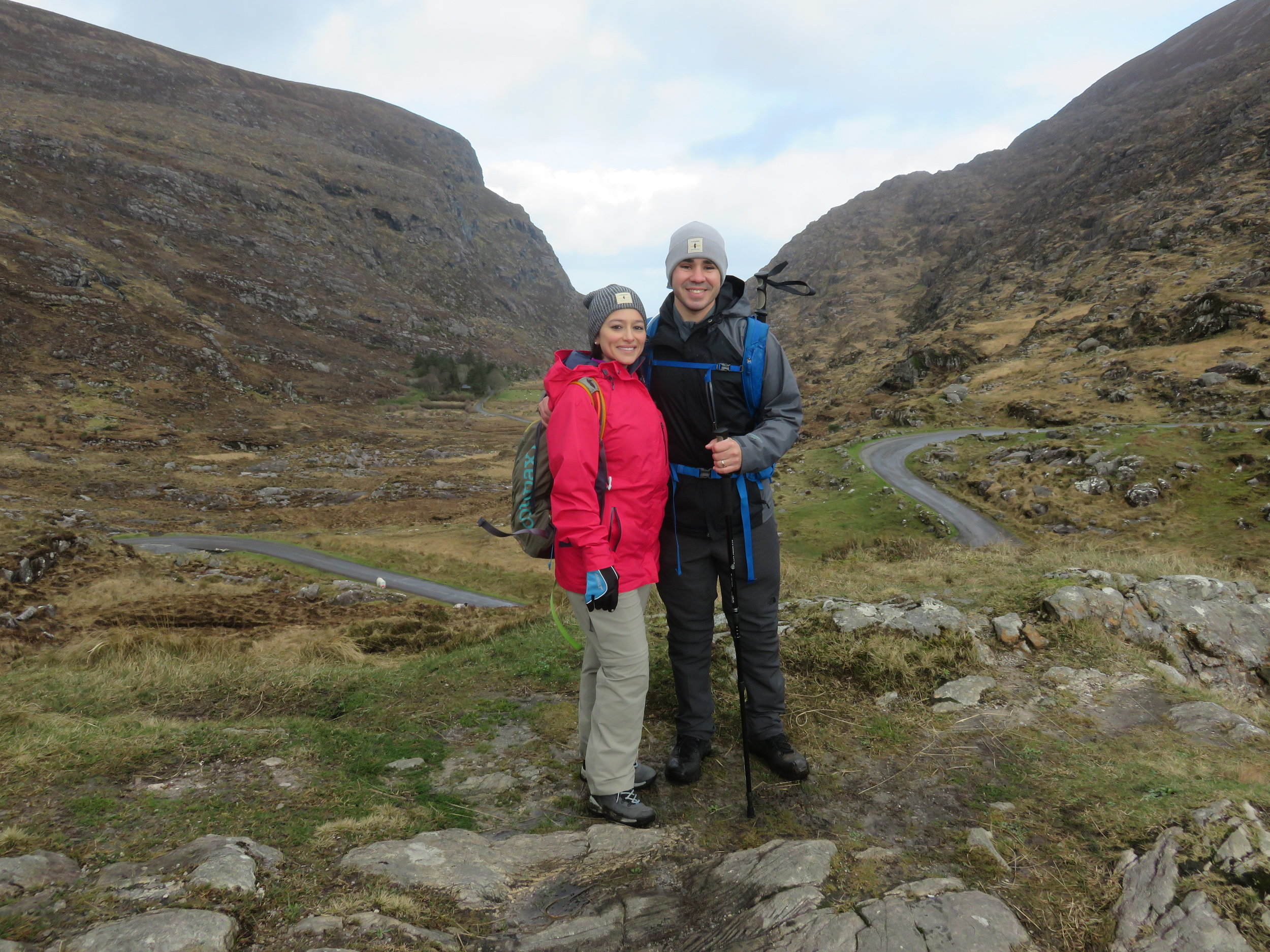
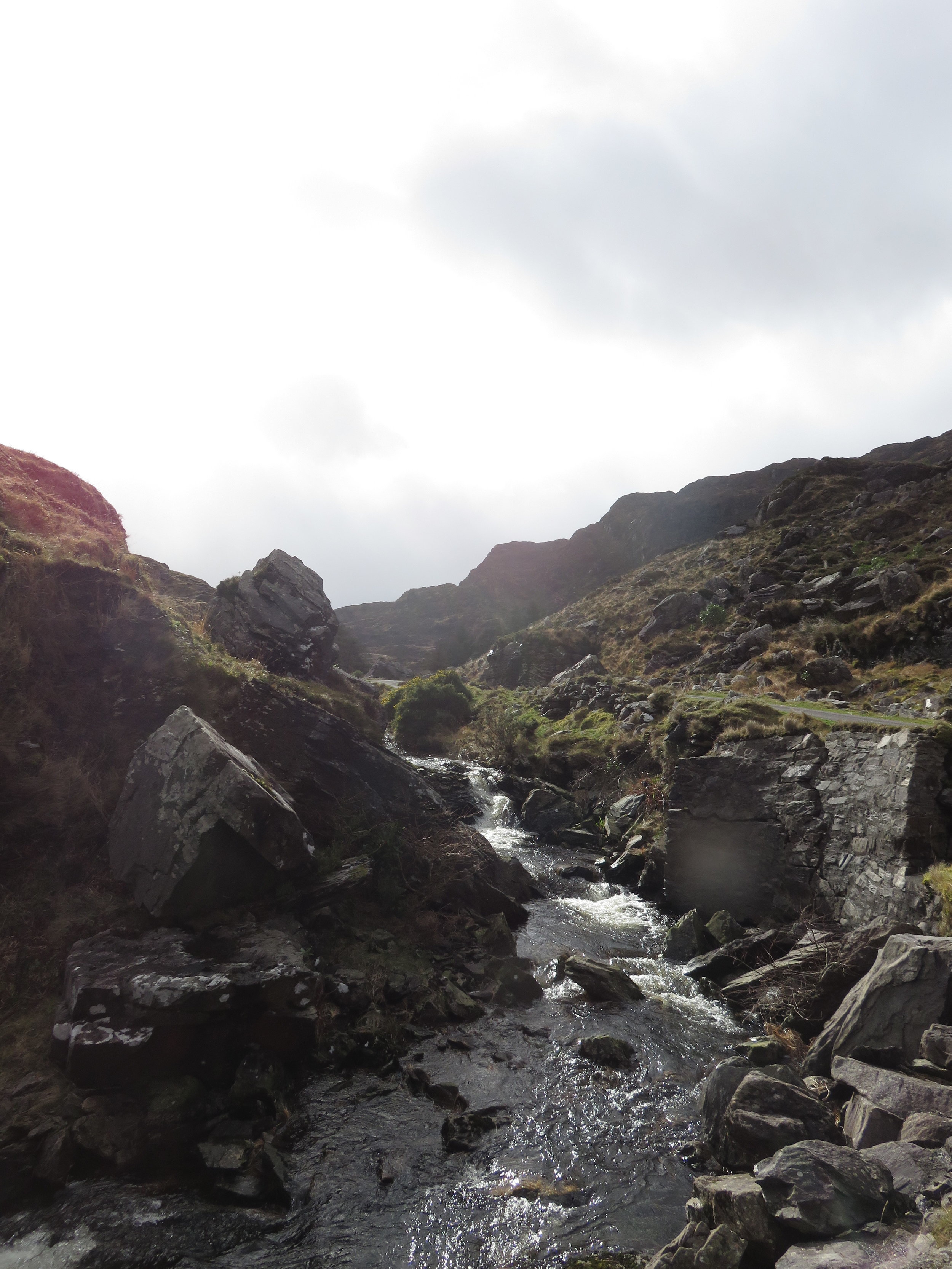

Day Seven:
“Of Torc Waterfall, Ladies' View, and Hidden Ireland”
Originally, slated to be a day of driving through the Ring of Kerry, we decided to heed the advice of our walking guide and hit a few specific spots instead. After a nice filling breakfast, we began our drive towards Ladies' View near Killarney National Park. Mike had told us to take the Molls Gap route, and so that is what we did.
Unfortunately, about a mile away from Ladies' View, we discovered that the road leading to Molls Gap was closed. So we did a U-Turn and had to do a big circle, going through Killarney. This cost us an extra 35 minutes of driving.
We then decided to visit Torc Waterfall as suggested by not only Mike, but Con Moriarty, a guide who we planned to use earlier, but due to weather, canceled. The Torc Waterfall is a small waterfall nestled in an ancient forest. As you walk, you could see the thick moss and growth coming off the trees itself. It looked as though the trees were wearing green sweaters of varying shades. The forest was densely packed and gave a small view of what the majority of Ireland looked like before the Neolithic period. Ireland now has the lowest percentage of forested land in all of Europe - So the area of and surrounding Killarney National Park is a treat to see. The waterfall appeared down a steep stone pathway, and it was a sight!
From Torc Waterfall, we began our way to Ladies' View, but as we drove, we saw a sign for a location called "The Meeting of the Waters." That sounded interesting, so we pulled over and walked. The path followed the coast of Muckross Lake and continued to the "Meeting of the Waters" where Muckross Lake and Lough Leanne meet. It was an unexpected sojourn, but one that produced some excellent pictures.
Once we left The Meeting of the Waters, we finally made our way to Ladies' View. This particular location overlooks a valley with multiple lakes in view. The reason it's called Ladies' View is because when Queen Victoria visited Ireland, her "Ladies in Waiting" were fascinated by the view from this overlook, hence Ladies' View. Unfortunately for us, when we arrived at the view, a cloudy haze had come over the mountain and made its way into the valley below, draping the mountainside, and the lakes in a thin mist.
Once we departed Ladies' View, we made our way to Killarney, where several times beautiful vistas caught our attention, forcing us to pull over to a safe spot, get down and trek. Some of these spots had no name, they were just there, small parts of Ireland waiting to be explored and seen by those daring enough, and intrepid enough to see them.
When we reached Killarney, we saw how crowded the city was, how touristy it was; how, unlike the rest of our experience in the country thus far. Here, we truly realized that we'd been spending our time in rural Ireland, hidden Ireland. It made us long for the smaller Kenmare. We walked around Killarney, stopping by a small coffee shop where I had a double espresso shot with a scoop of vanilla ice cream. Don't judge, we only had breakfast at 9:00am, and it was 4:30pm! After perusing a few shops and taking in the hustle and bustle of Killarney, we hopped into our car and made our way back to calm, quiet Kenmare - all before nightfall.
Our night was capped by going to the #1 TripAdvisor rated restaurant "The Mews." It was delicious; it wasn't Irish food, but more like trendy fine dining. A sweet ending to a beautiful day. Tomorrow we hike to Bolus Head!
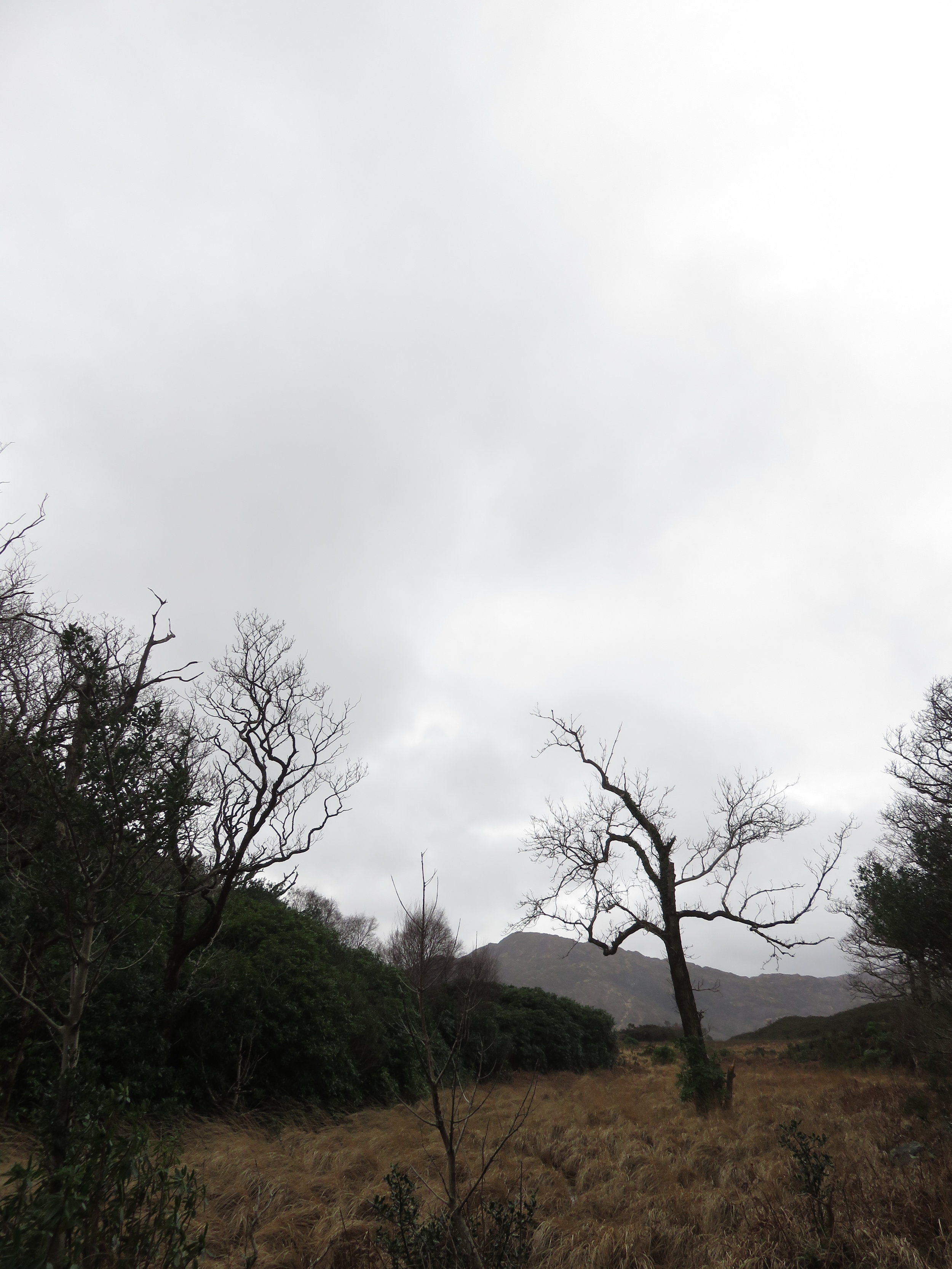
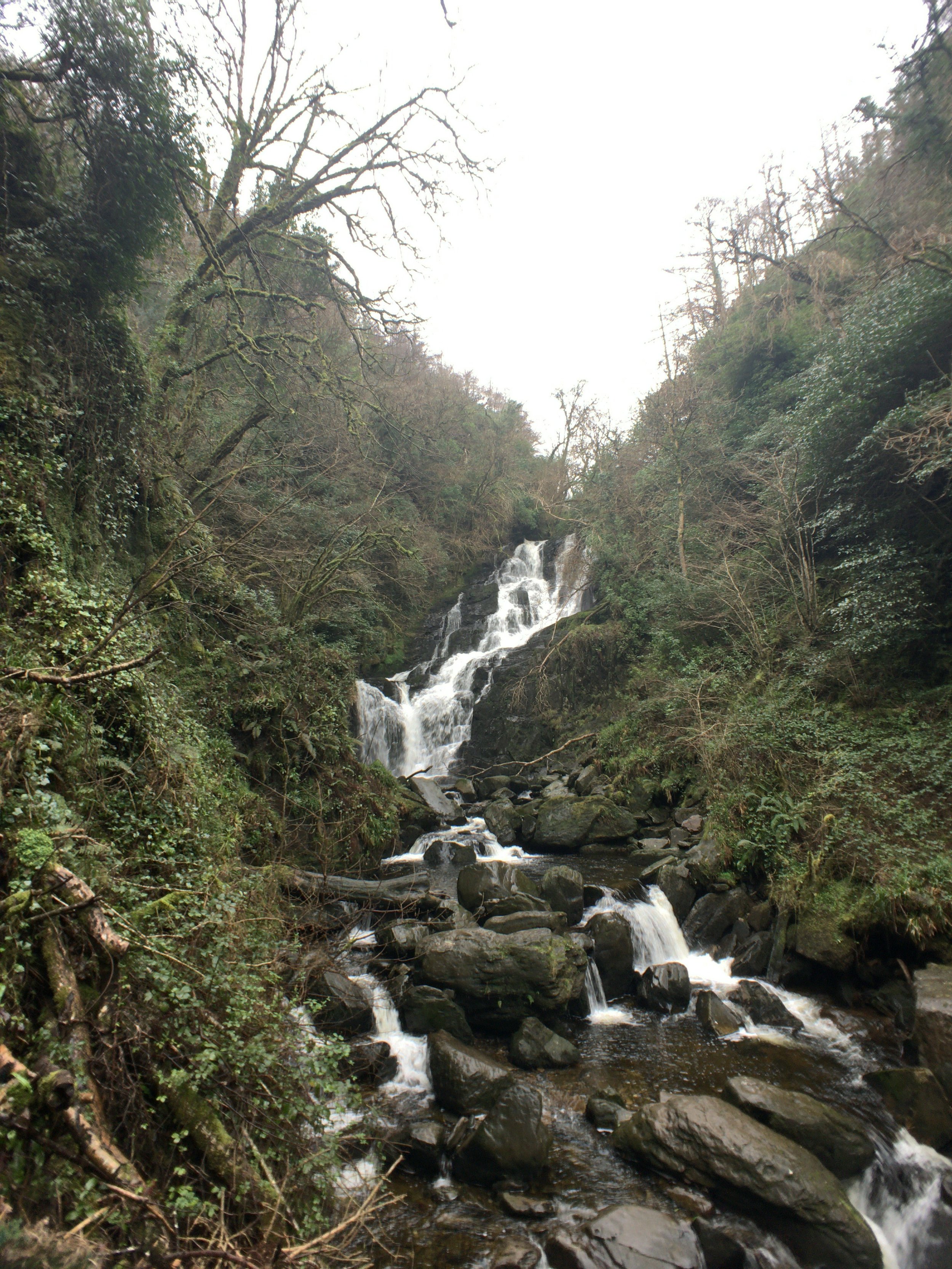
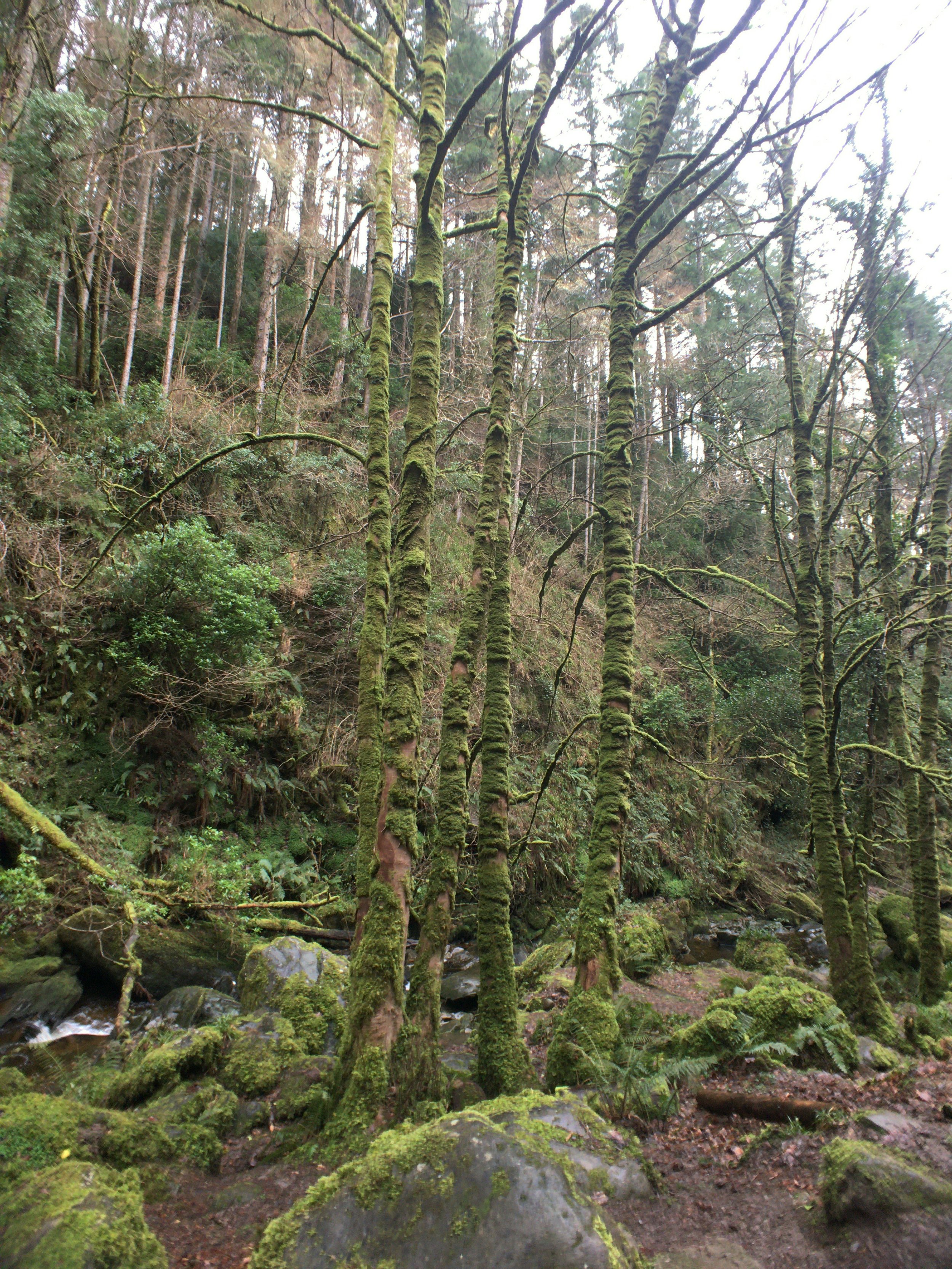
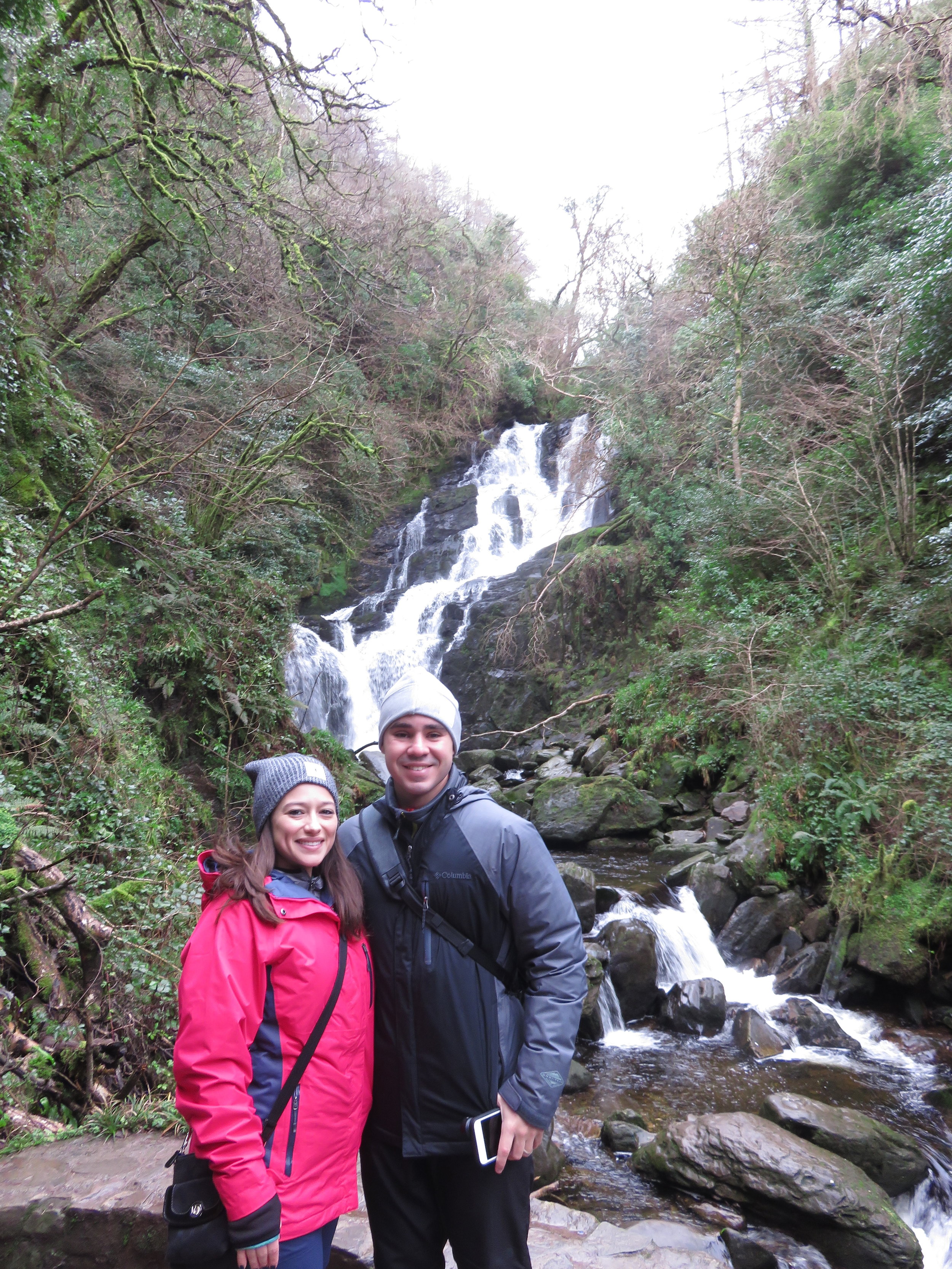
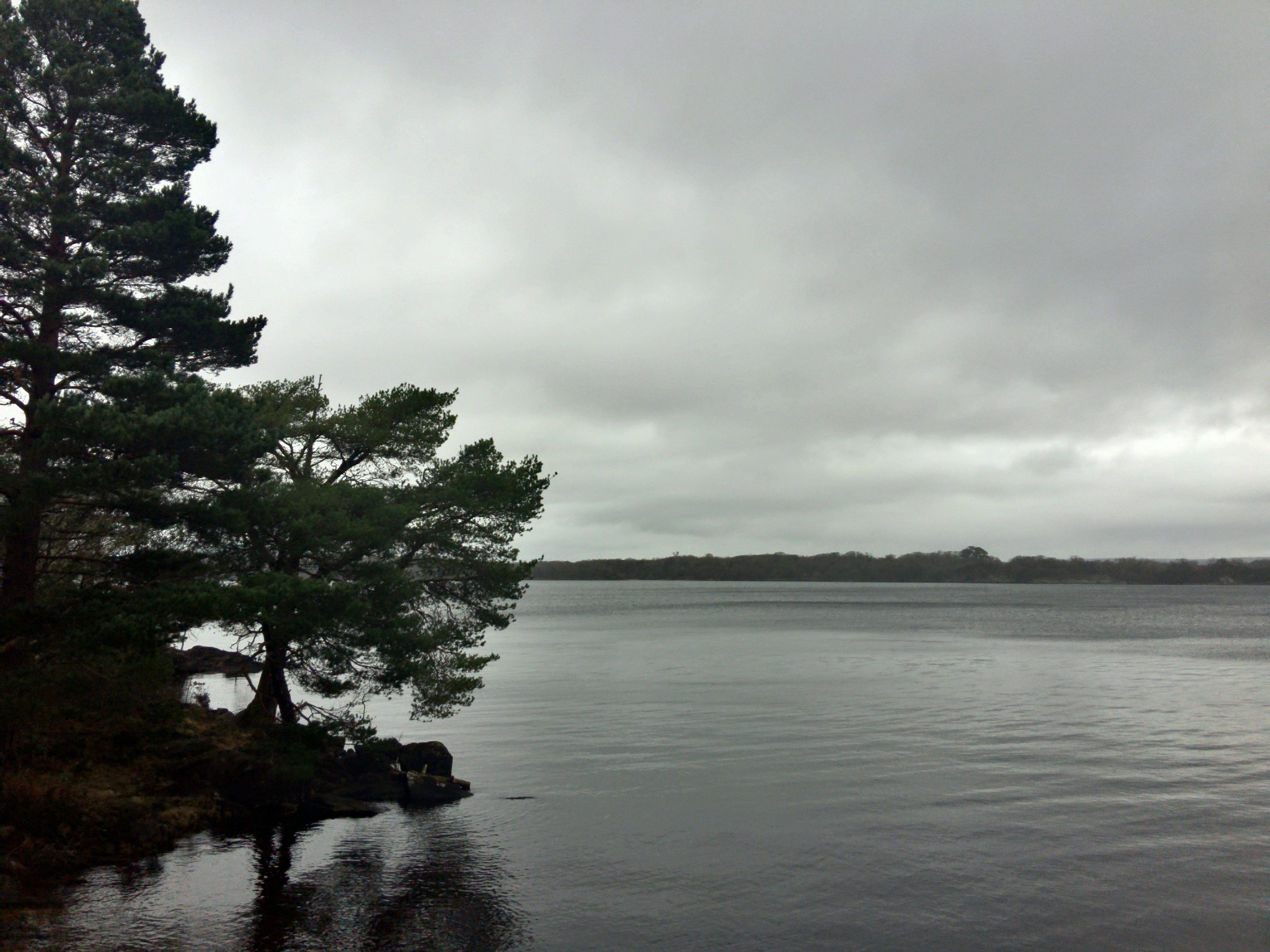
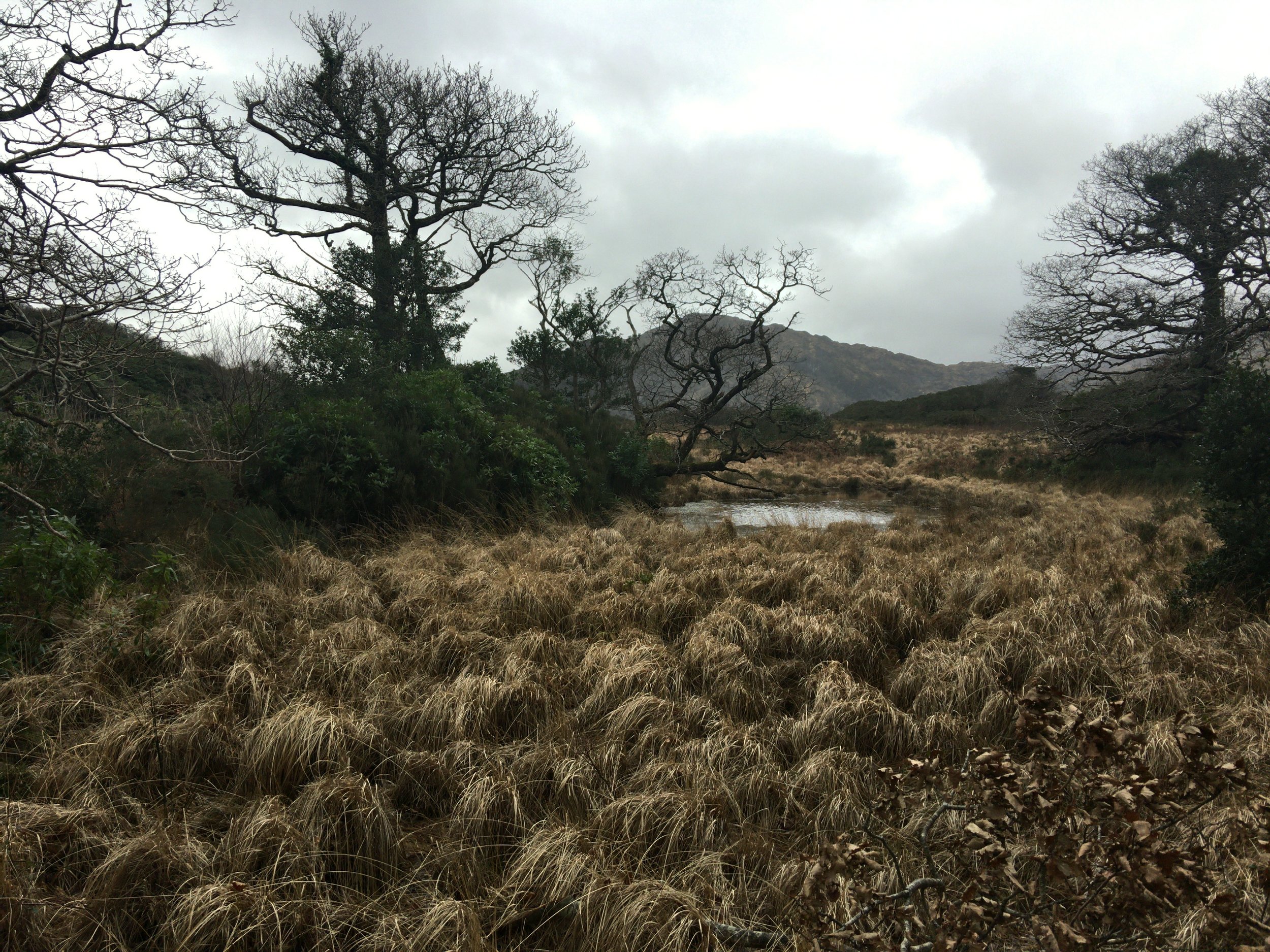
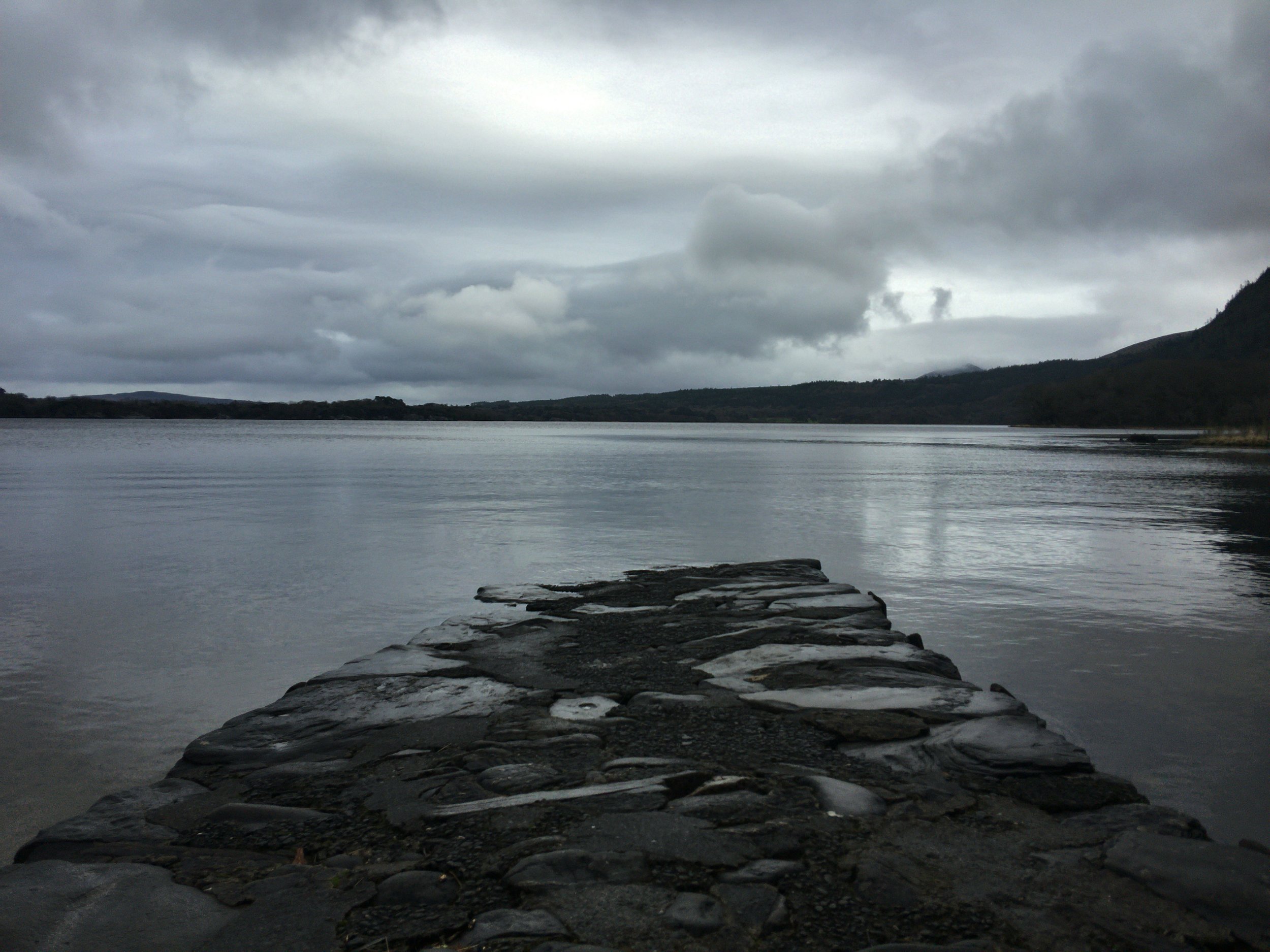
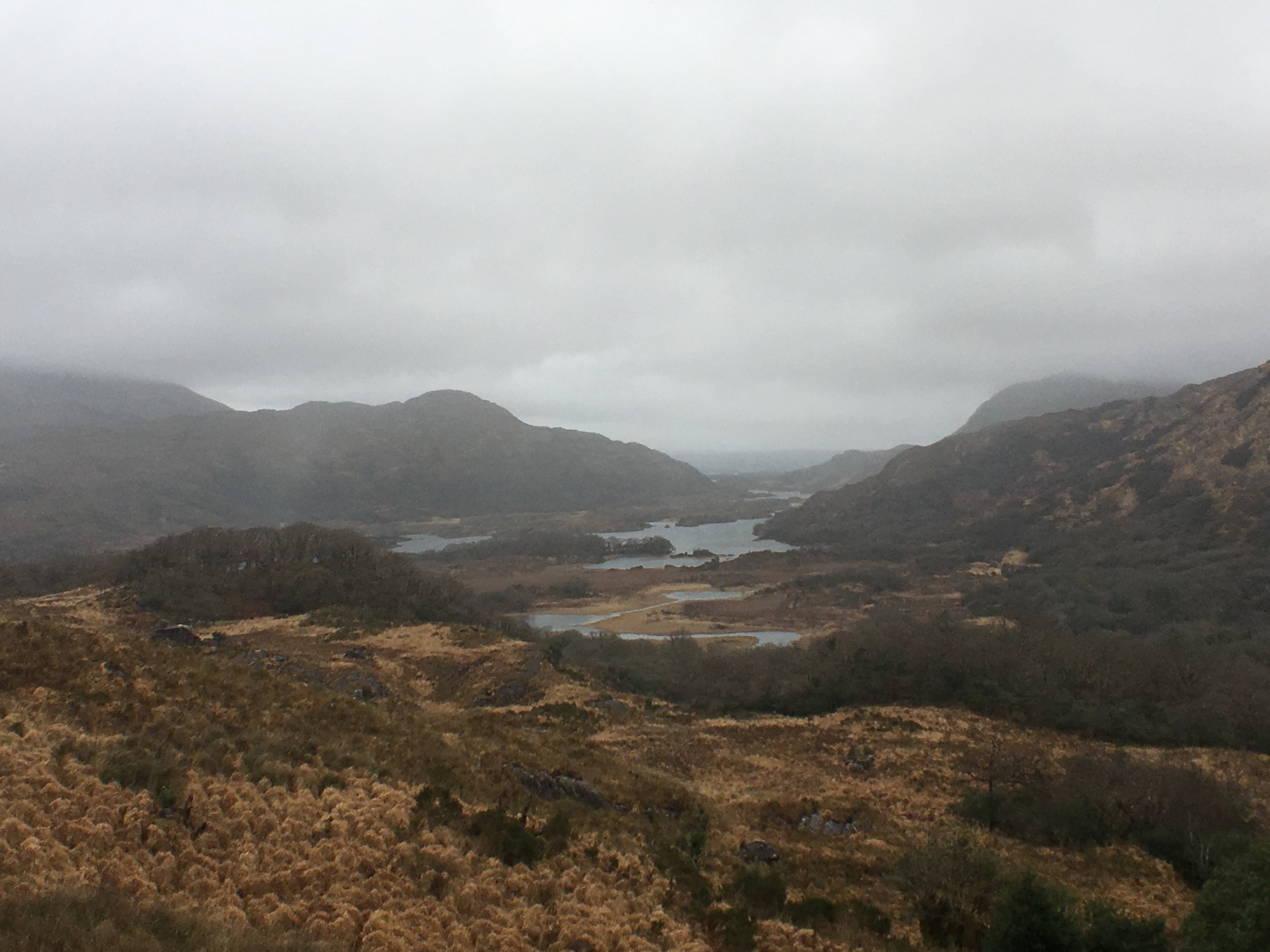
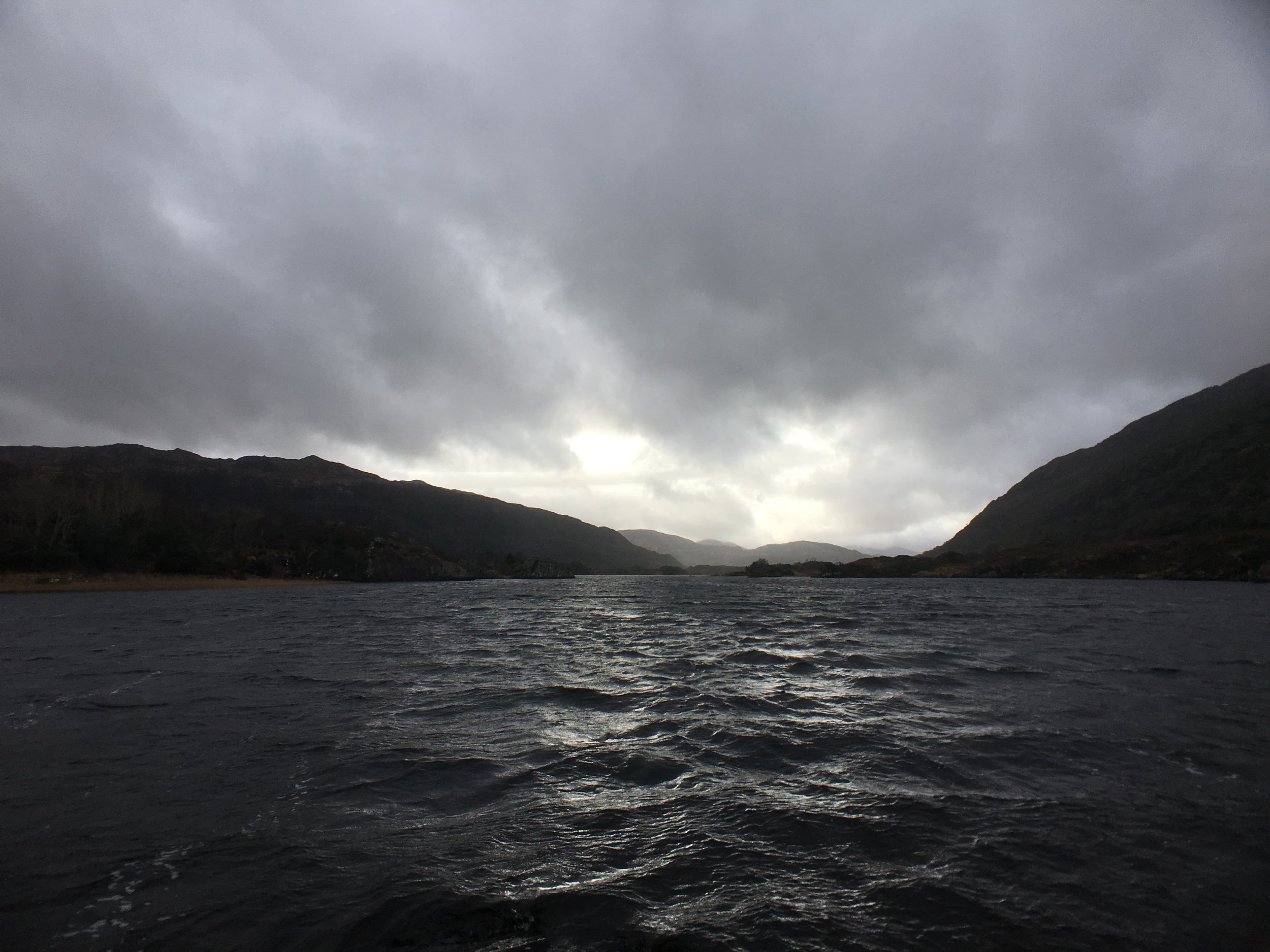
Day Eight:
“Of Muckross House & Ross Castle”
Mike called us at 8:30AM with the unfortunate news that we would need to cancel our Bolus Head hike. The reason being that Bolus Head is a coastal hike, and the weather was stormy; light to medium rain, and wind. He didn't feel that it would be safe or worthwhile to attempt the hike. We couldn't blame him, we appreciate a guide who would put our safety ahead of making a euro.
With our schedule changed, we decided to visit Muckross House. This house was built in the late 1800s as a palatial estate. So much so that Queen Victoria was invited to stay on the property for two days. They prepared the estate for her visit for six years. The Queen was accompanied by an entourage of over 100 people. This visit bankrupted the original owners. They then sold the estate to an individual who then gave it to their American daughter and her Irish fiancé; a judge who at the time was working in Zanzibar. Unfortunately, the daughter, after having lived there several years, died prematurely of pneumonia while on a trip back to California to visit her sick father. Her father survived the sickness and lived many more years. The family then donated the estate and all its land to the Irish government, making it Ireland's first national park. There is no Mr. or Mrs. Muckross, the name is a mix of Gaelic words. Muck meaning boar, and ross meaning peninsula.
After the tour, we left to visit Ross Castle. Ross Castle was closed, as many things in Ireland are in February. Thus we walked around the property, then took a hiking trail to Ross Island which was used since the bronze age as a rich source of copper ore. The mining trail bordered the coast of the island to the south and west. The forest, like that of Torc, was old - it was quiet, save for birds singing. Eventually, we came across a solitary and peaceful beach with mountains off in the distance and small islands about a quarter-mile off the coast. We sat on a rock and had a snack while enjoying each other's company, and the peace.
From there, we headed back to Kenmare where we had chocolate croissants at a French bakery, manned by a very French man and woman.
Dinner was at a Pub where a trio of old Irish folk played trad music.
The night came to a close with a warm fire, looking forward to better weather and a hike along Lough Acoose.
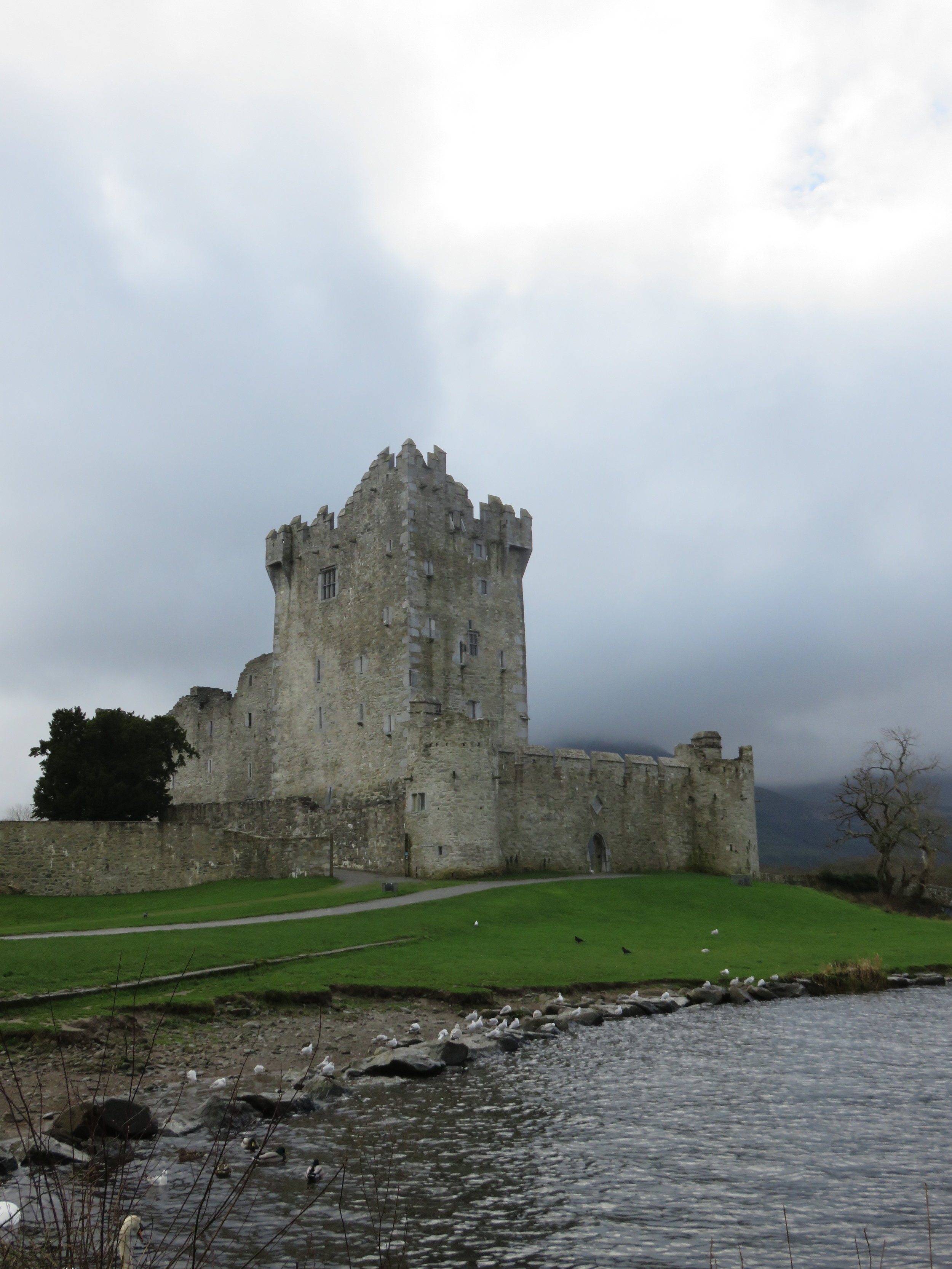
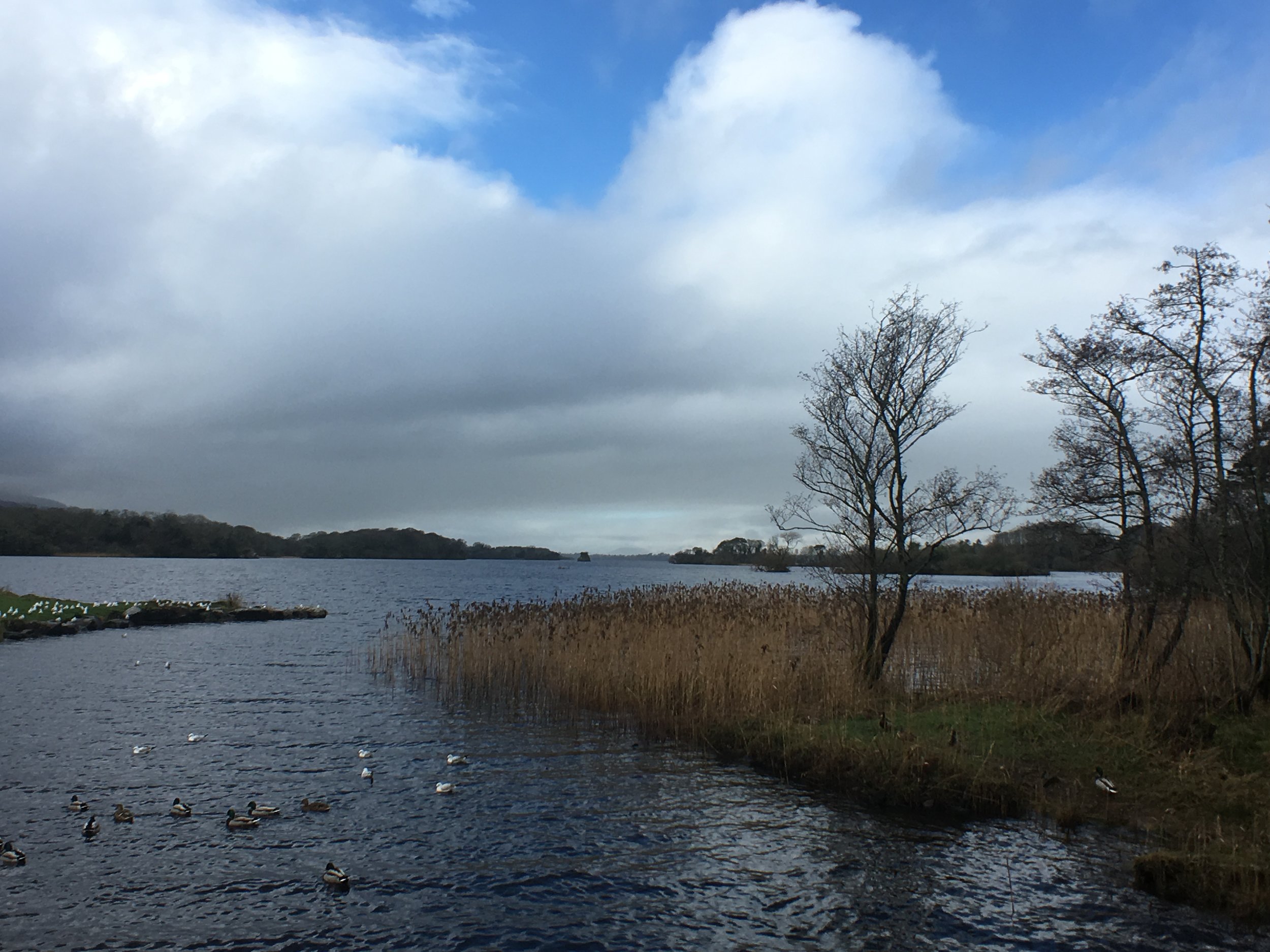
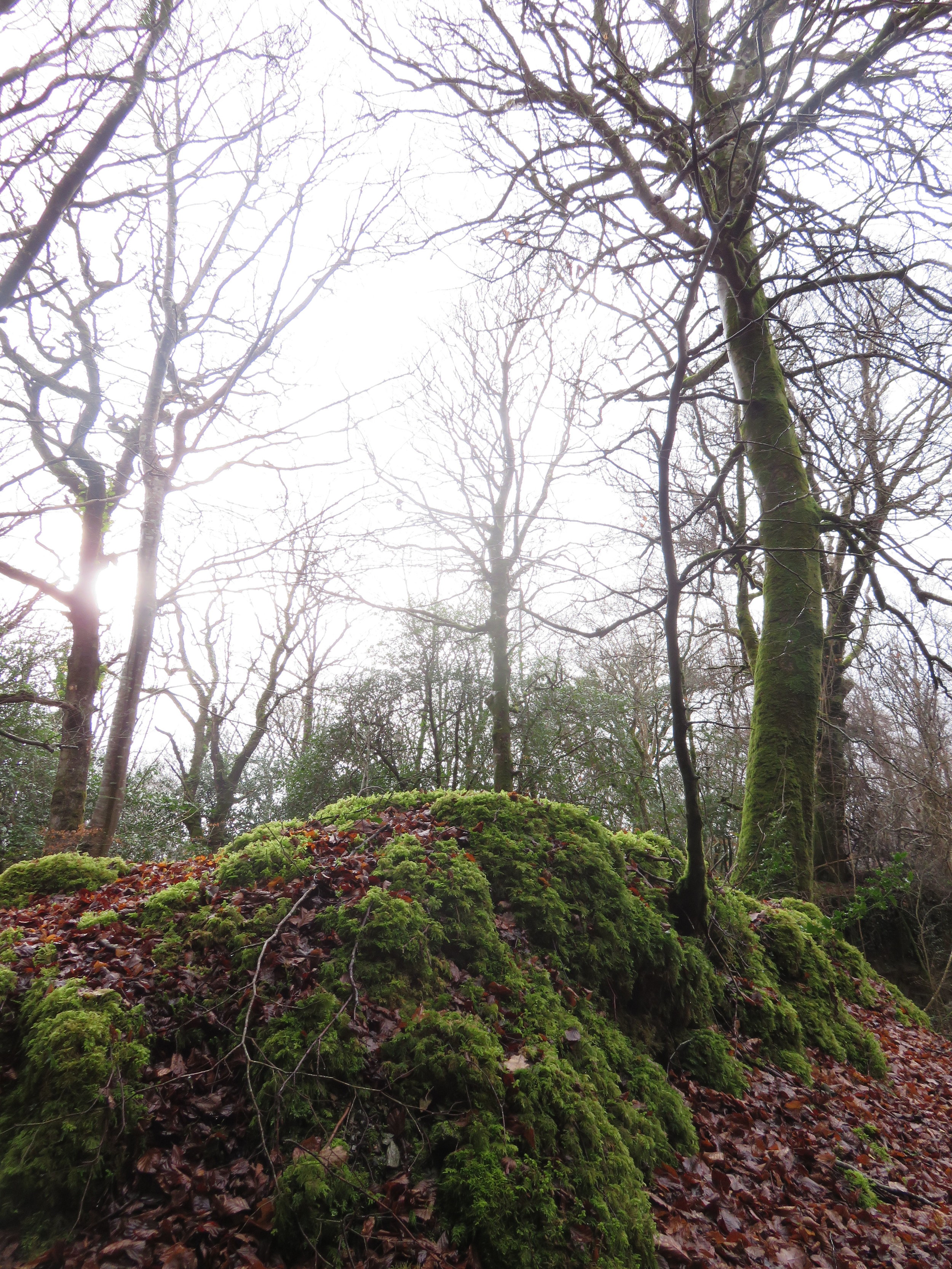
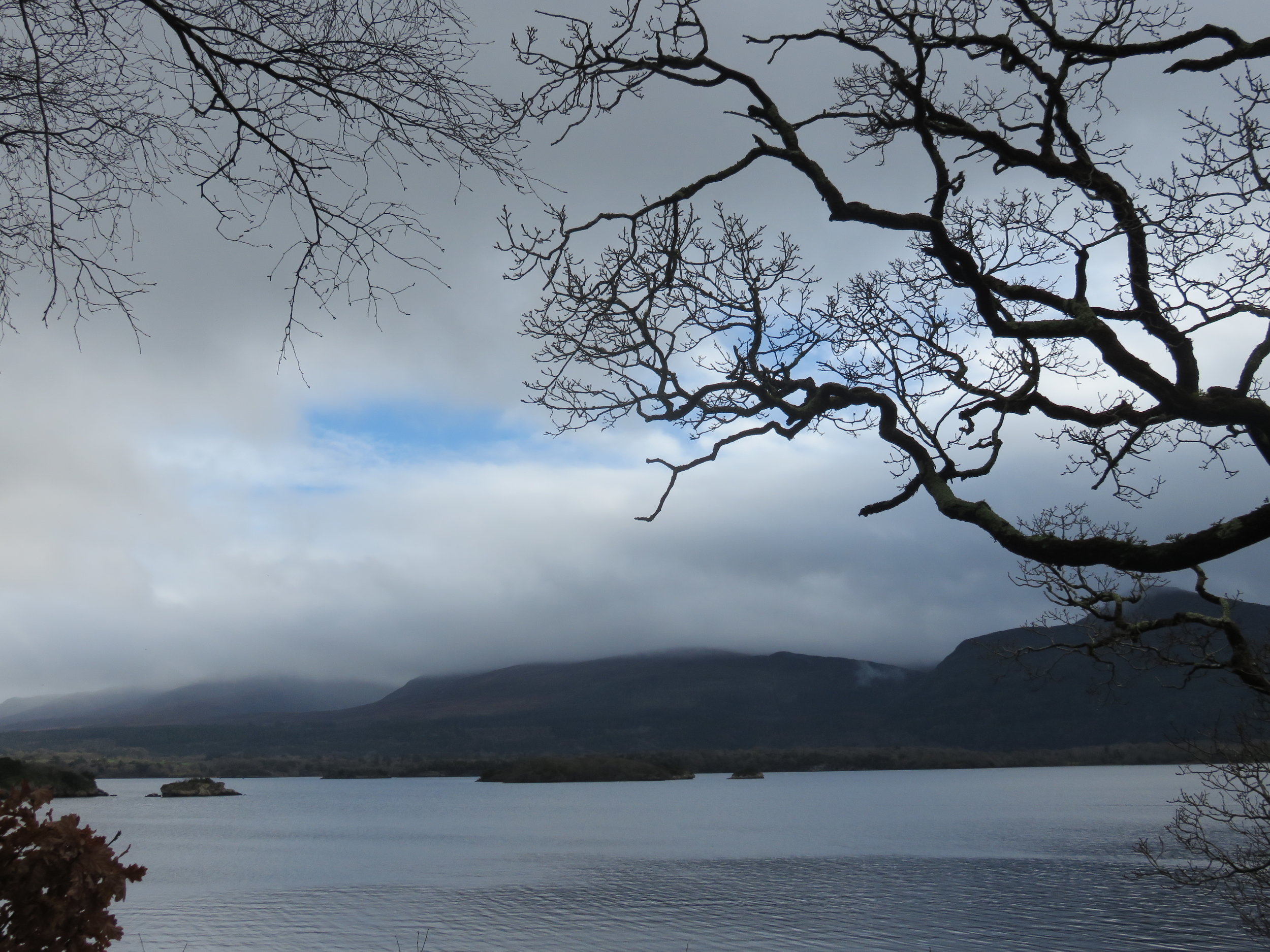
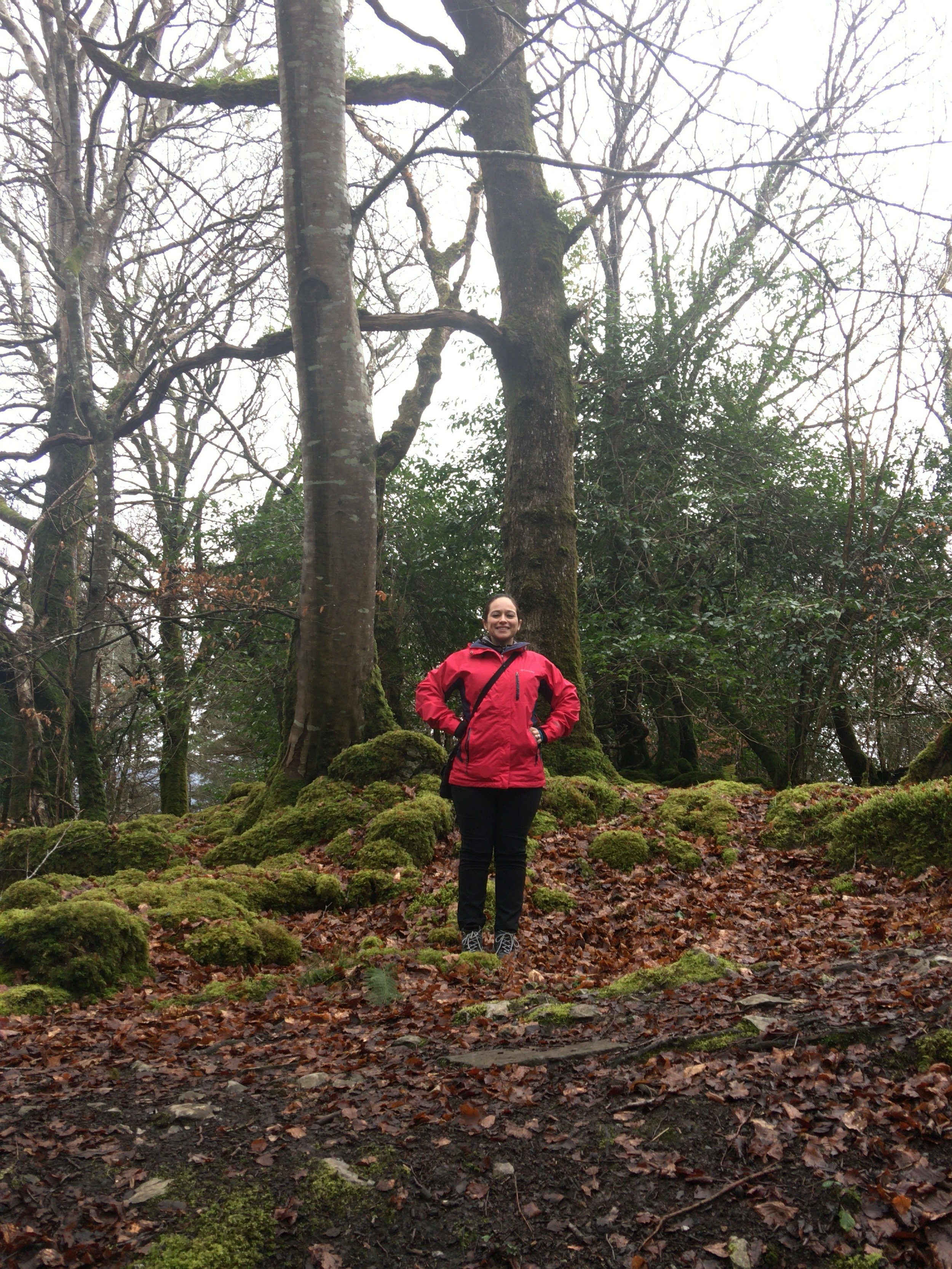
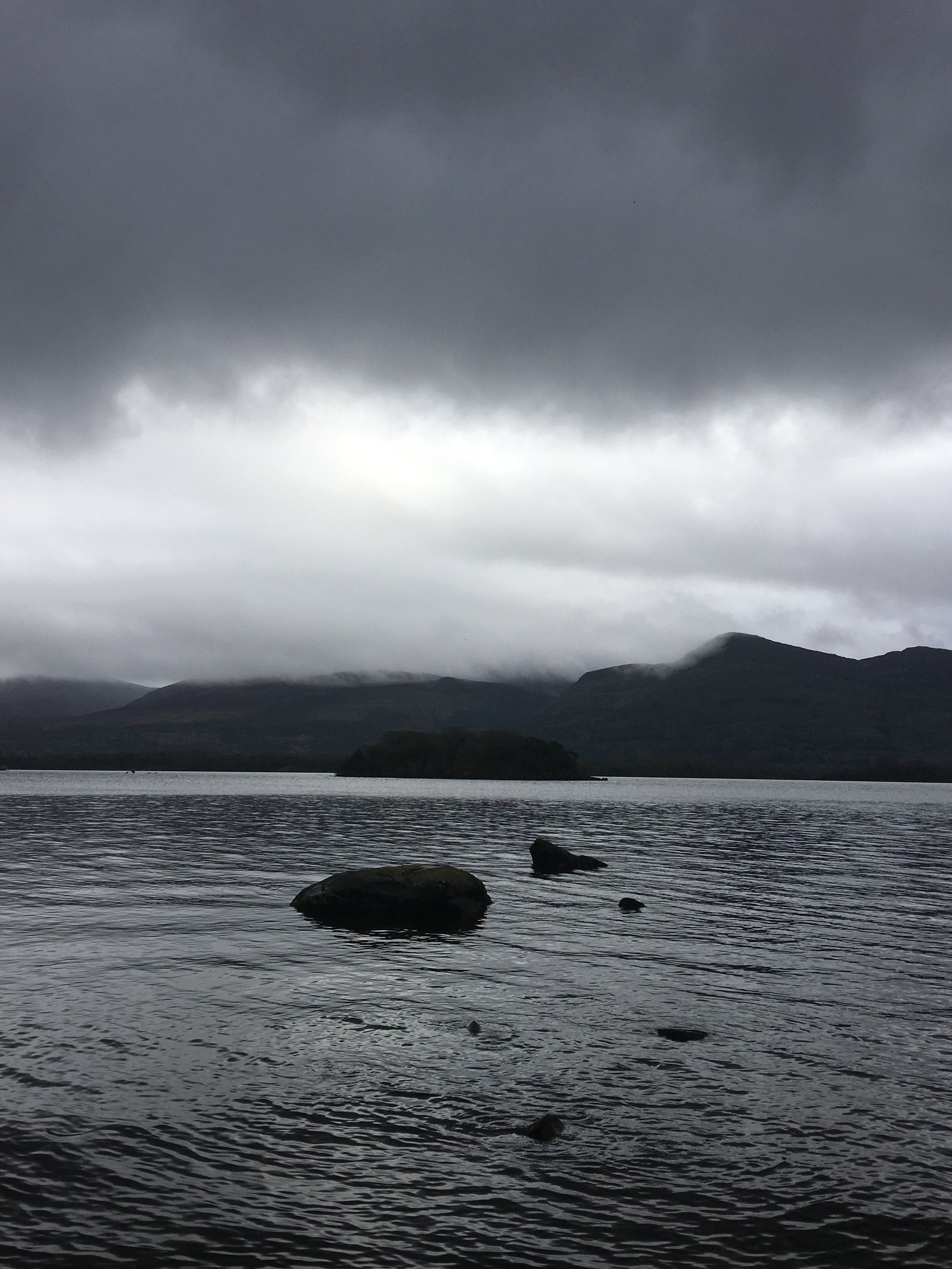
Day Nine:
“Of Meeting & Rossdohan Island”
The day began before our alarm even went off. The sound of howling wind and large drops of rain hitting our window woke us up. We quickly realized that our hiking trip to Lough Acoose was going to be canceled. Nevertheless, we got up and ready, but also setting aside clothes for meeting.
At 8:50, Mike called to tell us there were weather advisories out, and that he could not even fathom taking us out in this weather; he'd call us later in the day if it cleared up. So, we quickly changed out of hiking gear, and into meeting clothes, putting all the gear into our bags. We then made our way to the Killarney Congregation.
It was nice to once again be with the friends in the congregation, and especially encouraging to associate with them after the meeting until it was practically empty. During the conversation, an older sister came up to me and asked about my comment regarding Pioneering. She then related that she has been in full-time service for 52 years. Amazing. What is also nice is knowing that no matter where you are in the world, you have a family.
Mike called during the meeting to let us know that the weather looked better and where/when to meet up. We headed off to meet him after the meeting was over. During the hour drive; we experienced over seven cycles of torrential downpour, followed by bright, cloudless sky, followed by torrential downpour, followed by sunlight.
We met Mike and Jill at the Sneem Hotel, where we followed them to the outskirts of a nearby golf resort, Parknasilla. From there we took small golf trails around the course and through the resort's property. It wasn't until we reached an old fort where things got interesting. The bay opened up before us, and it was spectacular.
We followed small little trails in between trees and rare species of plants. When I asked Mike how he knew about such little hidden gems, he said: "It's because I grew up here!" We passed through areas where tourists were not allowed to go, but locals were okay - we were with locals; experiencing sights and sounds very few tourists ever get to experience.
That is when Mike turned to me and said: "I got something for you." And a few seconds later, a ruined palatial estate came into view. A beautiful husk of what once must have been a beautiful mansion. The mansion was destroyed in a fire around 1920 by rebels during the Irish War for Independence. It is now an abandoned, slowly crumbling relic of a by-gone era, a silent sentinel overlooking the bay – right up my alley. We carefully climbed to the roof and took pictures as well as the surrounding area, including servants quarters. Mike informed me that this place is known by few, and seen by even fewer, and experienced by virtually no tourists. Hidden Ireland, indeed. (Historian aside: The estate was built in 1875 by Thomas Heard, part of the very wealthy Heard family. He was a retired surgeon who worked in India. He died in the early 1920s, and the house soon after that was burned)
From there, we continued down a small peninsula in the bay met crashing waves and storm clouds on the horizon, slowly eating their way through the sunshine.
We then made our way back, happy we were able to enjoy such a great hike - something few tourists ever get to see.
Later that night we ate at a small restaurant named No. 35. The owners grow a good portion of the food they serve, including award-winning free-range Saddleback pigs. Delicious!
Tomorrow, weather permitting we may try another hike, but then it's on to our next destination of Dingle.
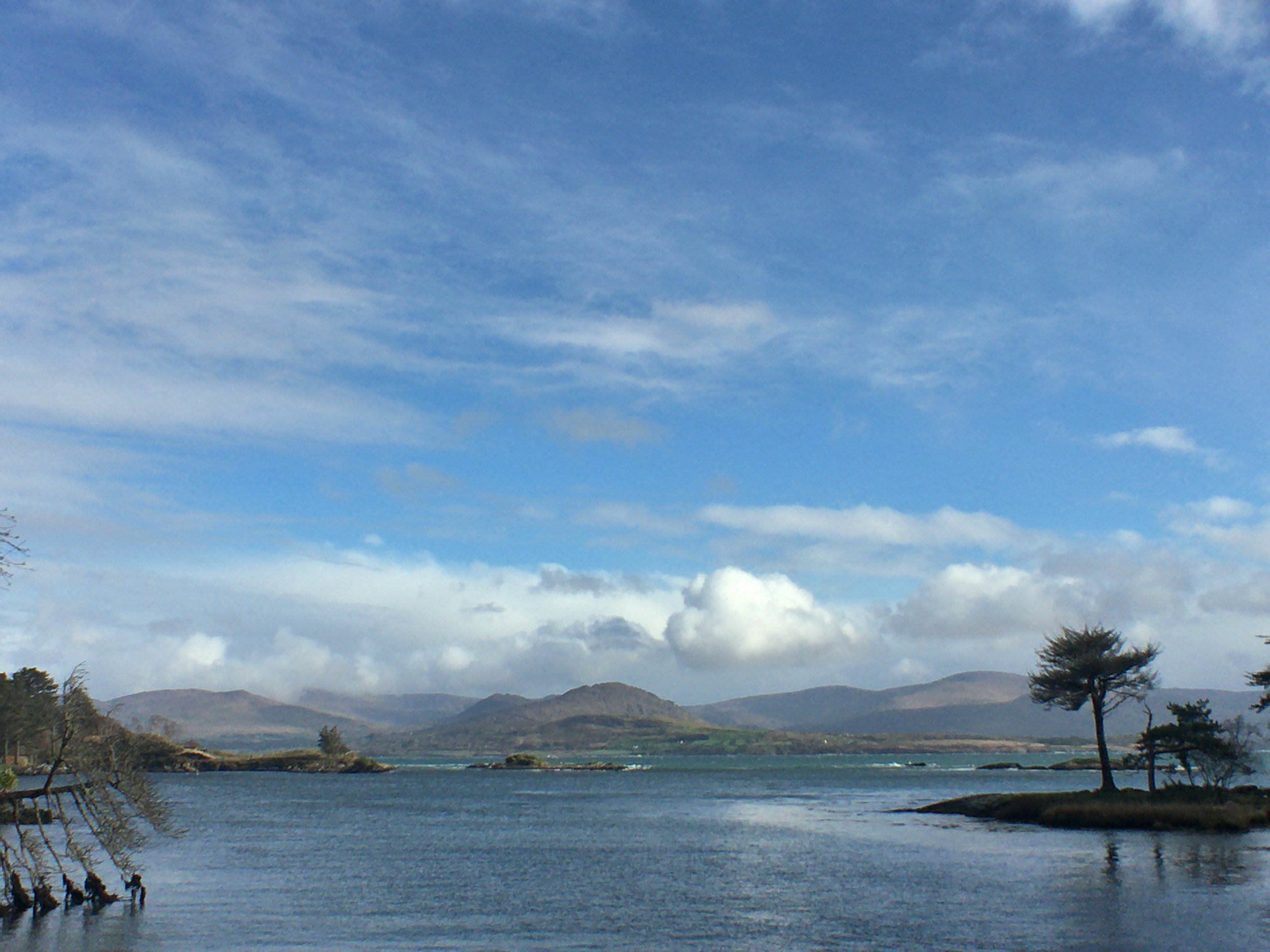
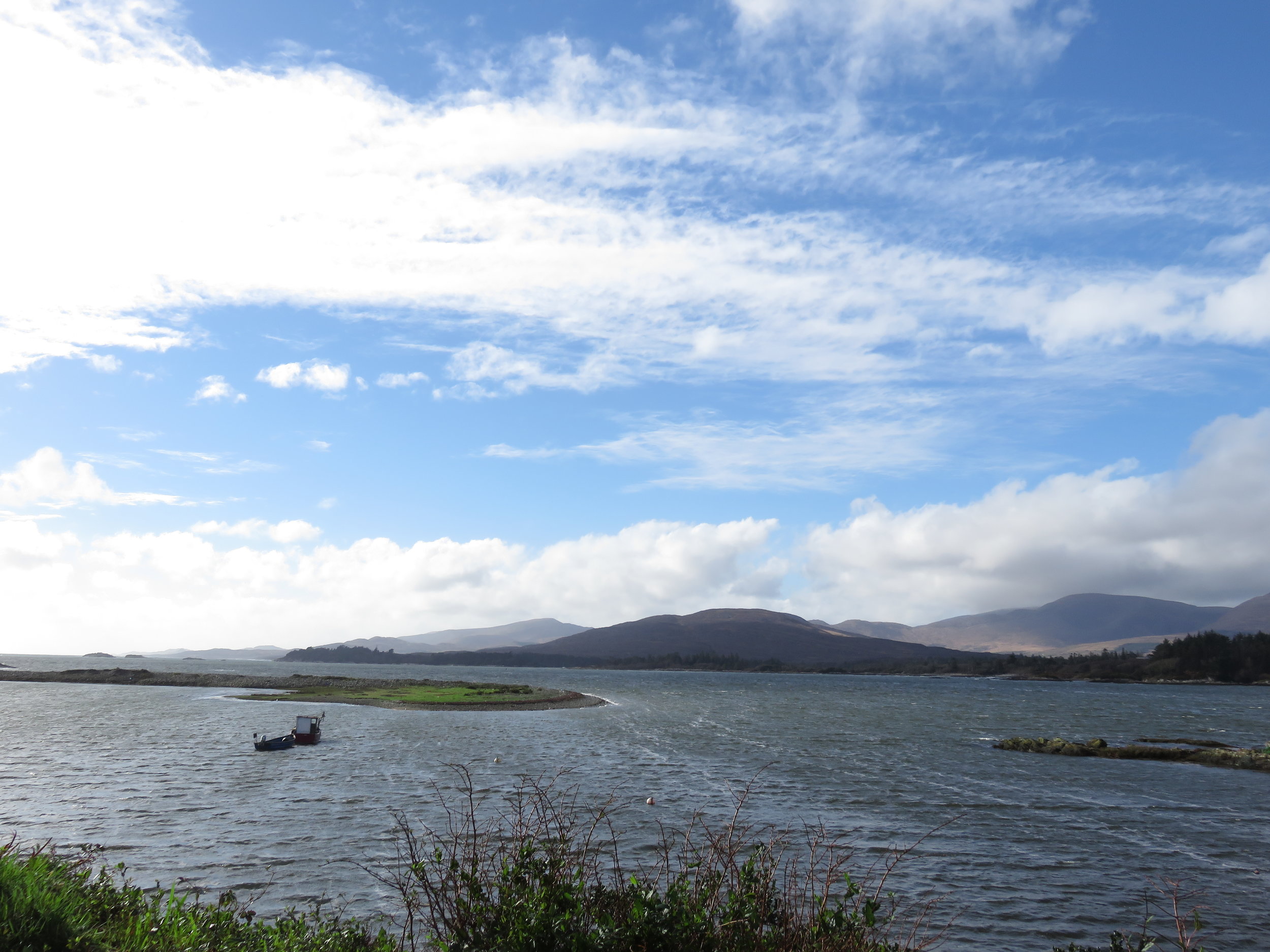
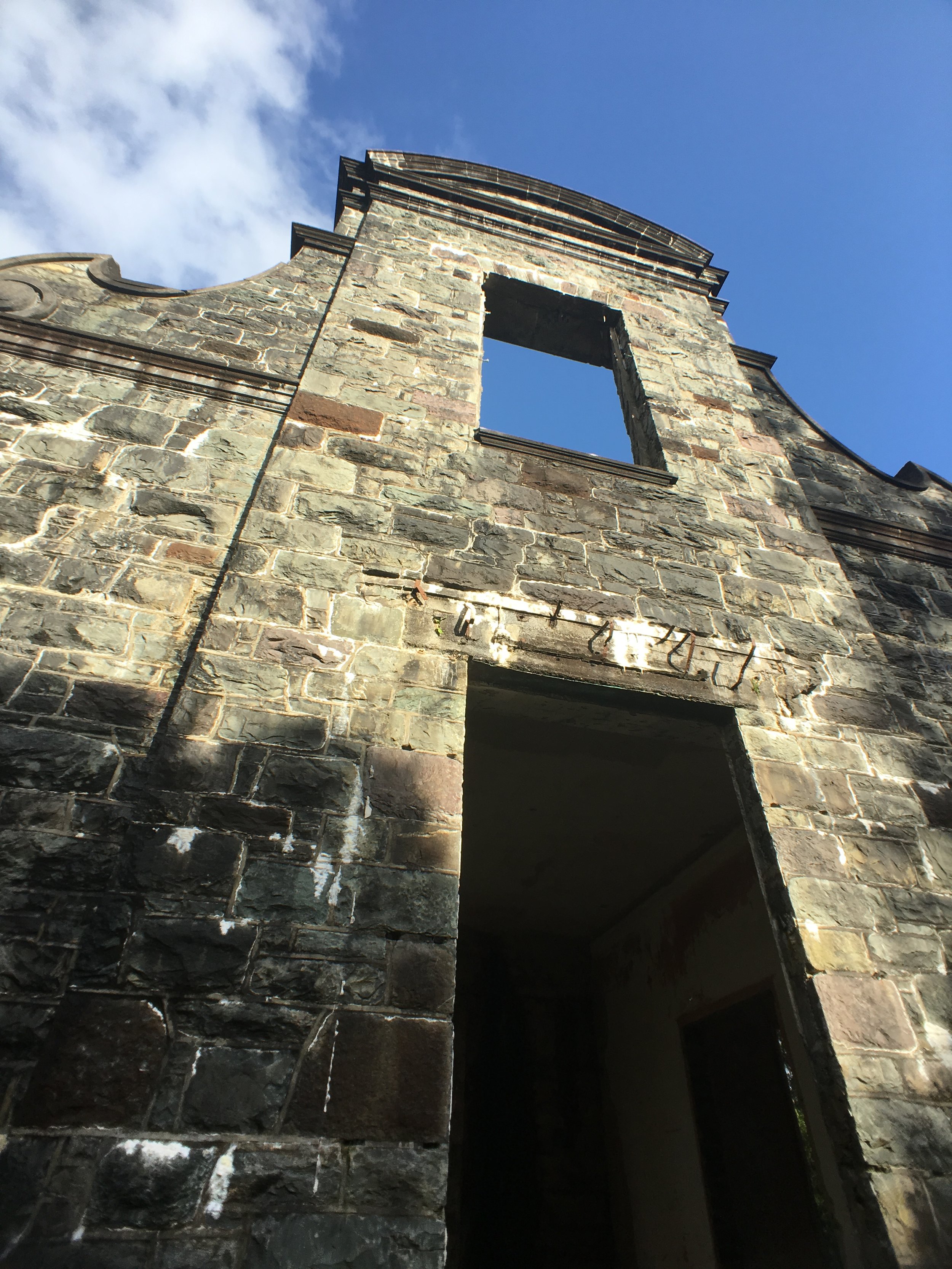


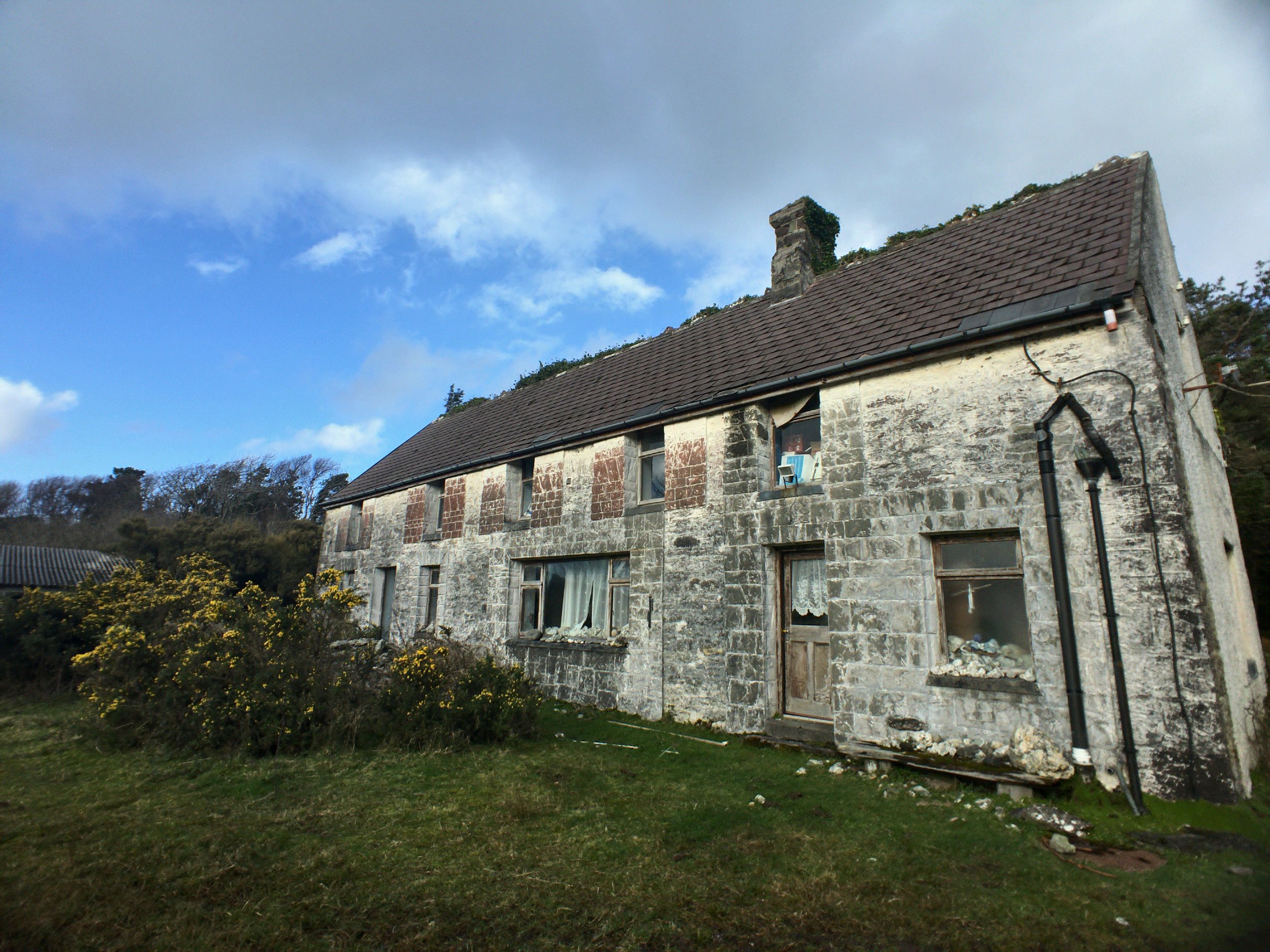
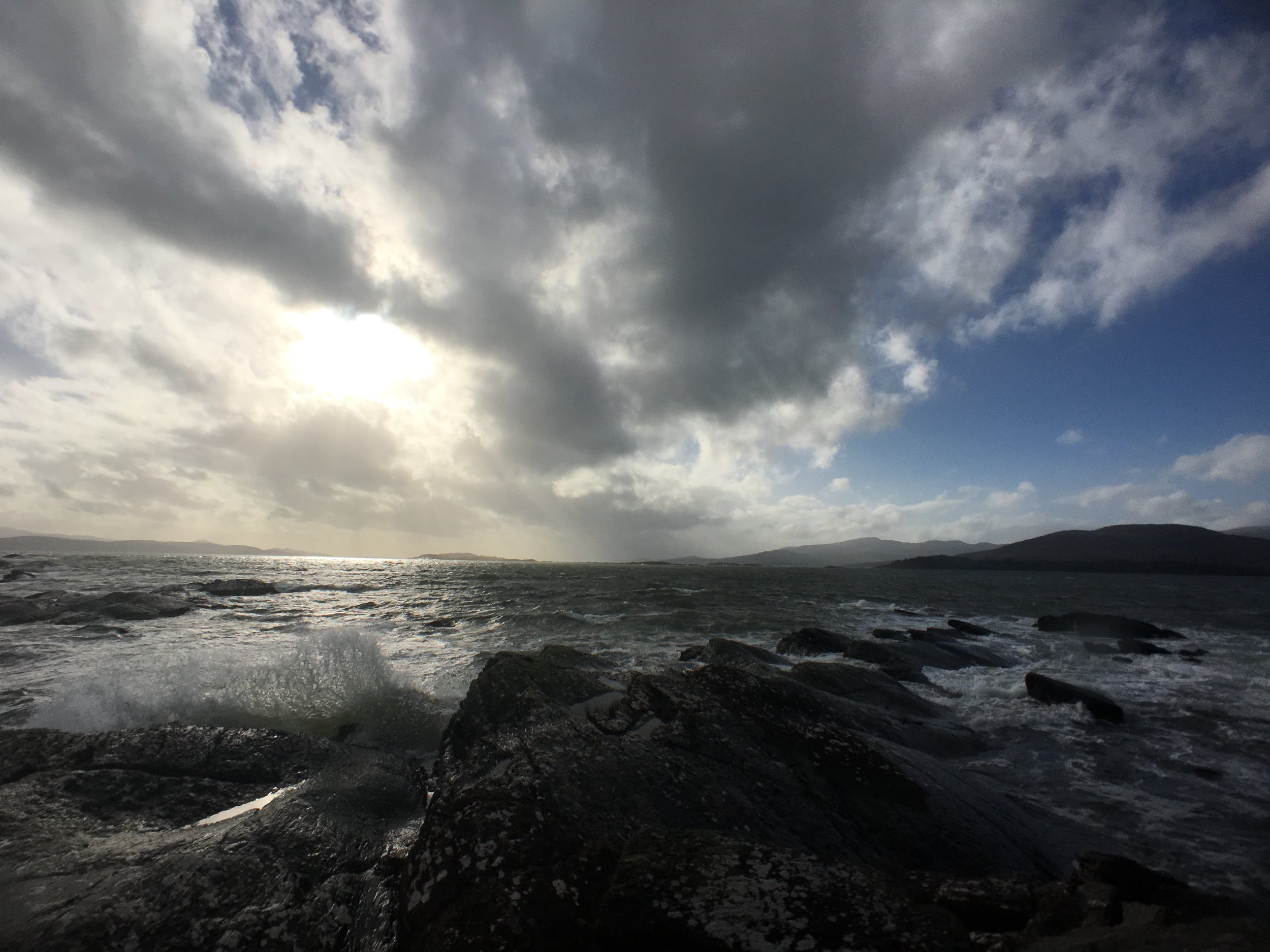
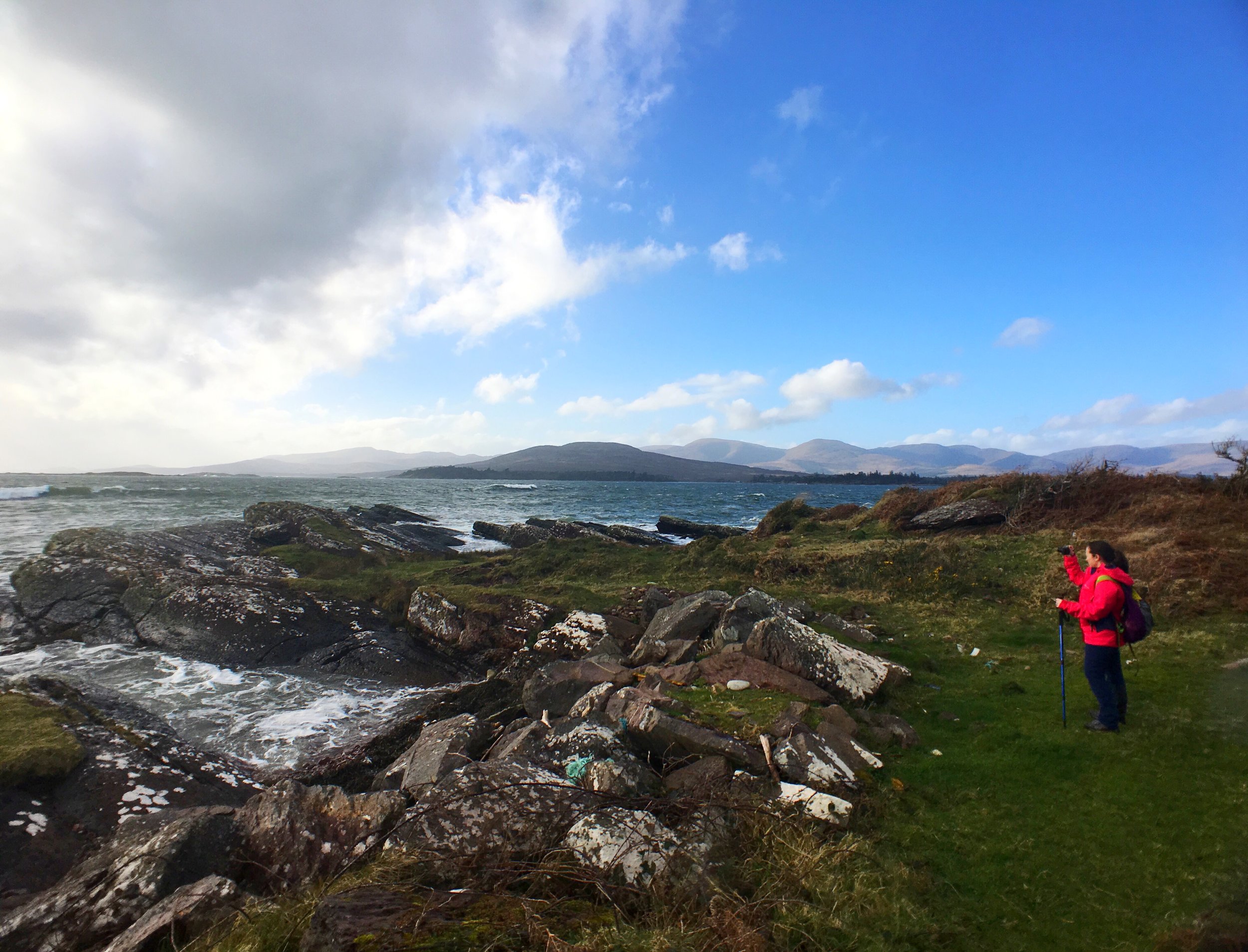
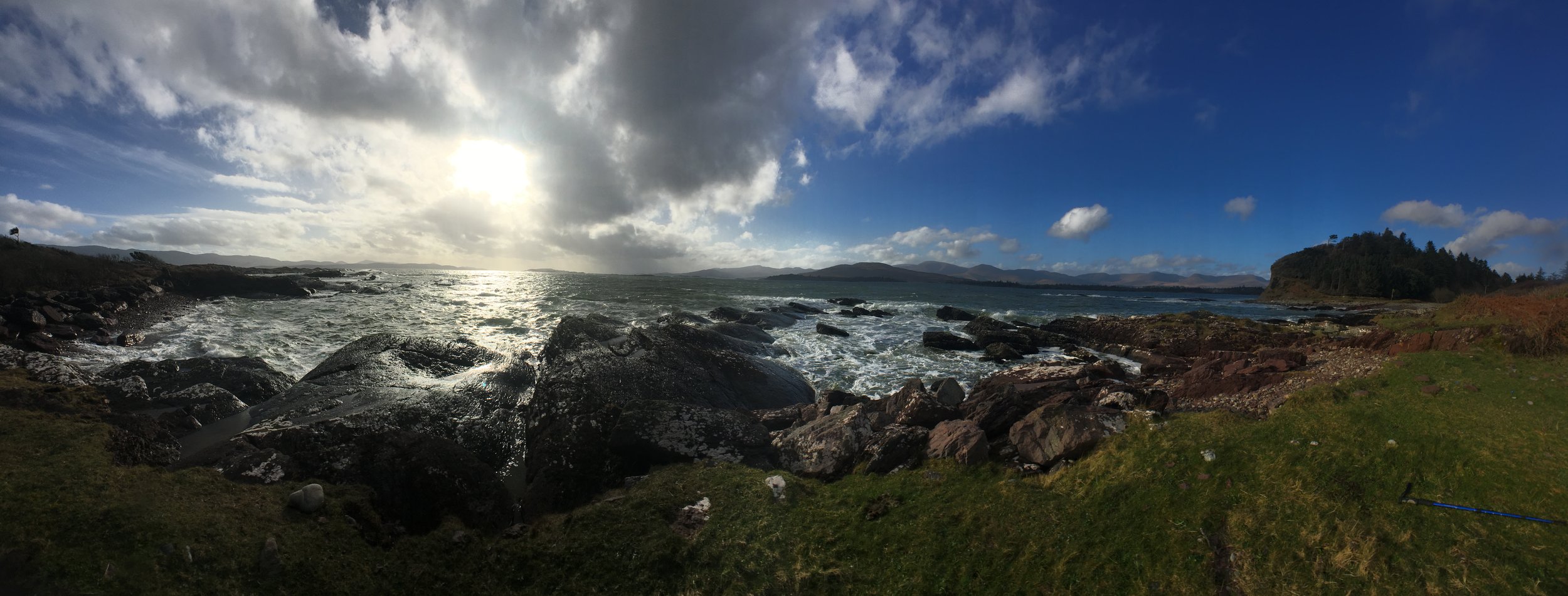
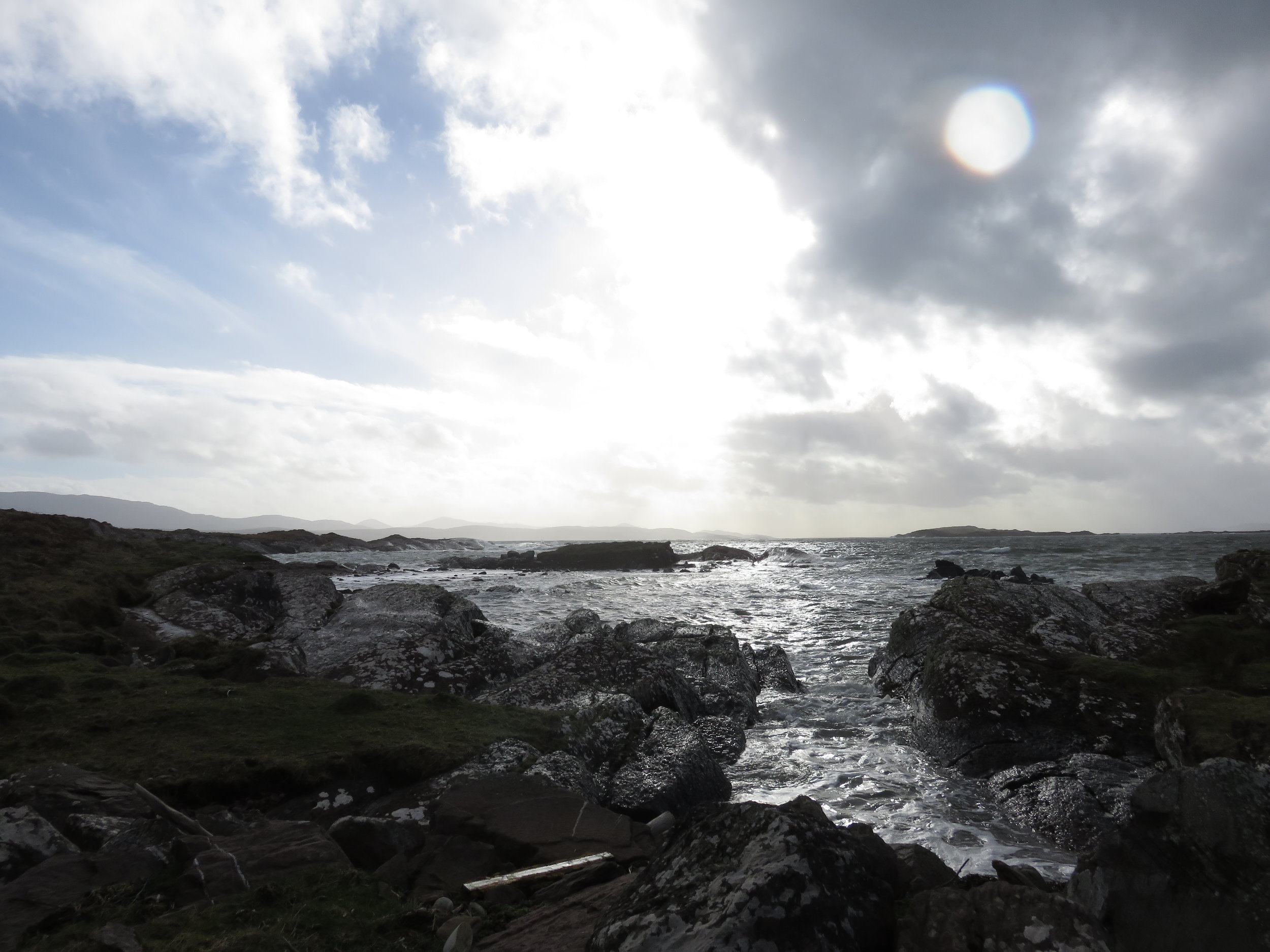
Day Ten:
“Of The Trail from Kenmare to Blackwater & The Road to Dingle”
We bade farewell to our cozy townhouse in Kenmare, then making our way toward Templenoe which is between Kenmare and Sneem. There we met up with Mike and Jill for our final hike.
The hike began along the road, but quickly we were lead down a small winding path in the forest. Parts of the forest were thick; birds chirped, but the quiet and calm was welcoming. Eventually, the trail opened up into areas of lumber operations, where whole swaths of the forest had been chopped down and the large trunks stacked and laid onto the side of the road. An interesting fact is that although Ireland does have a large lumber industry, they import the majority of their lumber.
We snaked our way around the forests and lumber operations, sometimes ducking into the cover of the canopy which would open up to a view of Kenmare Bay. At times the path was narrow, and uneven, muddy, and a lot of fun to maneuver. I used to think walking sticks were for older ones, but really, having a walking stick was invaluable.
At one point we crossed the path of a large castle; Mike informed us that this castle was once in ruins, until someone purchased it, rebuilt the entire thing, surrounded it by a high barbed wire fence, cameras, security dogs, and a tall hedge. Additionally, the large iron gate included spikes to the side to dissuade anyone who would try and jump the fence. What is sad about this story is that whoever purchased the property closed off a section of The Kerry Way behind it even though that section is considered public property. This section would swing out towards the coast and provided terrific vistas. The owner took that away from everyone and kept it for himself.
Eventually, we were lead to a large estate that had been abandoned. Mike pointed to the abandoned construction equipment laying around said that someone had purchased the abandoned mansion, but prematurely and abruptly ended the renovations - As if saying "Okay gents, see you on Monday!" And no one ever came back. Truth be told, the mansion; its architecture, its color, the signs of abandonment, the heavy equipment and mounds of gravel just laying there as if everyone just walked away, made the scene creepy.
From there we took a lengthy path that followed along the coast toward Blackwater Bridge. It was a beautiful hike, made better by having Mike and Jill with us. We couldn't have hoped for better guides - Wild Kerry Walking Guides.
After the hike, we had coffee with them at the Blackwater Tavern, a very rural, but very traditional Irish pub. We sadly said our farewells to our travel companions of the last few days.
This began our trek to Dingle, the road to Dingle took us through Molls Gap before reaching Killarney, and then into the Dingle peninsula. Molls Gap was beautiful, made even more so by the snow-capped mountains in the distance. Then as we went deeper into the Dingle peninsula, large pastures on hillsides marked off by hedge or stone walls filled our views. This then petered off into panoramic views of the North Atlantic Ocean between the Dingle Peninsula and Iveragh Peninsula where long rows of waves could be seen for hundreds of feet before hitting the rocks along the cliffside. Out in the distance storm clouds brewed.
We arrived in Dingle and met with our host, Rachel, who showed us our modern, sleek apartment right on Main Street, overlooking several pubs. It's not as cozy as our Kenmare lodging, but this place has all the amenities.
Tomorrow we hike Dunquin, a coastal hike at the edge of the peninsula.
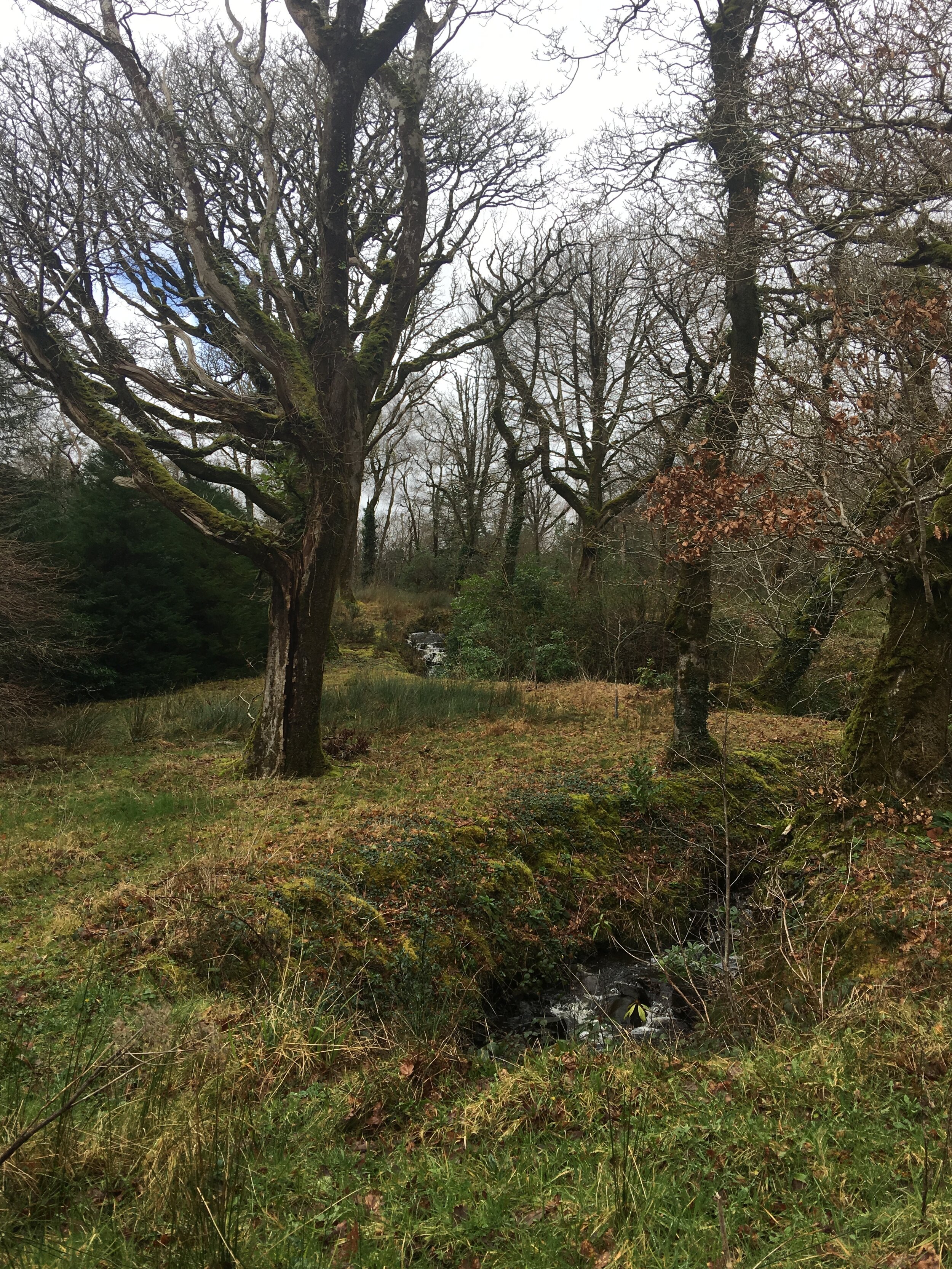

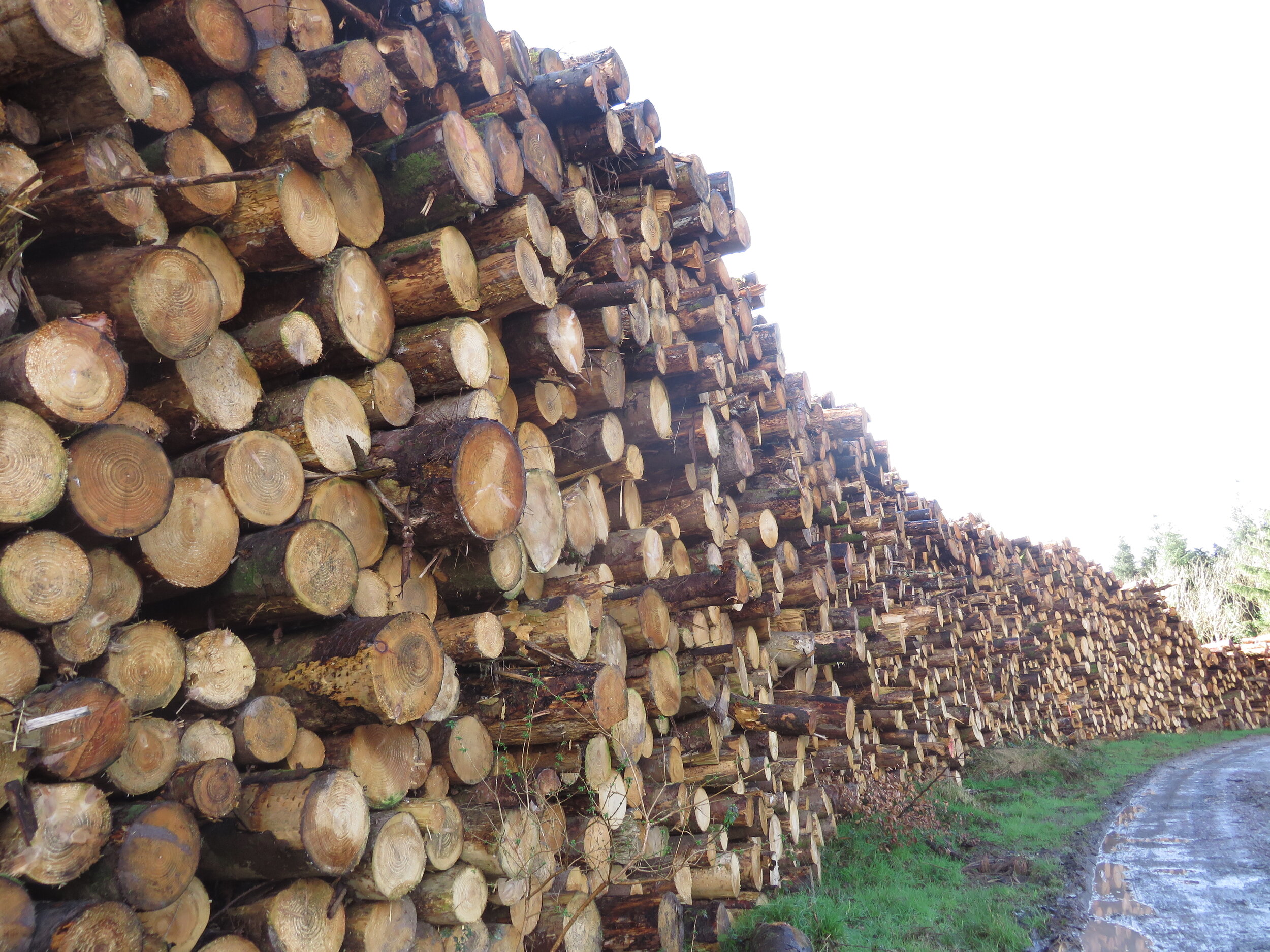

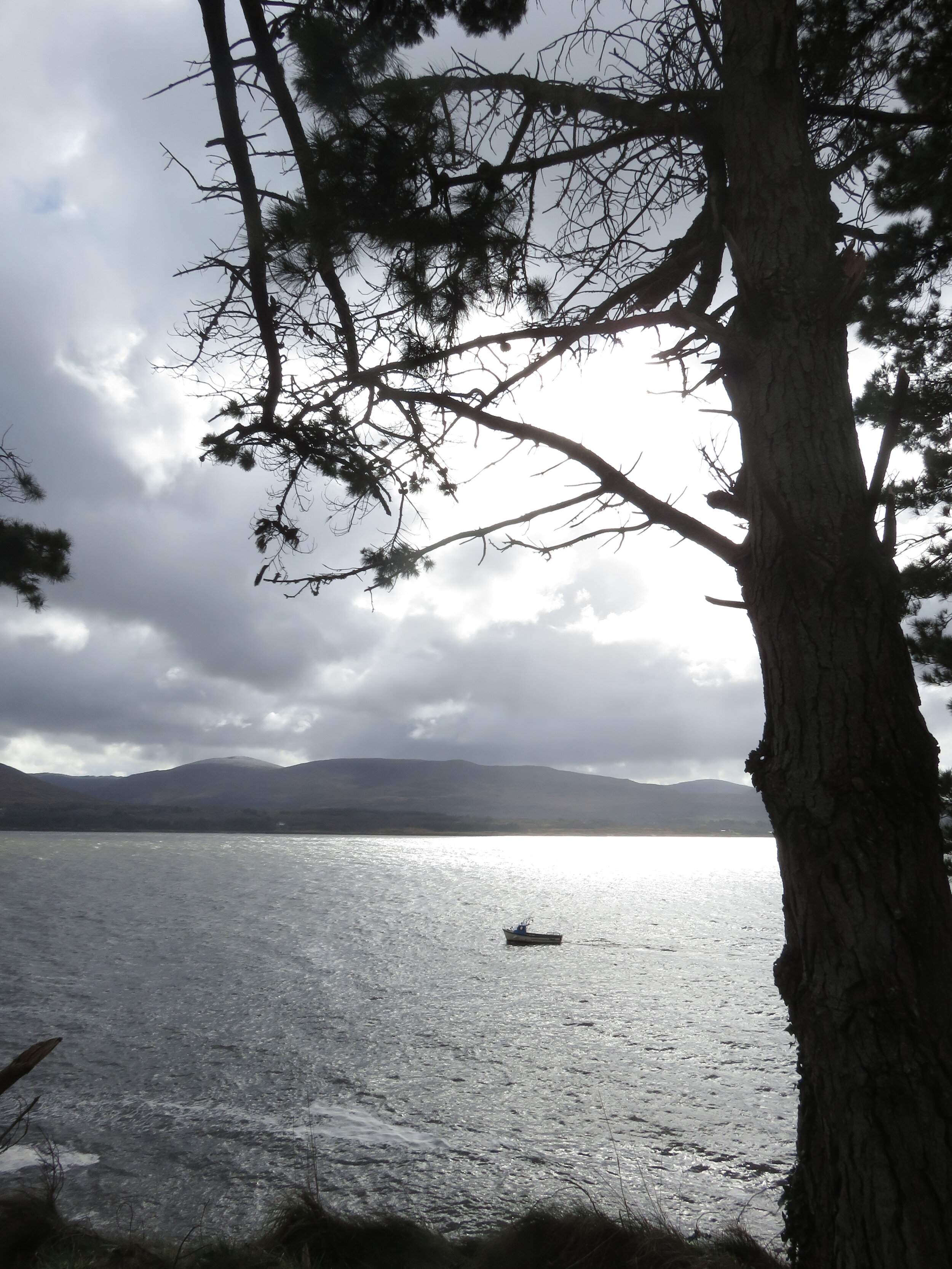
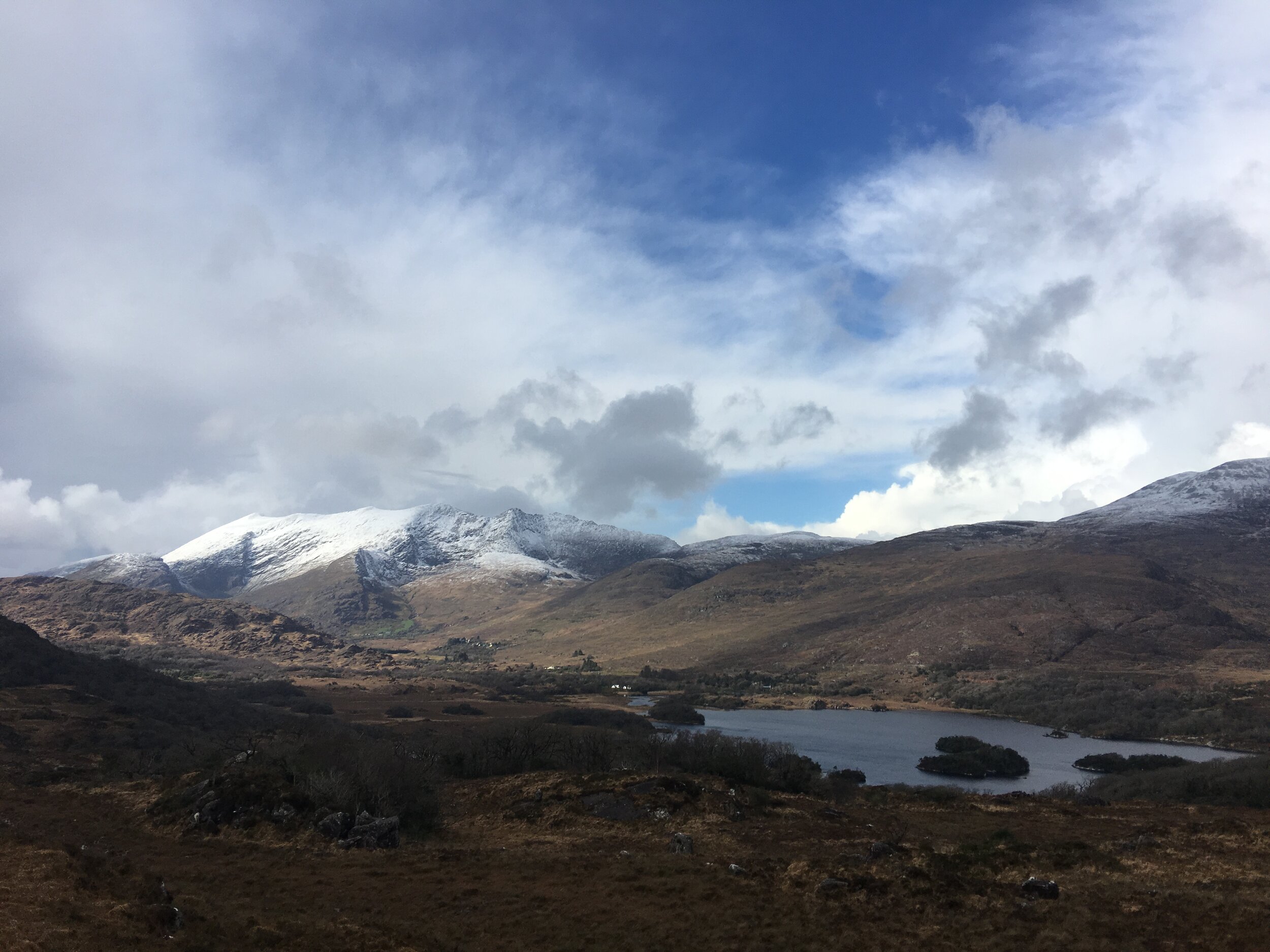

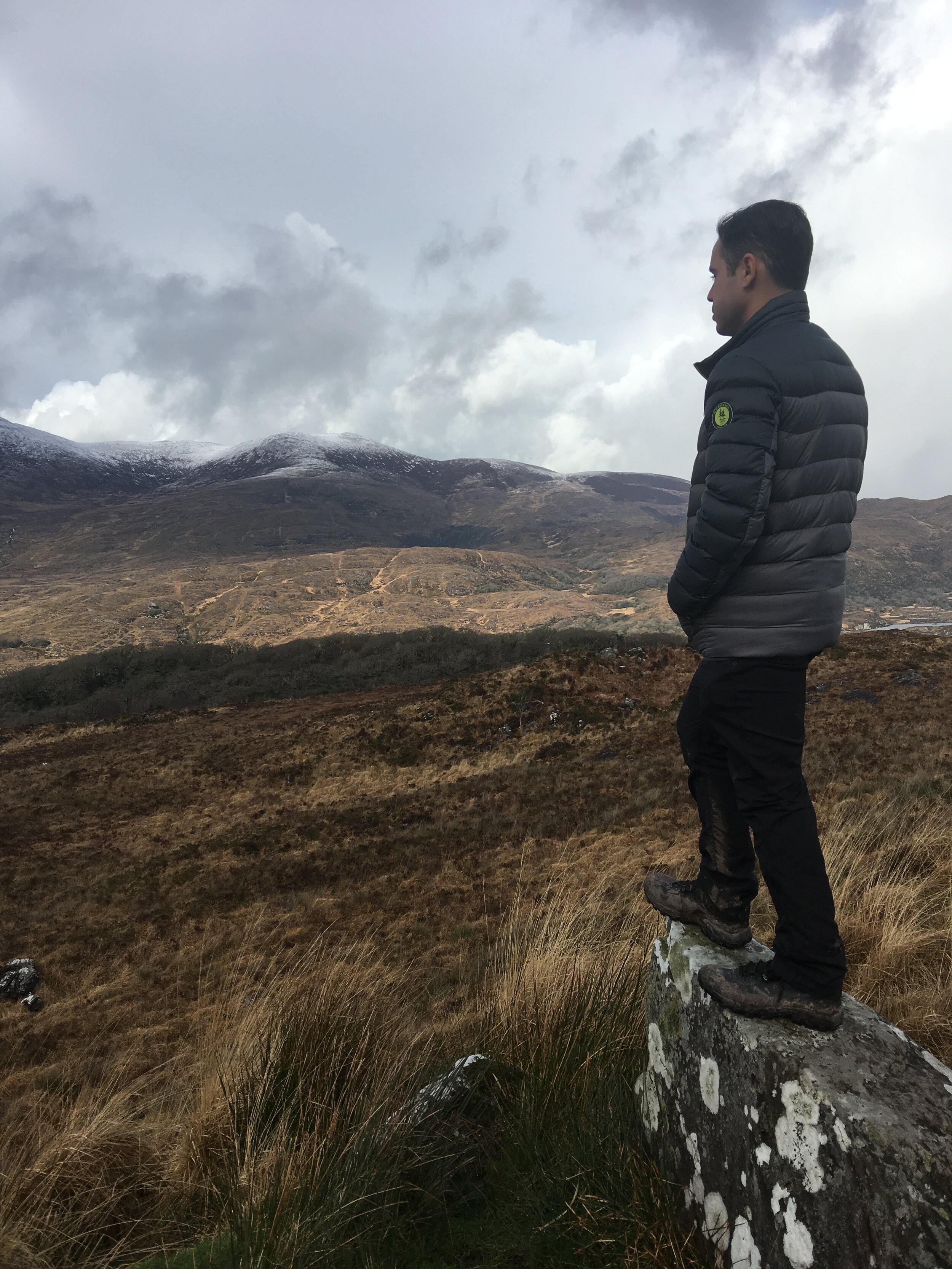
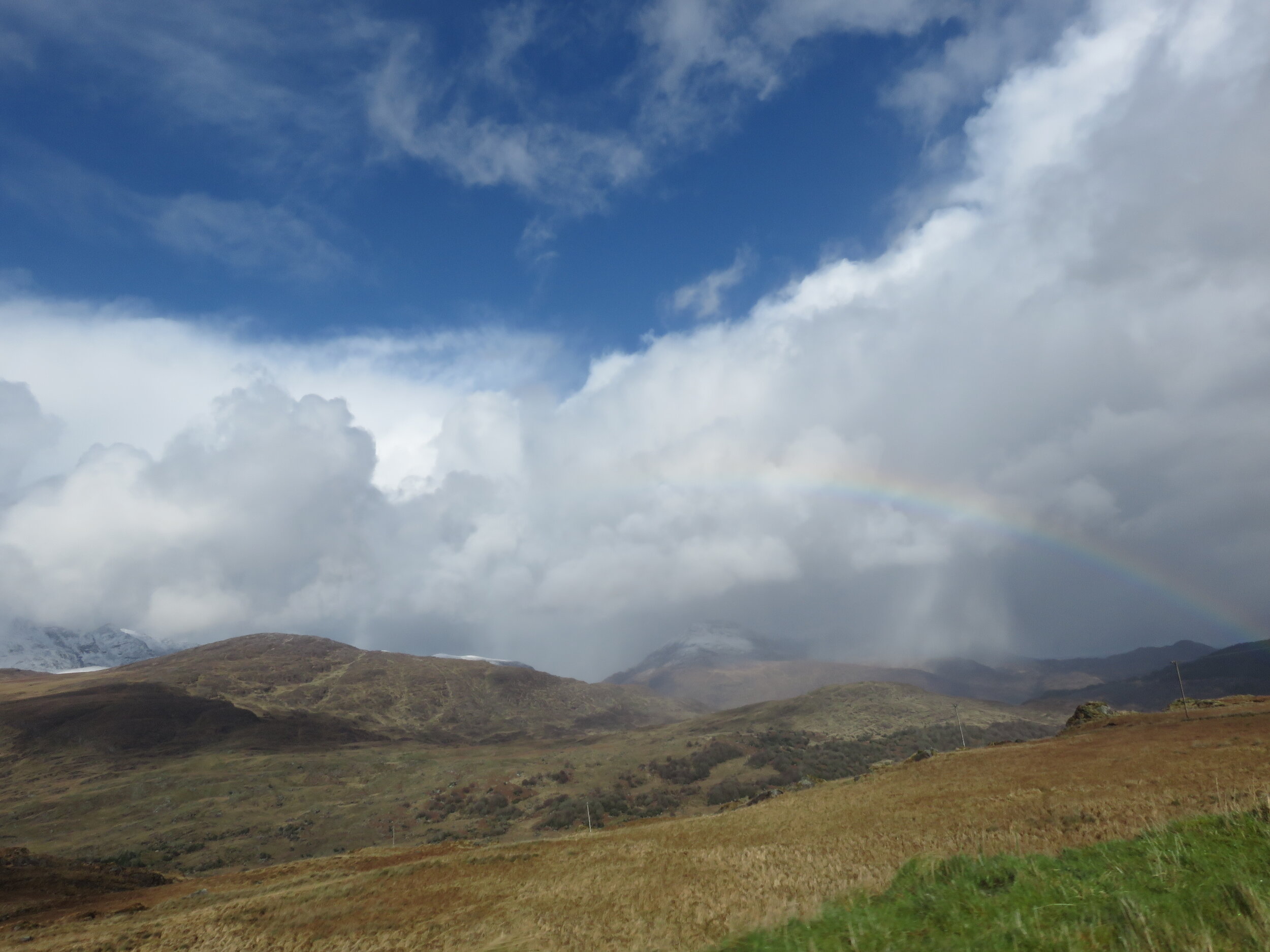
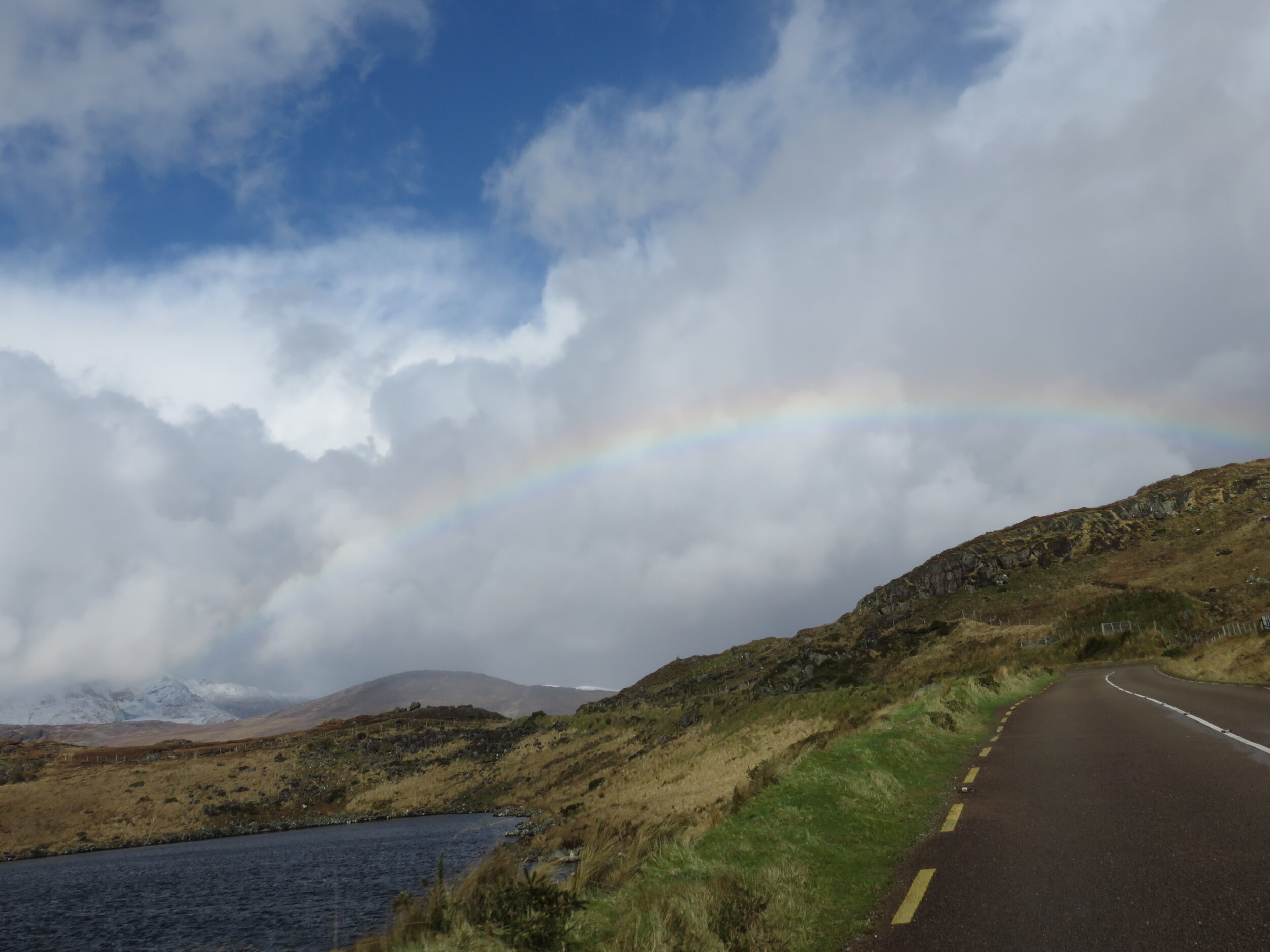
Day Eleven:
“Of Dunquin”
The day began with hail hitting the skylight above our bedroom. Nevertheless, we got ready and met Kevin O'Shea of Celtic Nature. He drove us about fifteen minutes west towards the area known as Dunquin. This walk would be a coastal walk.
Talking to Kevin immediately revealed him to be a bit of a scholar, researcher, and storyteller. He waxed poetic about the Irish language and how languages in general hold meaning behind them – he related how the Irish language is a language of storytelling, a language of poetry, a language of people closely attuned to the environment and to the people in their community. Where English is a language of business, conquest, counting, getting-things-done. Irish is about connection. It was a fascinating discussion on linguistics.
When we arrived, we jumped right into the scenery. There was really no path, we walked atop rocks, soft mossy ground, and clumped up foliage. This opened up to the sweeping panoramas of the North Atlantic relentlessly attacking the island. Giant waves crashed against the jagged and coarse coastline, leaving behind large gashes in the rock. Erosion is a big problem here.
Out in the distance were the Blasket Islands, inhabited for hundreds of years by an autonomous and self-sustaining people; but were permanently evacuated in the 1950s. Also near the Blasket Islands was Inistooskert, Inishnabro, and Inishvickillan.
We walked high along the ridge of the cliffs, looking down at the waves crash against the island. In the distance, we could see storms coming and going. Eventually, we reached large fields of grass as we marched along toward a large hill in the distance. It was this hill, with a rock formation at the top that we would need to climb.
The beginning ascent was not a problem, but halfway up, a storm had caught us with soft rain, but heavy wind. We minded our steps and took firm hold of the rocks as we made our climb to the top. From there, we were greeted by a dynamic 360-degree view of the Dunquin area as well as the small peninsula we were exploring. What also greeted us was no protection from the wind strong enough to push us. Not liking that situation, we quickly turned a corner and found shelter where we sat and had a meal.
In all this time Kevin would stop and talk to us about the history of the area, of Ireland, of the islands before us. Not only the recent history, but the not-so-recent history, the pre-history, and the legends and myth passed down through the generations.
It is within these stories, and in the stories told to us by Deklan, our kayak guide, and Mike, our walking guide, that a definite connection exists between Ireland and Spain. The Irish and Spanish had had strong ties for thousands of years, even before Spain was Spain, those people and those from what is now Ireland, had relationships. In a historical context, Ireland and Spain would often trade. And in more historical context during the time of the Penal Laws, many Irish went to Spain.
Our hike continued around the coast, then back into the mainland where we made our way back to the car and Kevin attempted to teach us part of an Irish poem, but we were both awful at remembering it.
Kevin drove us back to our apartment, where we walked around town a little, sampling a delicious Ice Cream from a local shop called Murphy's (Author’s Note August 2019 – this is still the best ice cream I’ve ever had). It was amazing! We both had Sea Salt Ice Cream and Caramelized Brown Bread Ice Cream. We are going back tomorrow! Later on, I made a home-cooked Irish dinner or pork chops with potatoes and onion.
Tomorrow we are not sure where Kevin is taking us, we may hike Macha Na Bo, meaning The Path of the Cow, a hilly walk in the interior of the peninsula. Or depending on weather, we may try hiking Mount Brandon.

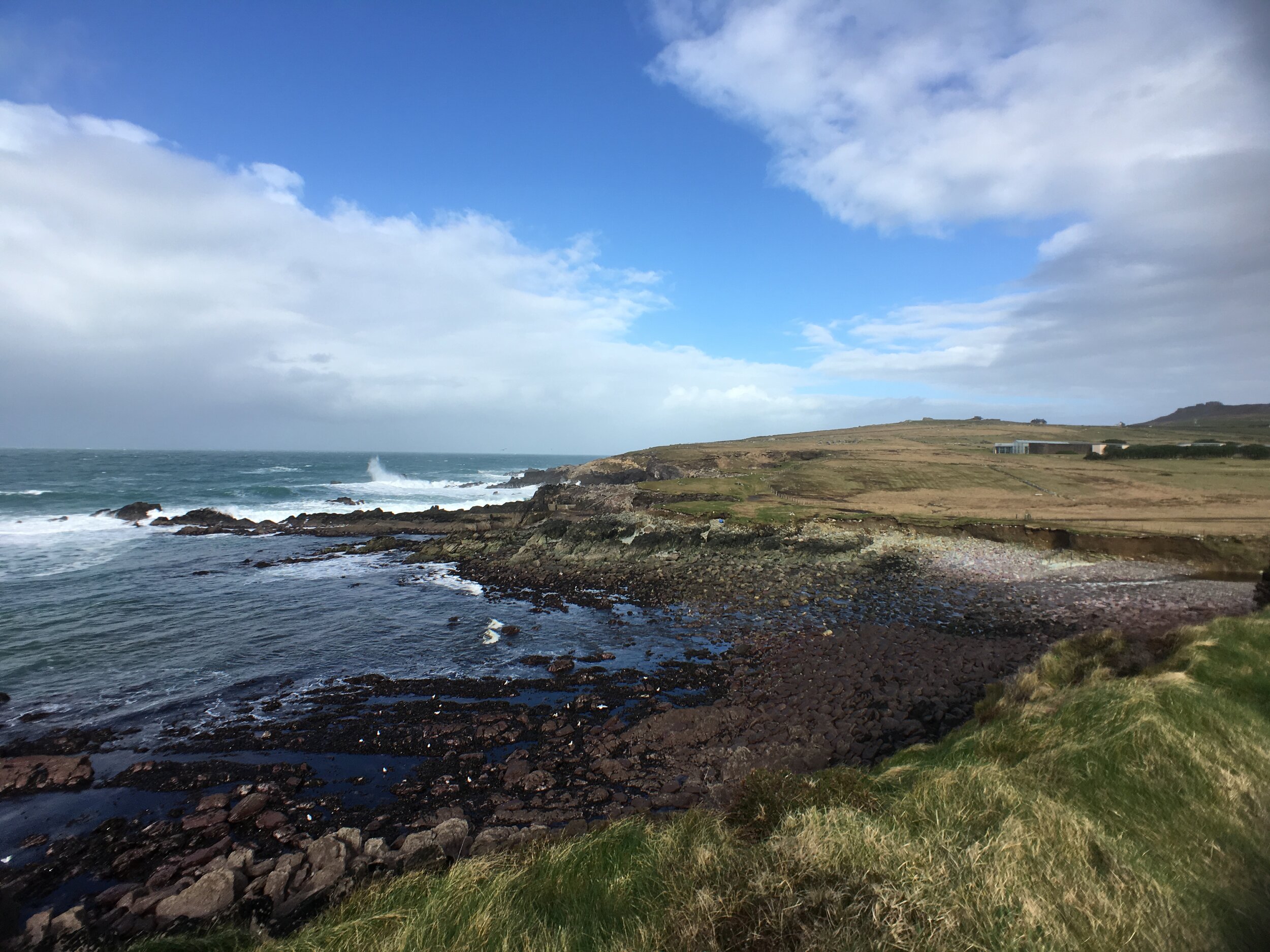

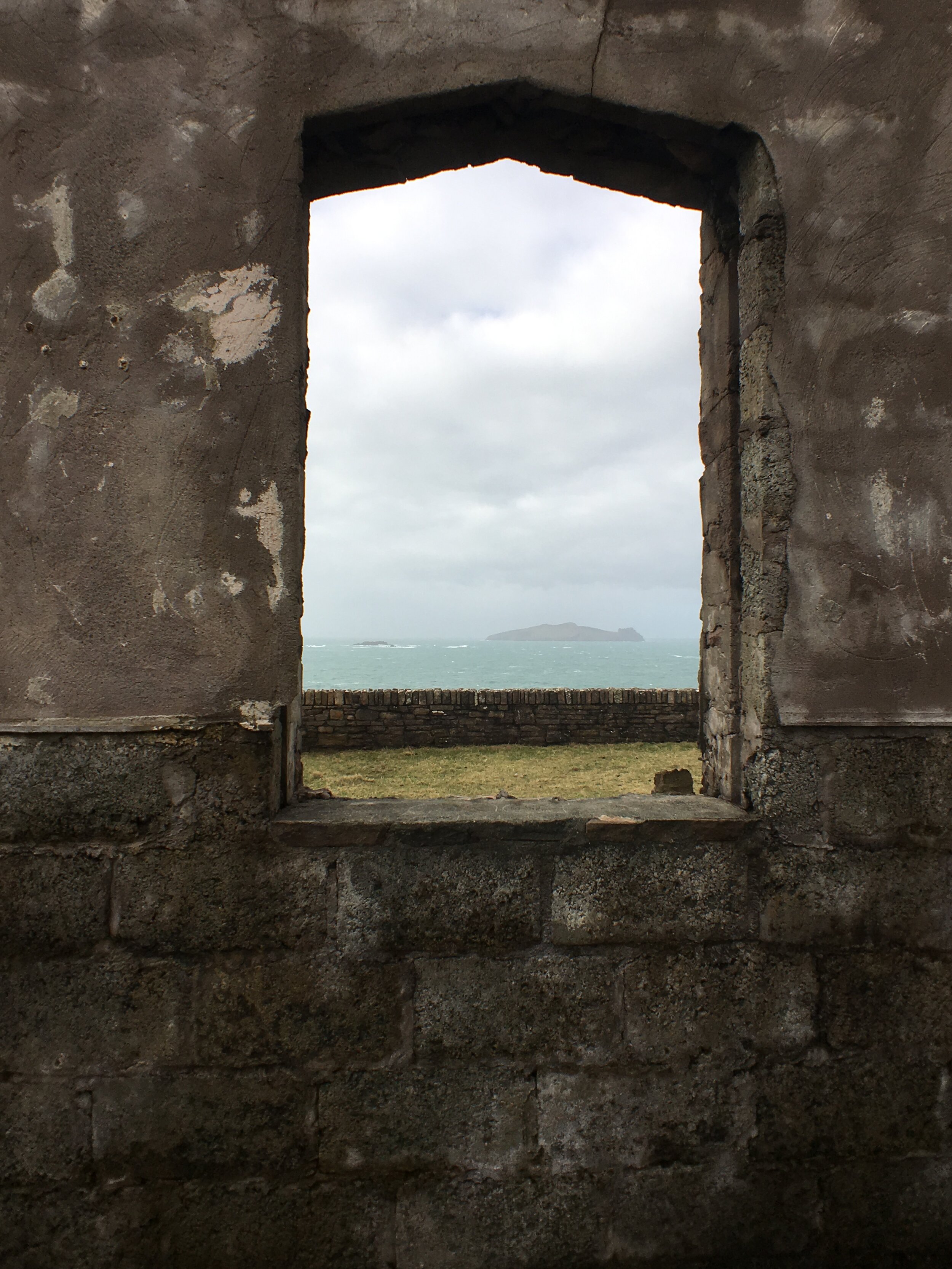
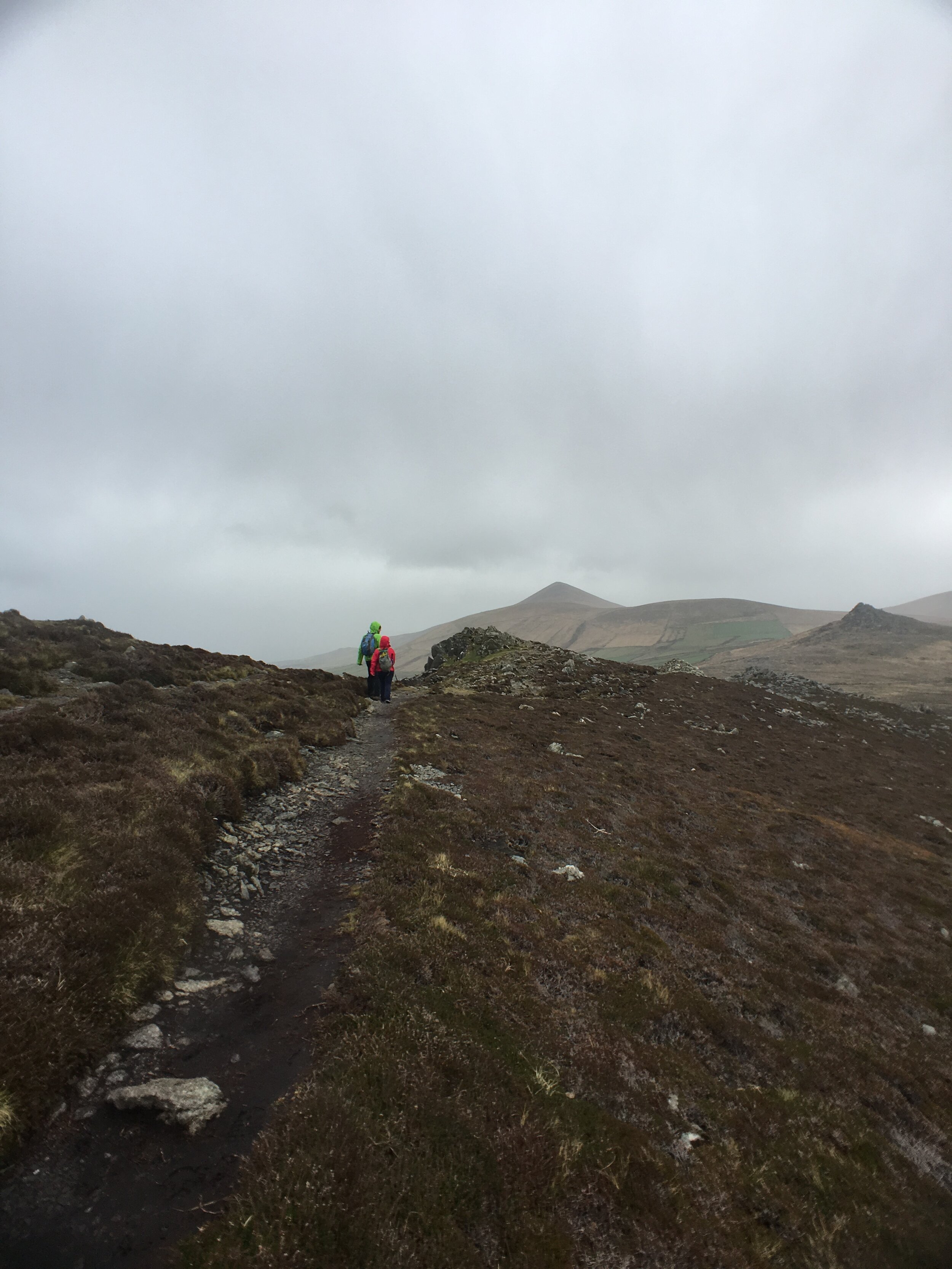
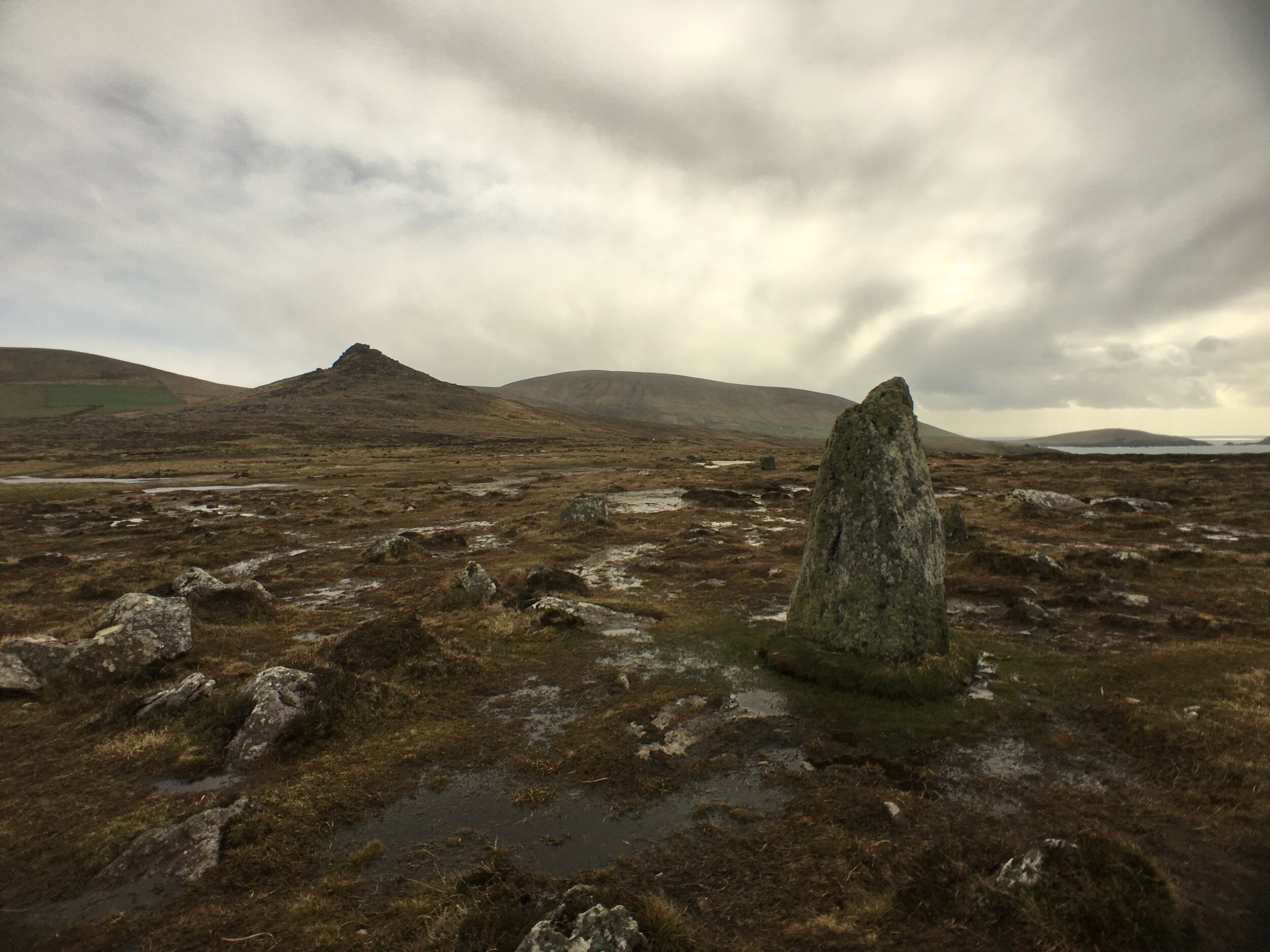
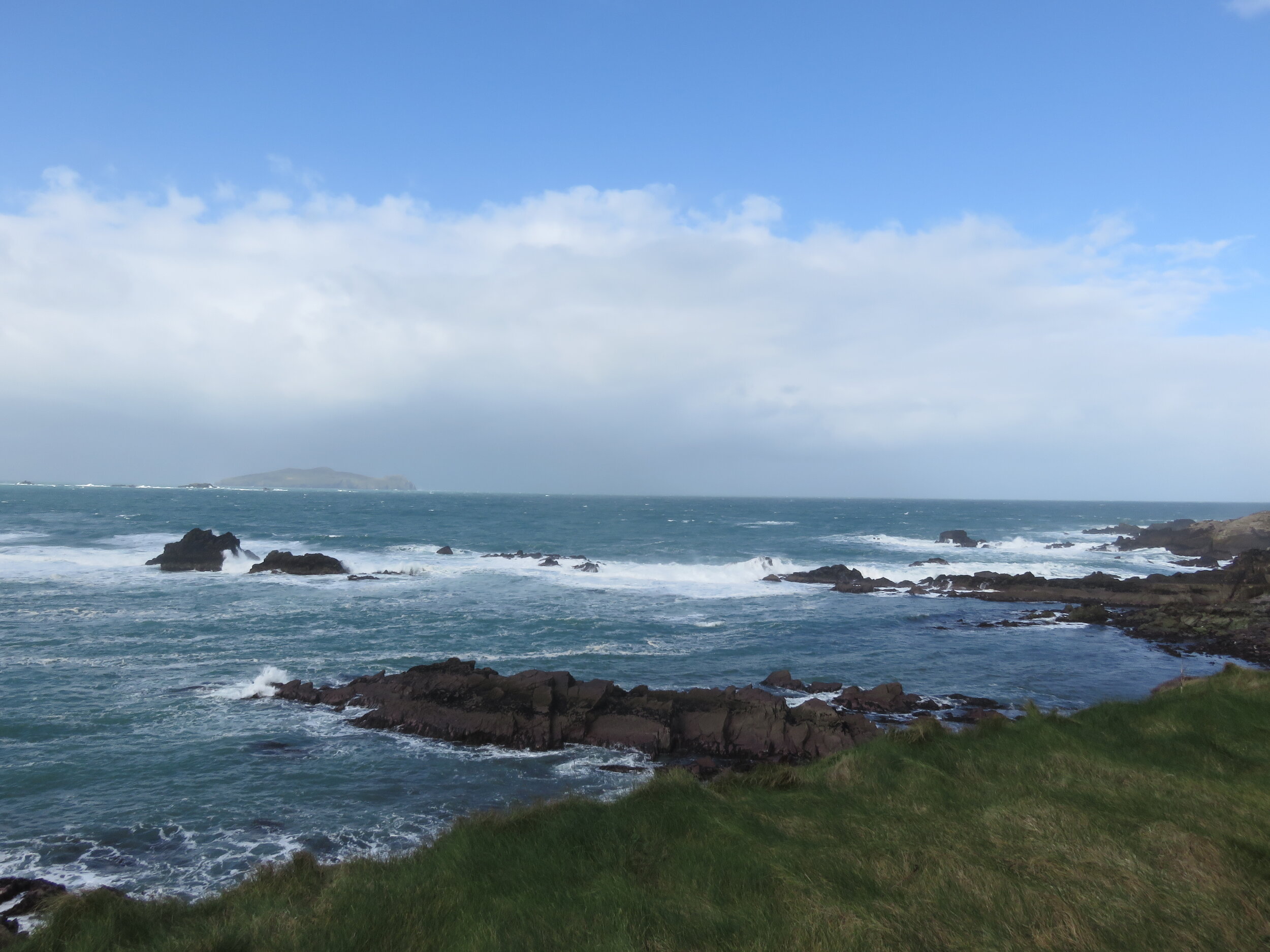
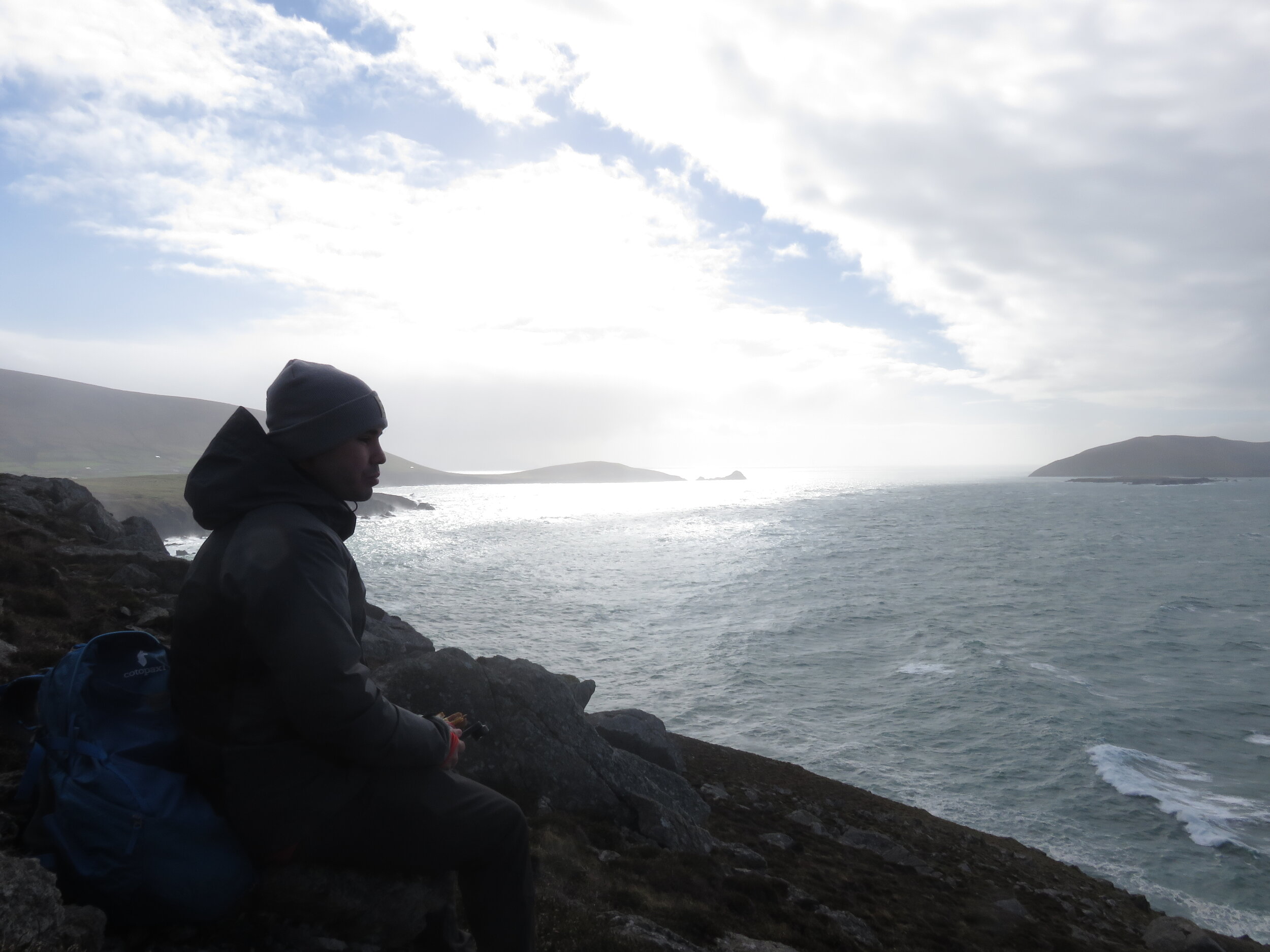
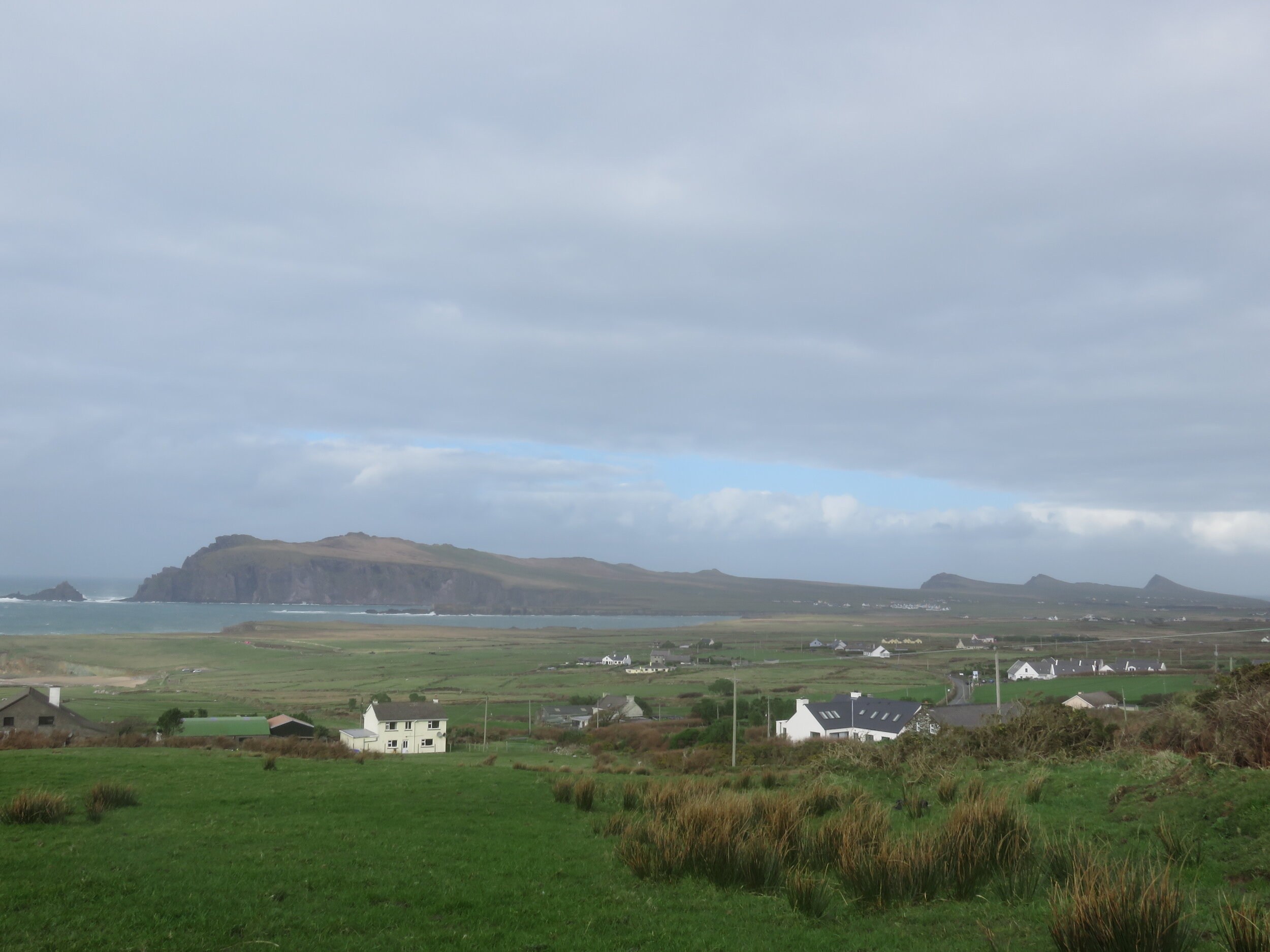
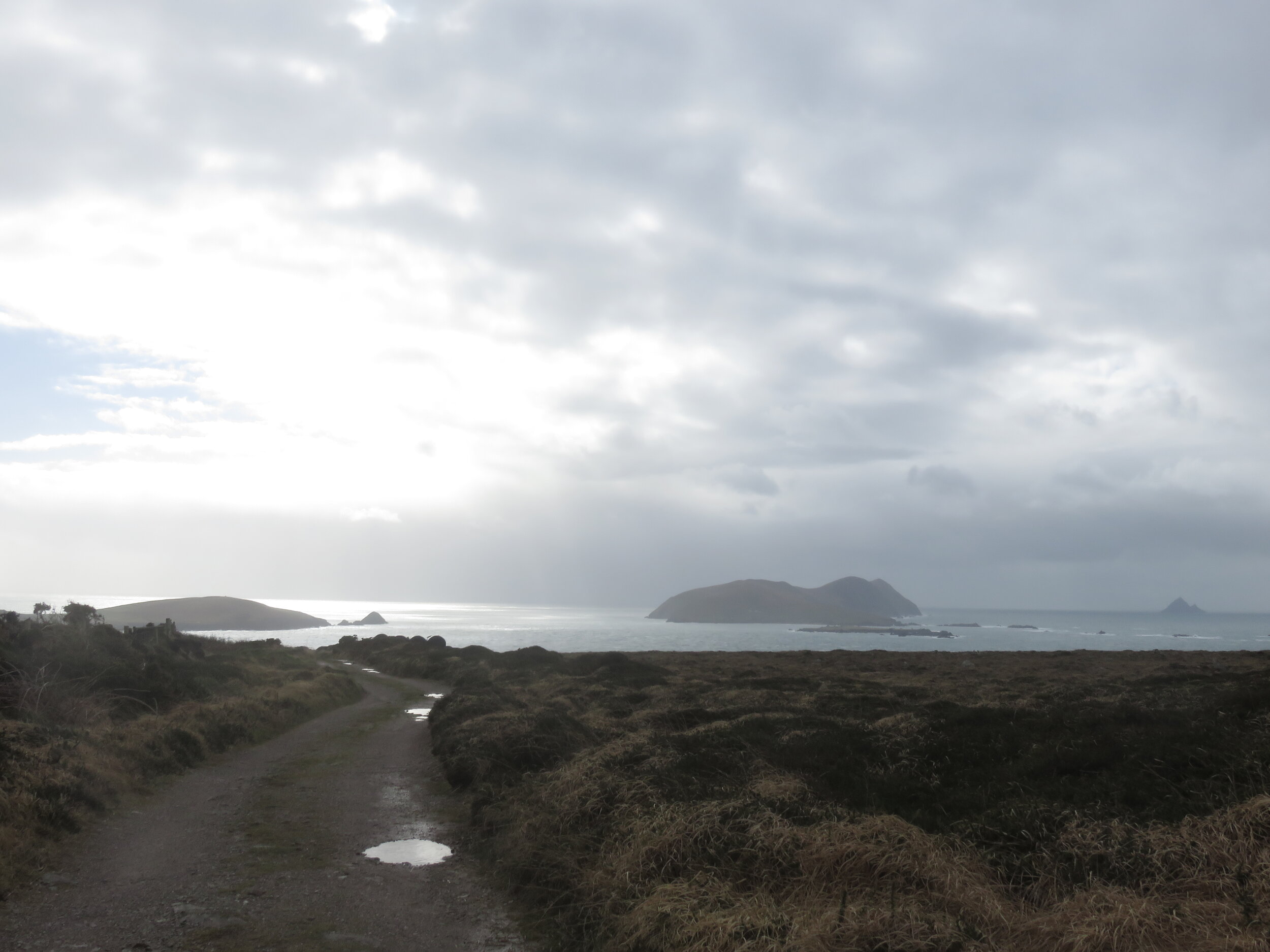
Day Twelve:
“Of Macha Na Bo”
After a discussion regarding the possible weather we would face today, Kevin decided to take us to where we had initially planned to go when we booked his services: Macha Na Bo, meaning Path of the Cow. This would be a vastly different hike from yesterday's as it would be within a valley on the northern side of the Brandon chain of mountains in the middle of the peninsula.
Macha Na Bo is beautifully fertile, lush, and green. As we began our hike in the valley, it was made clear that this area is used for horse, sheep, and cow grazing. At one point, we looked up toward the steeper parts of the mountain to our left, and there was a sheep farmer with four dogs rounding up his sheep into groups. We were both fascinated by what was going on, while Kevin, a man who had been raised in this area, was not impressed. On the other hand, he did say that lemon trees fascinate him, so we didn't feel so bad.
The weather in the valley shifted several times, going from sunny, to dark, to rainy, to extremely windy, to hail, then back to sunny. The hail was small and stinging. Unlike our hike yesterday where we had cover, we were in the wide-open spaces and had to confront the weather. This meant being rained on, a lot.
Nevertheless, it was beautiful to see the two waterfalls coming from the mountains, intertwining into one river. Eventually, we scaled the hillside and found ourselves in a beautiful spot where we had lunch by one of the streams that fed one of the waterfalls. Thankfully during this time, the weather subsided.
On our way back it was nice and sunny, allowing us to climb down to the floor of the valley to visit the ruined house of Mary Mach Na Bo. Not a lot of history there, but that was her house. I commented on how beautiful the area was and how the house was ideally situated with land and flowing natural water. Kevin responded by saying that although Mary is the only known inhabitant of this plot, it's not hard to imagine groups of people living in this exact spot hundreds, if not thousands of years ago.
On the way back, it rained hard and hailed on us for a good portion of the time. We eventually made it back to the car and attempted to do another small hike, but the weather only intensified, so we called it a day at 3:30PM.
We bid Kevin, our guide, farewell. Thankful for his expertise, craic, and guidance in these hikes.
Soon after that we stopped for more Murphy's Ice Cream (amazing!) and sat down for a pub dinner. Upon returning to the apartment, we took a brief nap and readied ourselves to see some trad music being played by an accordionist and guitarist at a great little traditional pub called An Droichead Beag, meaning The Small Bridge. Droichead means bridge, Beag means small.
Tomorrow we make the longest drive of the trip, halfway up the country to Galway!
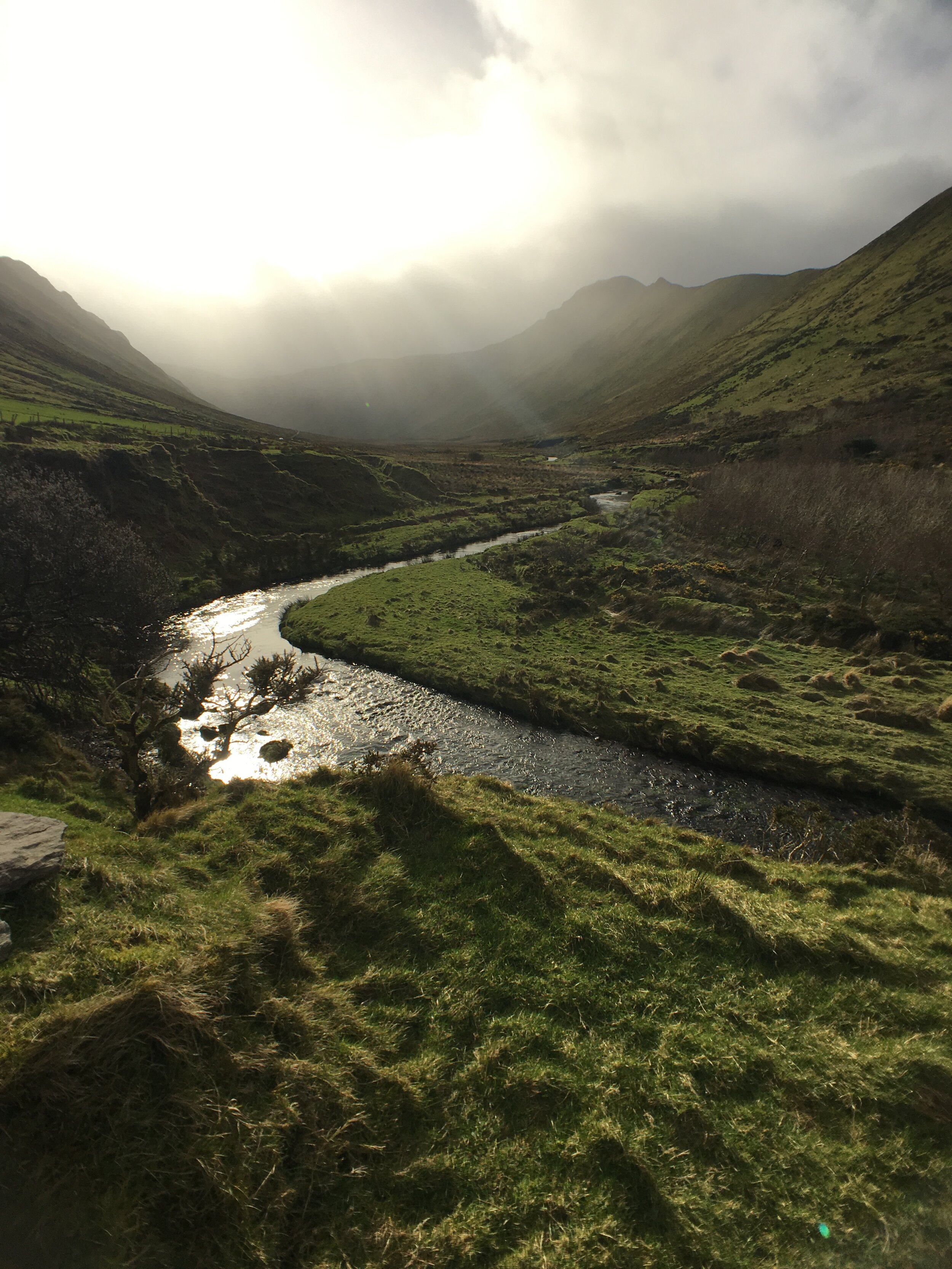
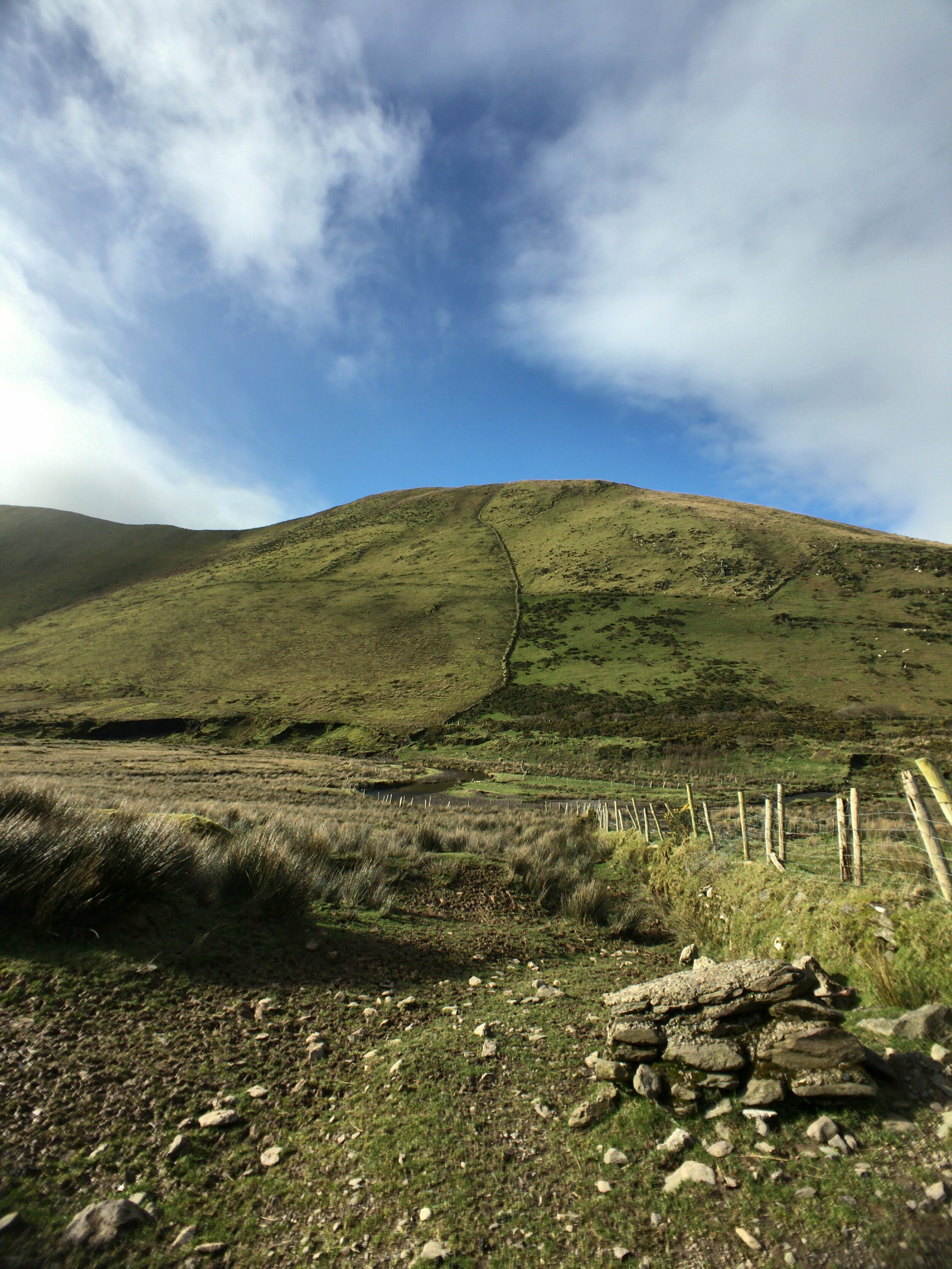
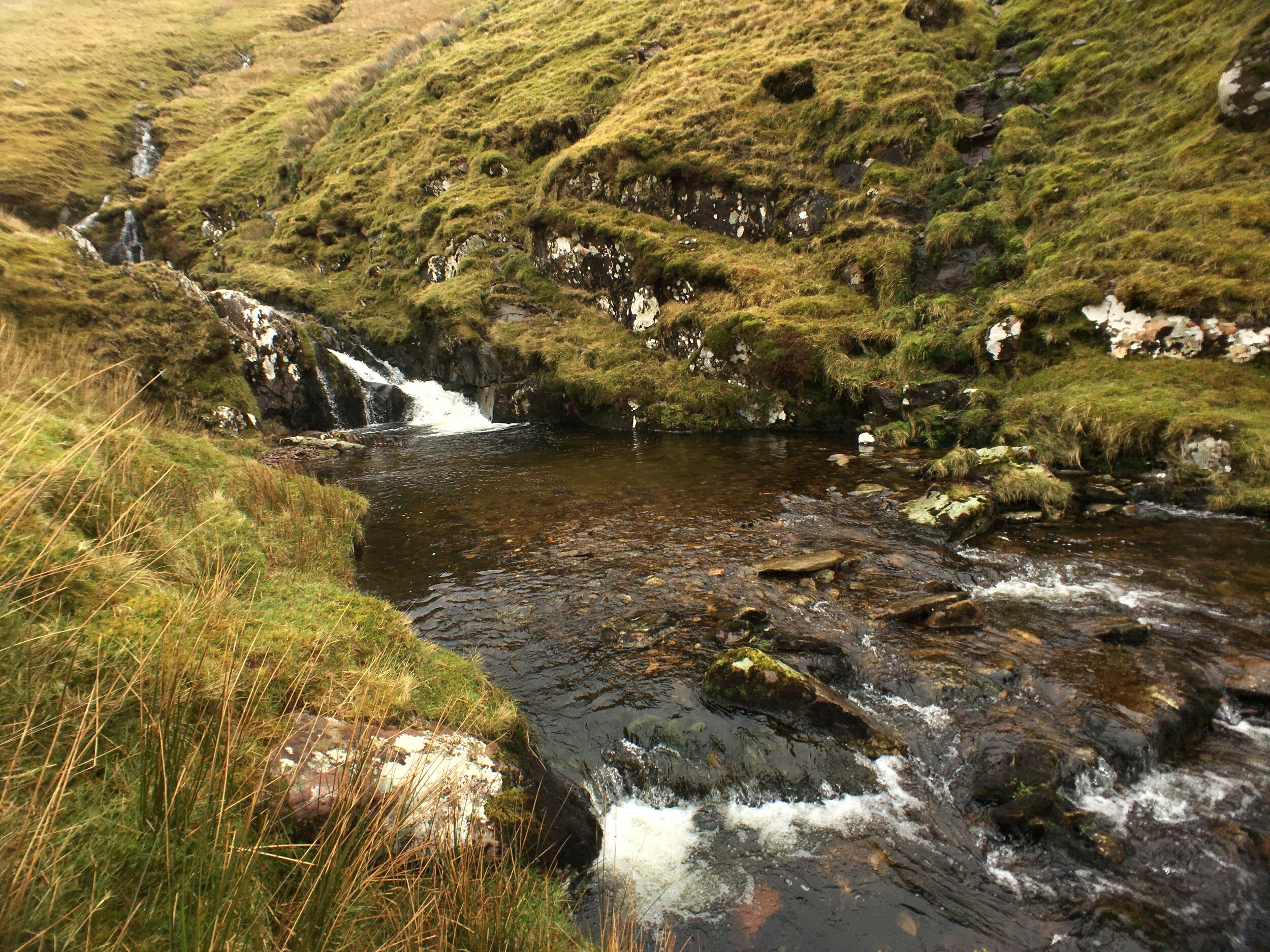
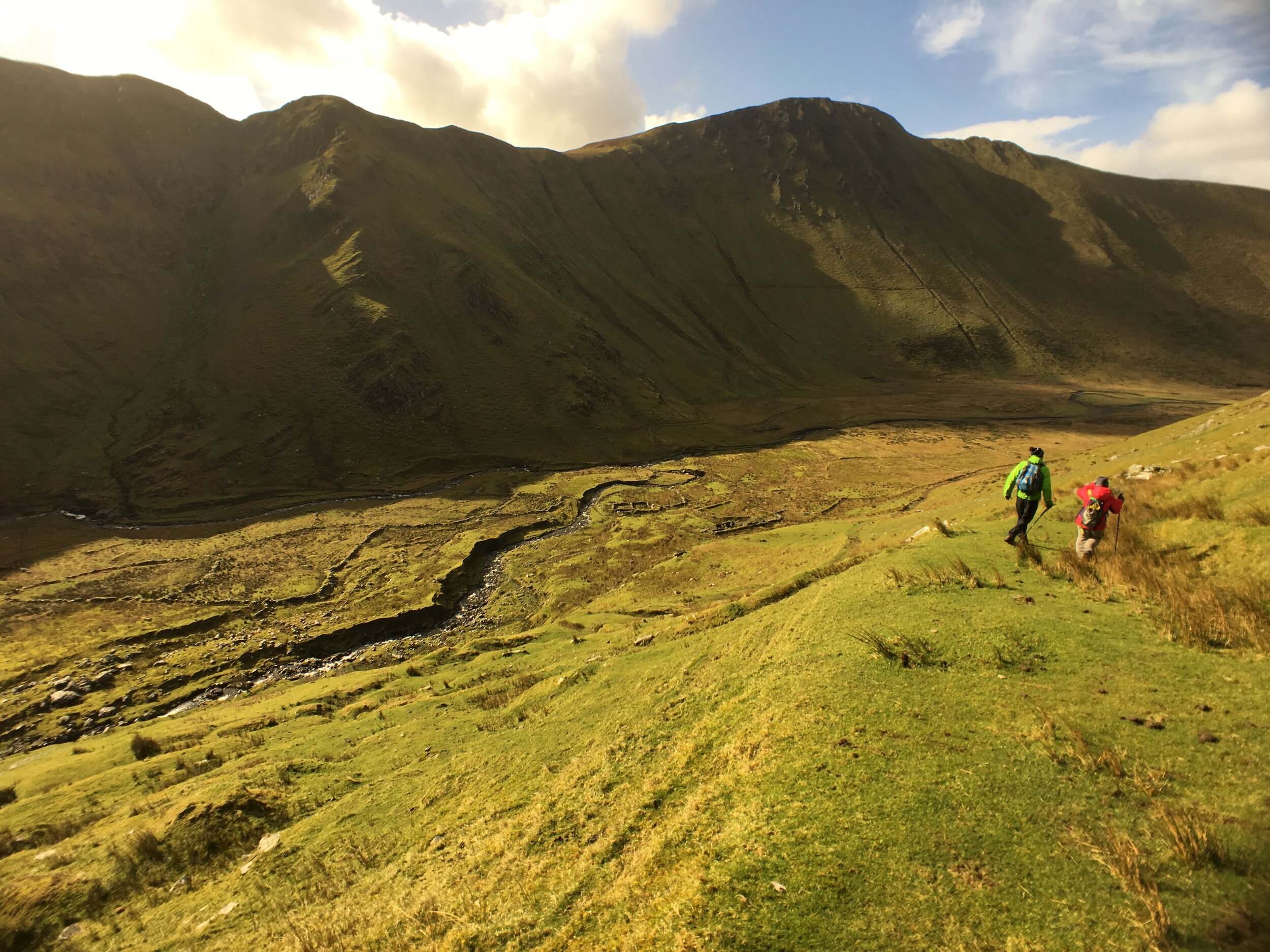

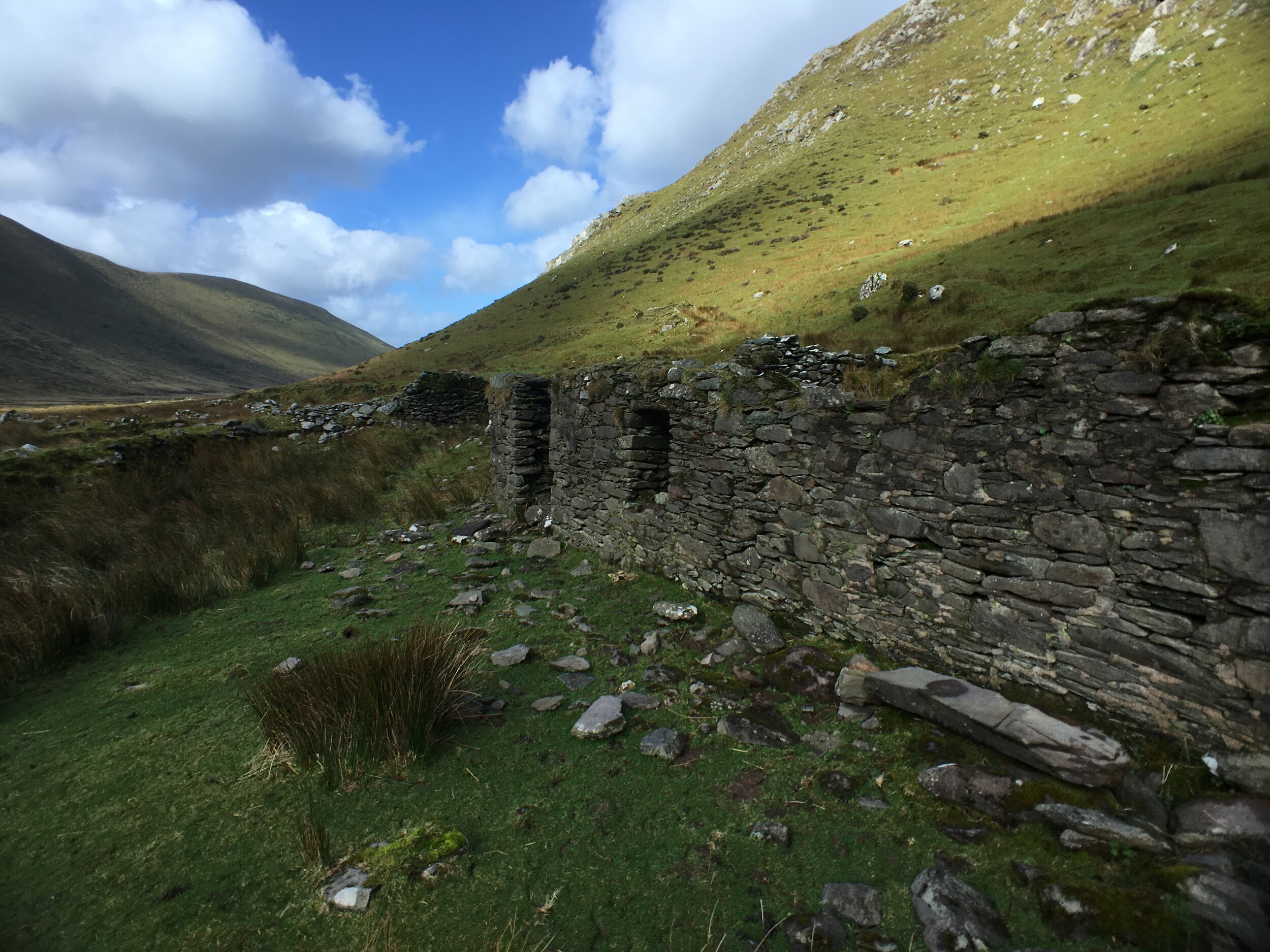
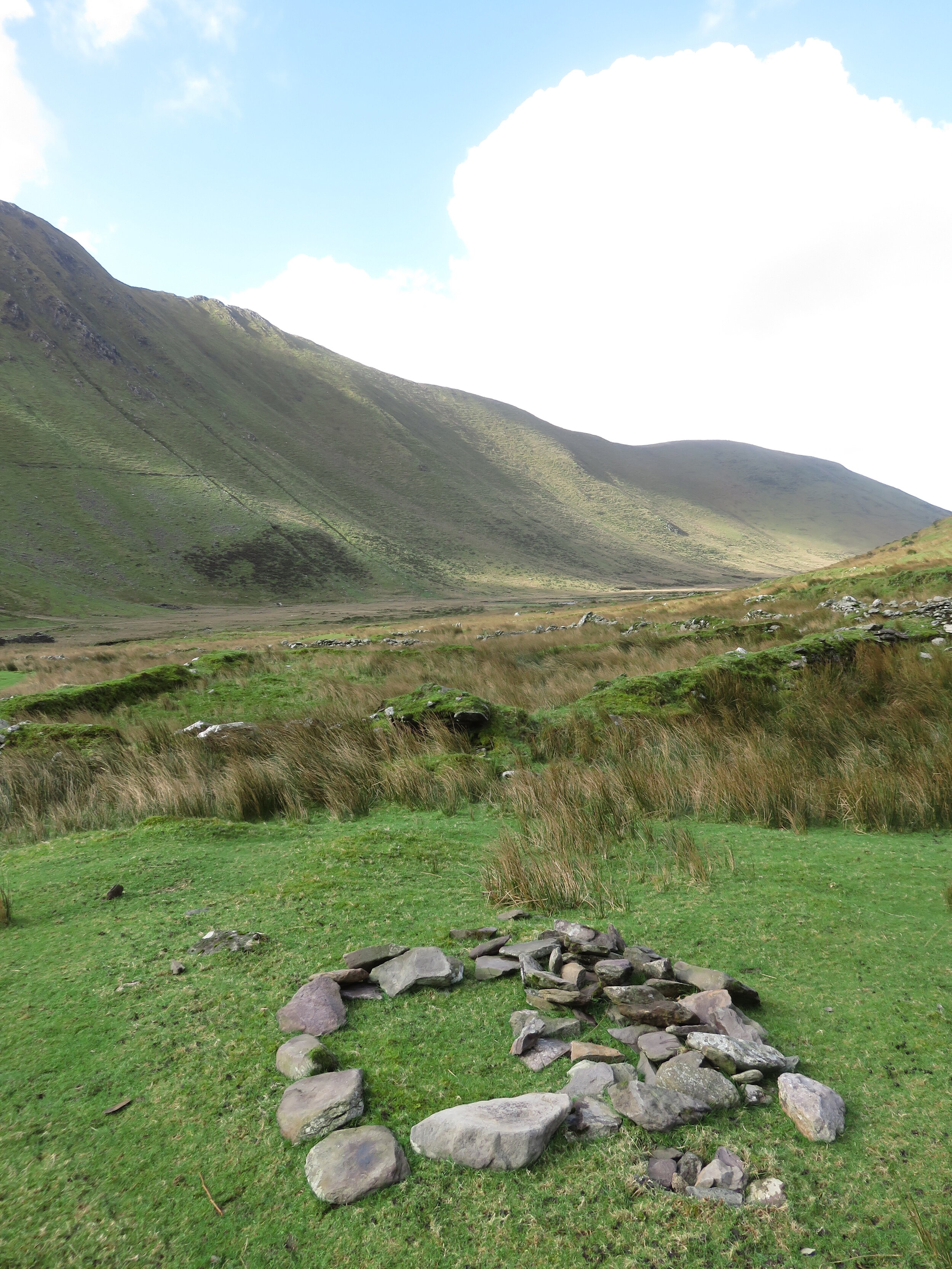
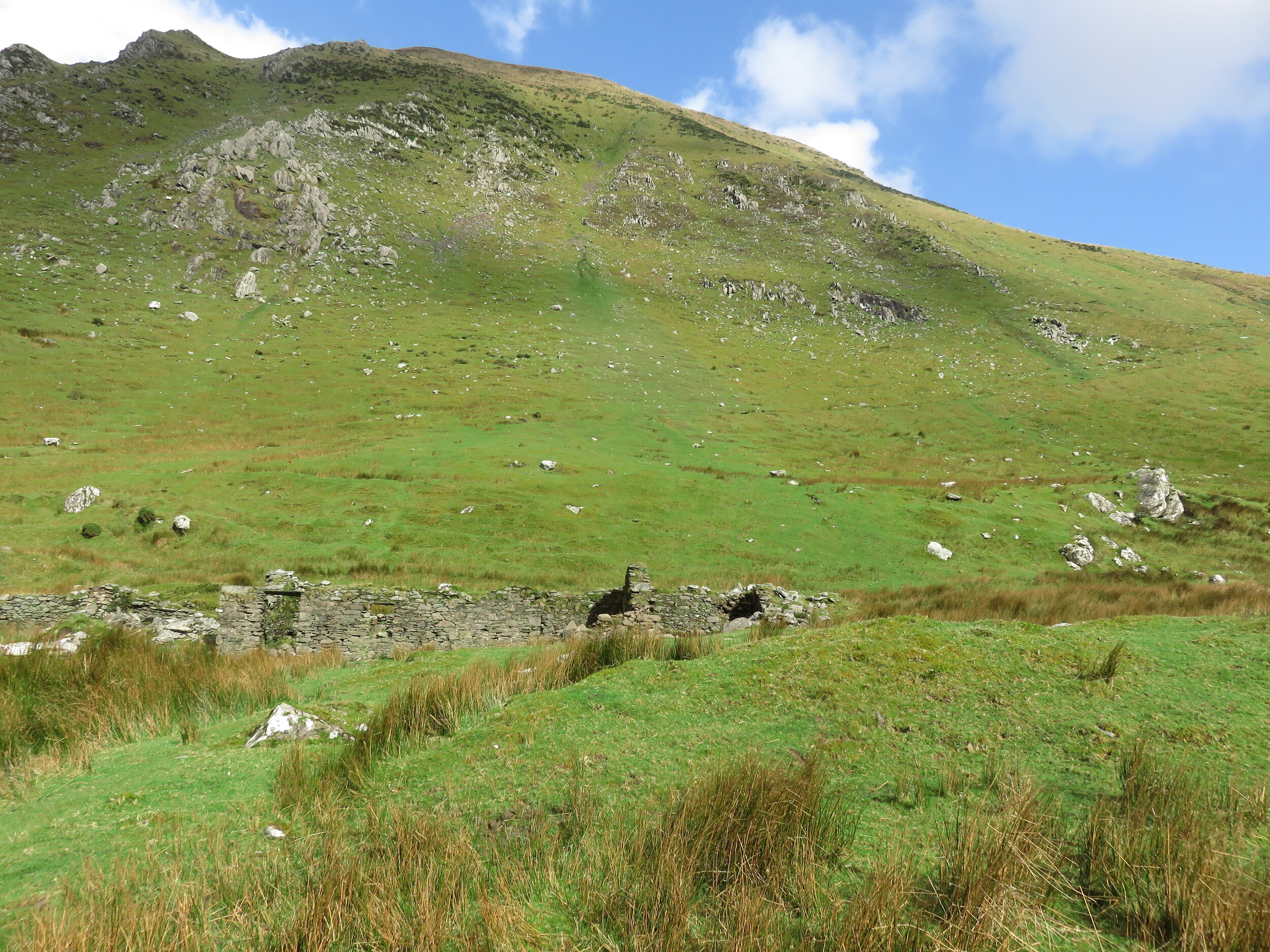
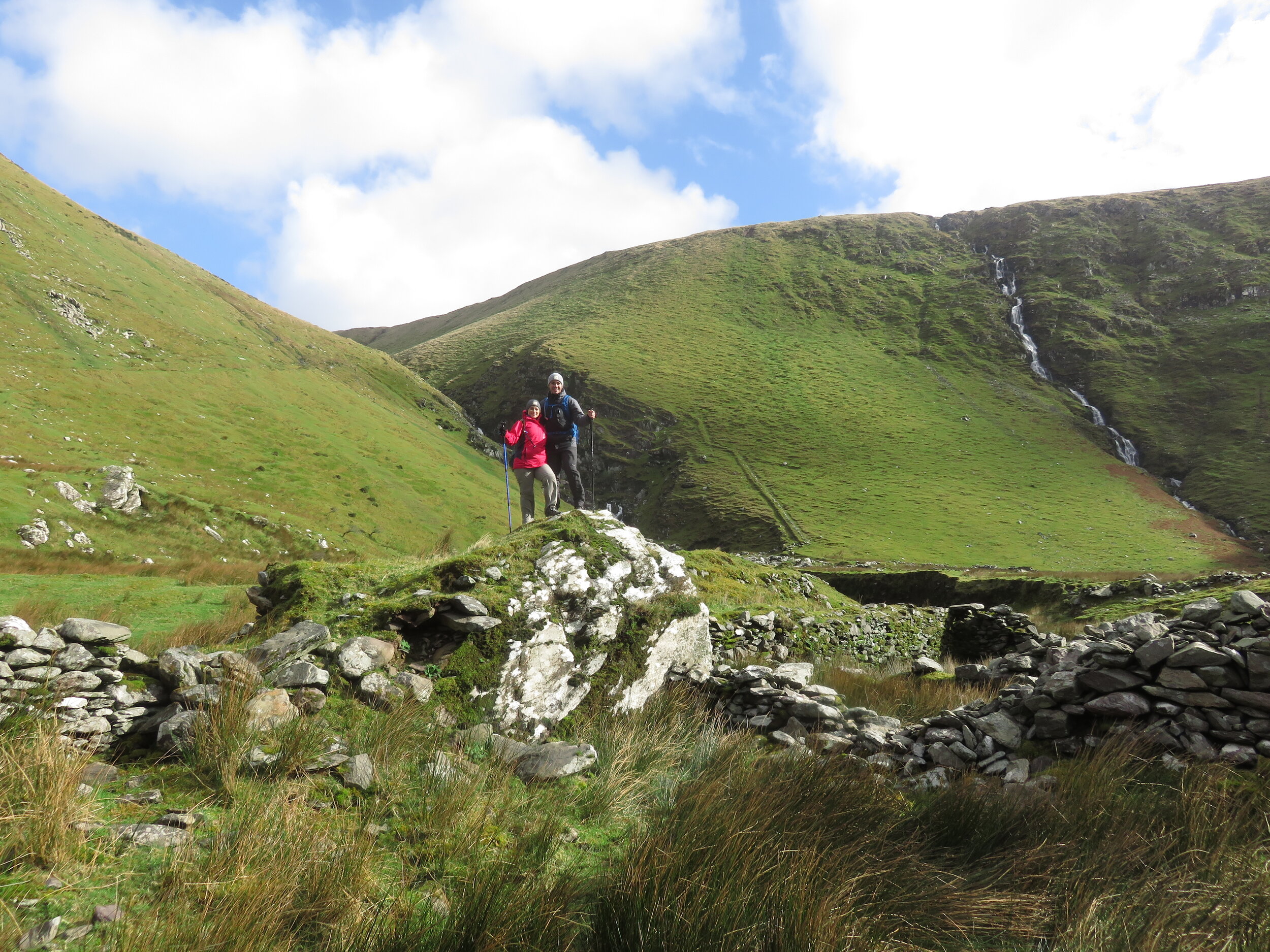
Day Thirteen:
“Of Galway and Musical Bamboozlement”
We said goodbye to Dingle; our windy, rainy, sunny, beautiful home of a few days, and headed north and slightly east to Galway. This city is the melting pot of Ireland, it is the Miami of Ireland. 85% of all the inhabitants of Galway were not born in Ireland, it's also prominently a college town. The city has an exciting buzz to it, there are people all over the place of various nationalities and races, the restaurants are different genres, the pubs and clubs are open way passed 2:00am. Single musicians playing their instrument of choice are seen on every other street or corner, even an eight-piece band set up shop on the main thoroughfare to entertain residents.
Before leaving Dingle, we had excellent and delicious coffee from a small coffee shop called Bean in Dingle. It's run by two young entrepreneurs. It was awesome. That's one of the great things about there not being a Starbucks all over the place, it allows smaller coffee shops to open up and thrive.
Our drive to Galway took us nearly four hours, and forty-five minutes of that time was getting from the city outskirts into the city center. This place is congested, and it made us long once again for the quiter and less packed Kenmare, or Dingle.
We booked a small boutique hotel through AirBnB. Our room, although hip and trendy, was the size of a shoebox. That's okay, we were only there to catch some sights and music, then go to sleep. After checking in, we took to the streets, first grabbing a quick lunch at Busker Browne's. From there, we walked around and enjoyed Galway, taking our time to look at the restaurants and shops. At one point we saw a band playing outstanding music. It looked like the Irish version of Arcade Fire.
We saw one pub called Tig Coili, that was highly rated on TripAdvisor and Rick Steves. They had a sign saying, "Traditional Music Live at 6!" Ducking into the pub, we found a great location near the bar and ordered drinks, waiting for the music to start, we waited fifty minutes until it was 6:35PM and it seemed we had been bamboozled. Others in the pub also looked like they were waiting for music. We left disappointed.
After a small rest in the hotel, we went back to Busker Browne's at 9:00PM since they said, and had a sign that there would be a band at 10:00PM. After a nice dinner, we waited for the band, 10:15PM came, and we asked the bartender what happened to the band. He said, "Oh no, we reserve the space at 10:00PM, they don't start until 11:00-11:30PM." We'd been bamboozled again! We left disappointed.
Busker Browne's was right next to our hotel room, and we could hear the music well into the night, as well as the rowdy crowd, way into 2:45AM. Electric, vibrant, city: Galway.
Tomorrow we head to Cong to fly some Hawks, then off to our last stop, Athlone.
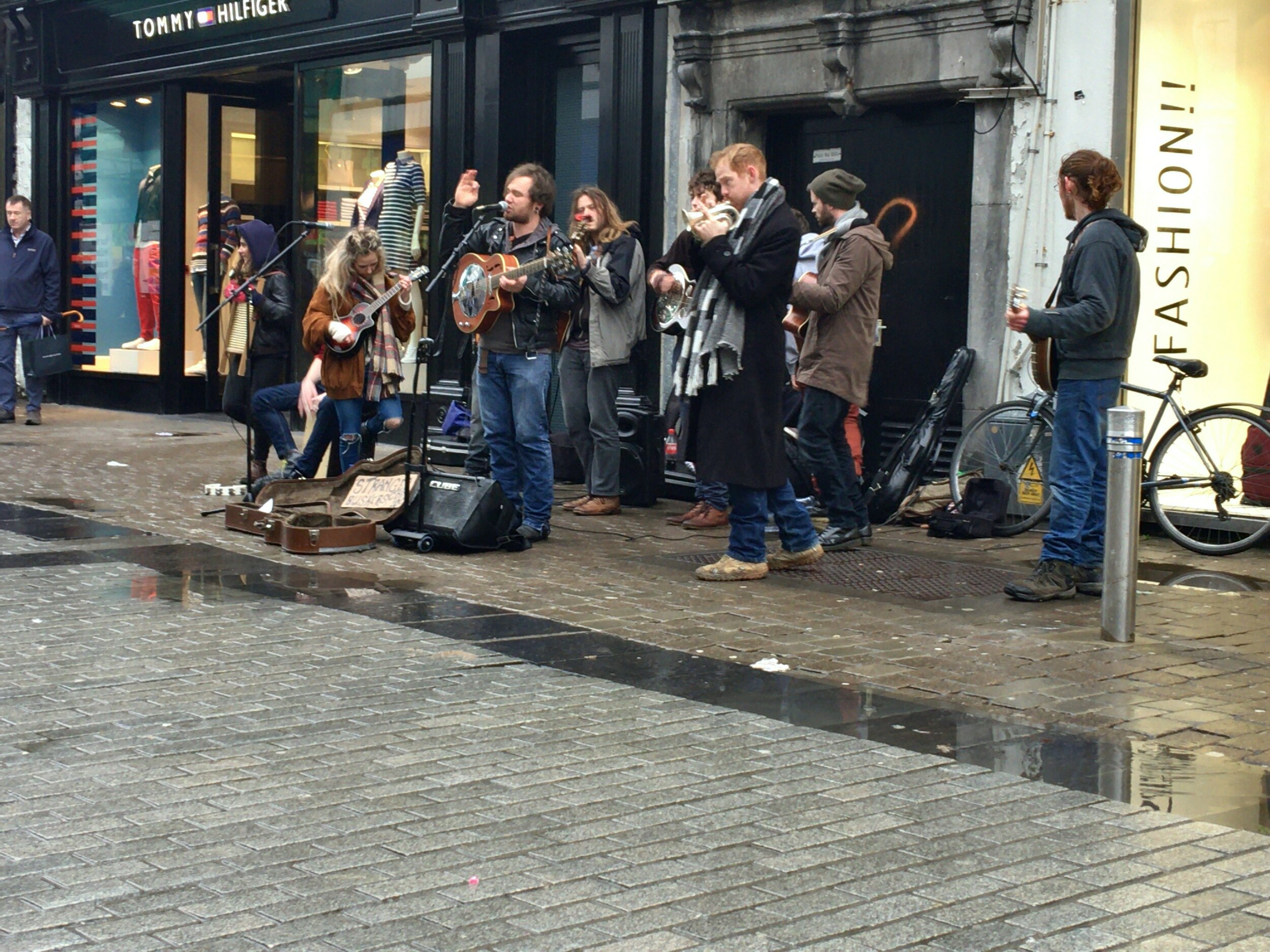
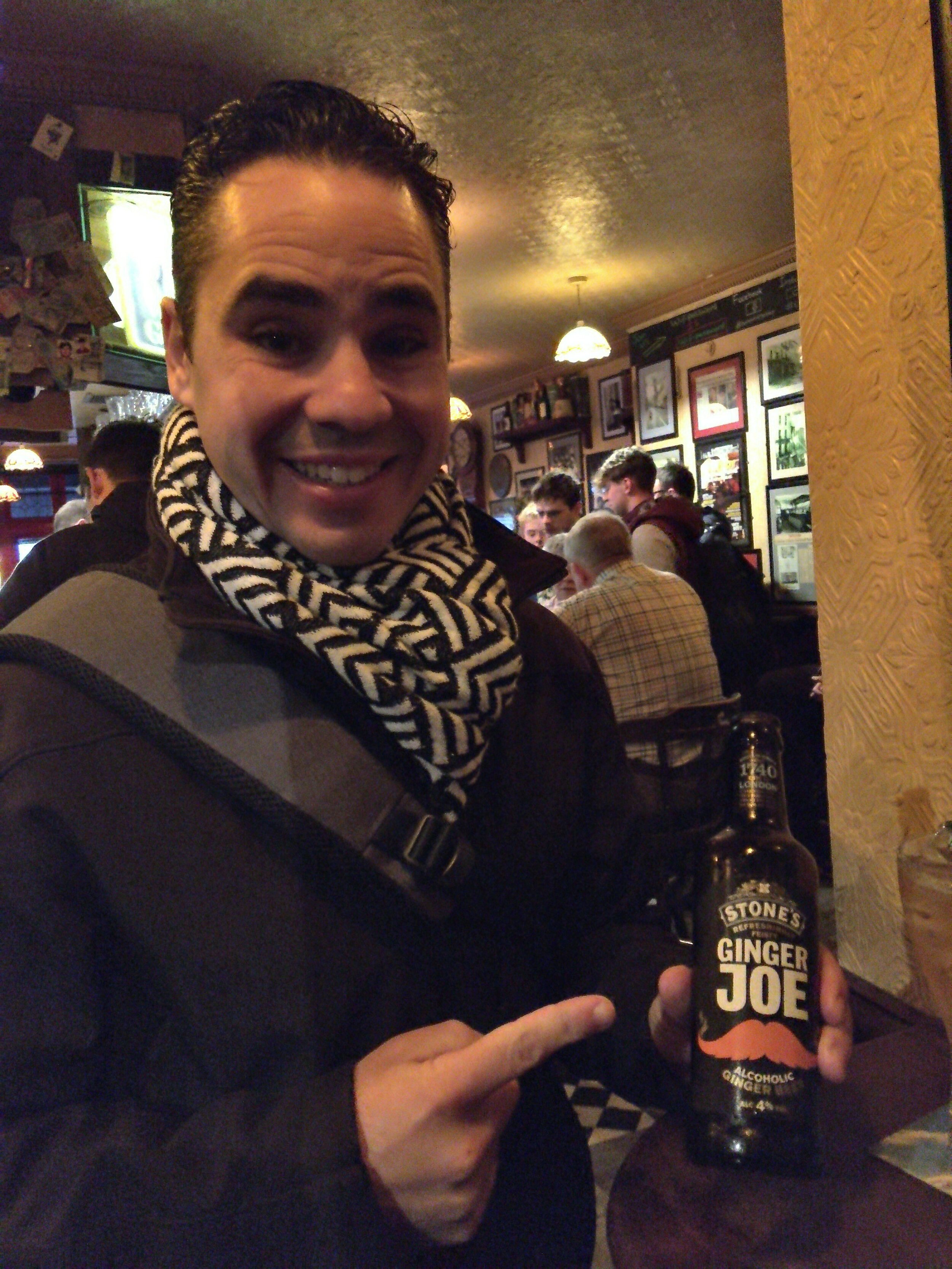
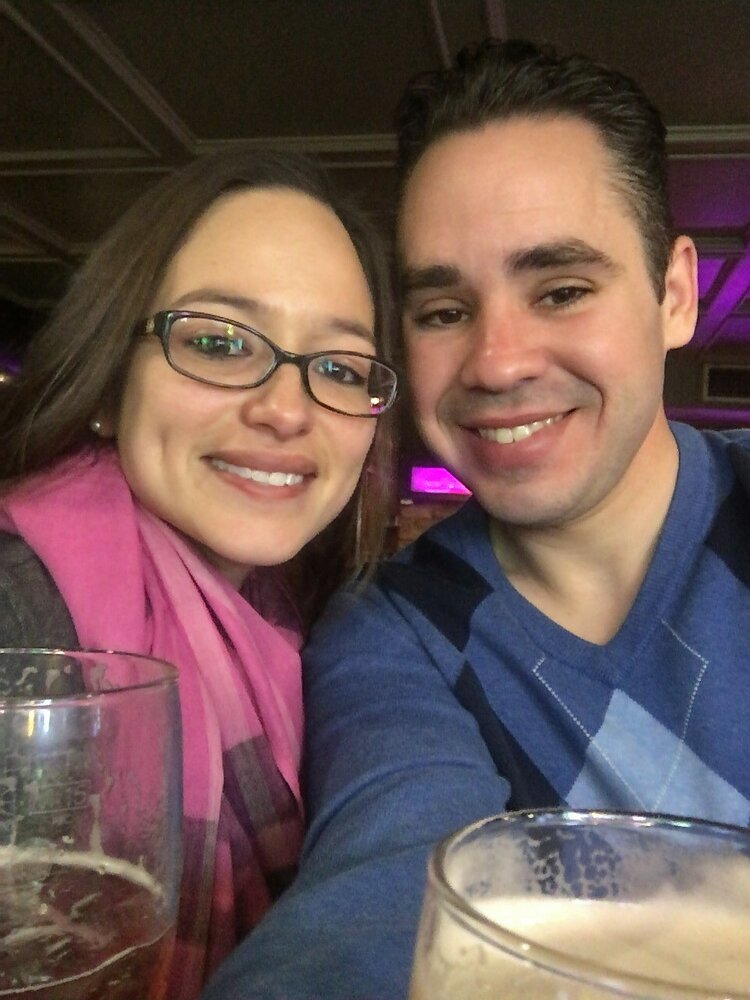
Day Fourteen:
“Of Hawk Flying, Cong, and Patrick from Hibernia”
From Galway, we made our way to Cong, a small village to the north of Galway. This village is home to Ashford Castle, where we would be doing our Hawk Walk, as well as being the primary location for the movie The Quiet Man. The area around Cong is filled with luxurious houses and mansions, clearly a more affluent area of Ireland. We came here last time in Ireland, and really enjoyed it; mostly because while all our fellow tourists went to the cafes and shops, we bought bread, cheese, and chorizo and had a picnic by the nearby river where a monk had built a fishing hut out of the local river. It was peaceful and beautiful.
We arrived at Ashford Castle and were greeted by a man in a cloak who guided us to The Ireland School of Falconry. There we were greeted by Alec our guide. He gave us information on the hawks, their personalities, and little quirks. He showed us what we would be doing on the hike and how to send and call our hawks. As a funny aside, Cynthia's hawk, Rua, was the alpha female. In this particular hawk species, the females are the dominant ones. Not far from Rua's pen was a large owl. Alec told us that before we were to leave, he would need to block the view to the owl, whose name is Dingle, or else Rua would murderously attack his pen. They don't know precisely why Rua hates Dingle so much; their only theory is that in the wild he would be a possible predator and she is protecting her group. In fact, if she saw Dingle, and they still took her on a hike, at some point during the walk, she would fly off from wherever she was to relentlessly attack his pen.
My hawk was a younger hawk named Aztec. His story is that he loves water. If he ever flew off, they knew that there was a spot near the castle they could find him, the courtyard's fountain.
We flew our hawks in the forest; they would fly off our hands, and we would call them back with pieces of meat or chicken. It was amazing to see the birds in flight, to feel the wind when they'd bat their wings. At one point Aztec flew off, and it was very quiet. Suddenly and silently, he made a bullet line towards a small group of blackbirds that were congregated by a wall. Alec told us that what we witnessed was very rare because usually, those birds are too fast, and the hawks don't bother, but Aztec felt since they were in a corner, there was a shot.
Eventually, the heavy rain belabored the poor hawk's wings, so we walked back to the main area, and were able to fly Dingle back and forth in a small room. It was an amazing experience.
From there we attempted to recreate our picnic from last time, but it was too cold and rainy, we decided to eat at the Hungry Monk Café whose hosts were incredibly friendly and polite; the food was good too!
That began a two-hour trek to Athlone, where we checked into our very quirky B&B, we rented the biggest room in the place, giving Cynthia space to repack all the luggage.
At 6:00pm we met my old friend Patrick, who I’ve known since 2001 from playing Dark Age of Camelot. We ate at a Lebanese restaurant and then went to Sean's Pub, the oldest pub in Ireland. It was nice to see Patrick and converse with him in person; he let us known that he and his wife were expecting a second child. His wife couldn't make it to dinner because she and their daughter were not feeling well.
A beautiful day, but one that was bittersweet because tomorrow we fly back to Miami. Farewell Hibernia.
